Complete guide to the highlights of Higashiyama Botanical Gardens
English | Japanese
The Higashiyama Zoo and Botanical Gardens features a botanical garden in an area adjacent to the zoo. The botanical garden has the oldest greenhouse in Japan, which is also designated as an important cultural property, and within its extensive grounds, numerous plants are planted in their natural state. In the spring, you can enjoy the cherry blossoms, and in the fall, the autumn leaves. Additionally, the flower field allows you to appreciate various flowers of each season. In this article, we will introduce the highlights of Higashiyama Botanical Gardens, targeting travelers from overseas as well as within Japan.
For a comprehensive overview of the entire Higashiyama Zoo and Botanical Gardens, please refer to 「Highlights and access methods of Higashiyama Zoo and Botanical Gardens (Aichi Prefecture)」.
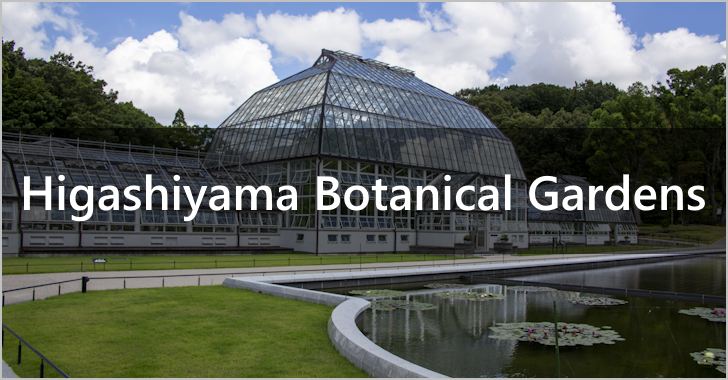
(Last modified: )
Table of contents
How to enter Higashiyama Botanical Garden
The zoo and botanical garden are connected, so those who enter the zoo can freely visit the botanical garden as well. To go from the zoo to the botanical garden, cross the footbridge located past the Kami-Ike where the boathouse is situated.
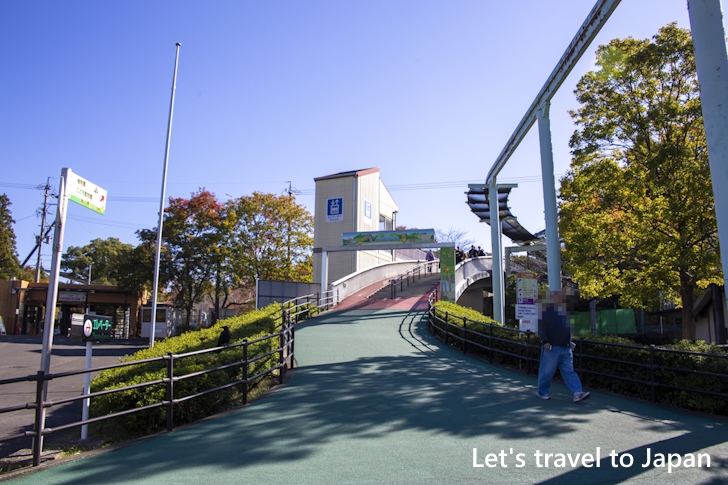
You can exit the zoo through the Kami-Ike Gate, cross the traffic signal, and enter the botanical garden directly from the gate in front of you. When you leave through the Kami-Ike Gate, make sure to obtain a "re-entry ticket", which you'll need when re-entering from the botanical garden gate.
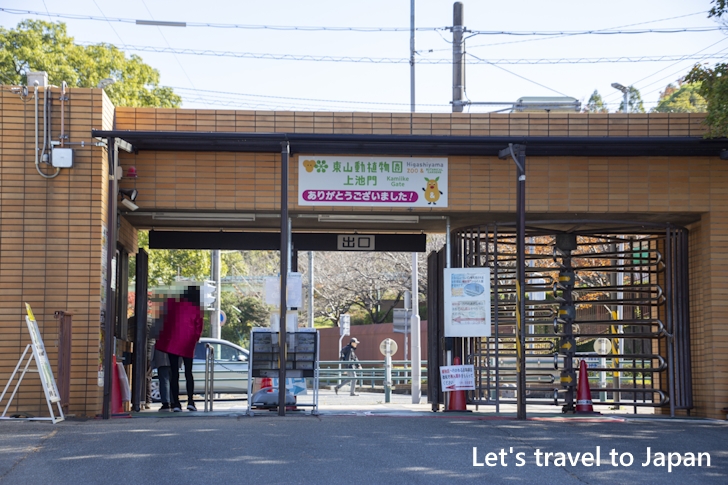
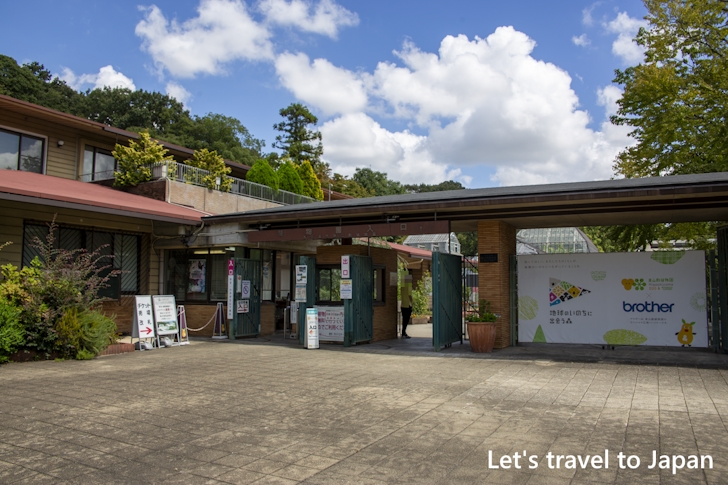
There is also a paid Skyview Train that connects the zoo and botanical garden. There's a station immediately on the left after entering the zoo from the main gate, which is convenient if you want to head straight to the botanical garden after entering the zoo.
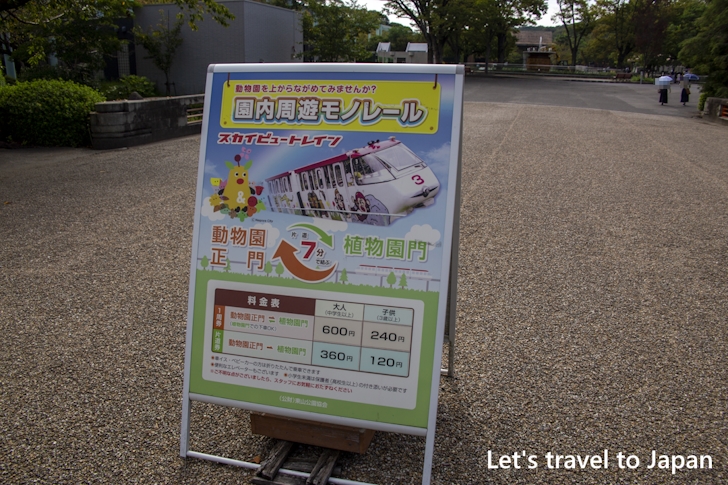
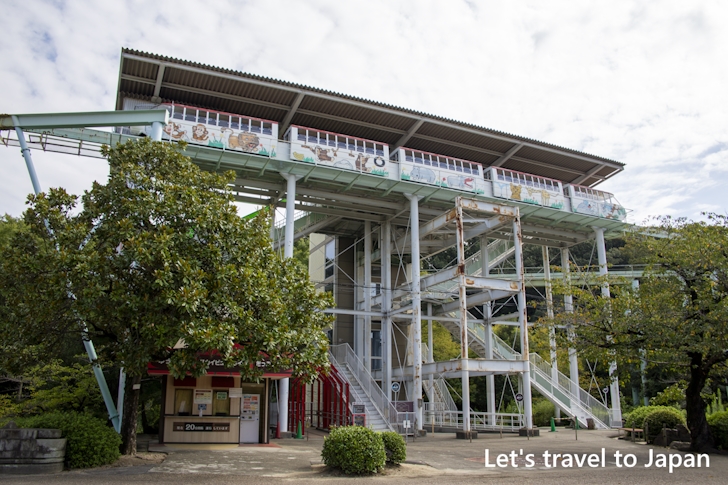
Moreover, you can also enter the botanical garden from the Hoshigaoka Gate.
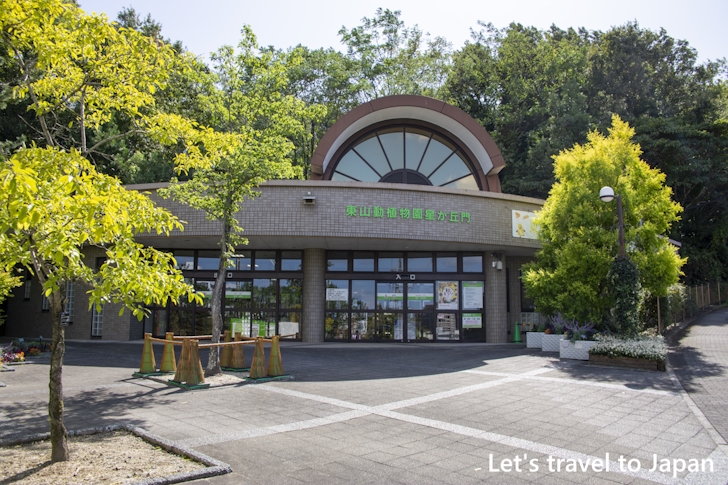
By walking through a short tunnel, you'll emerge near the Japanese garden within the botanical garden.
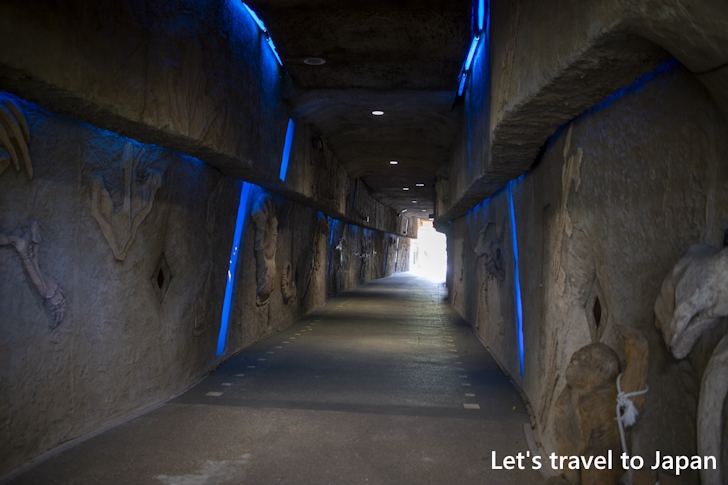
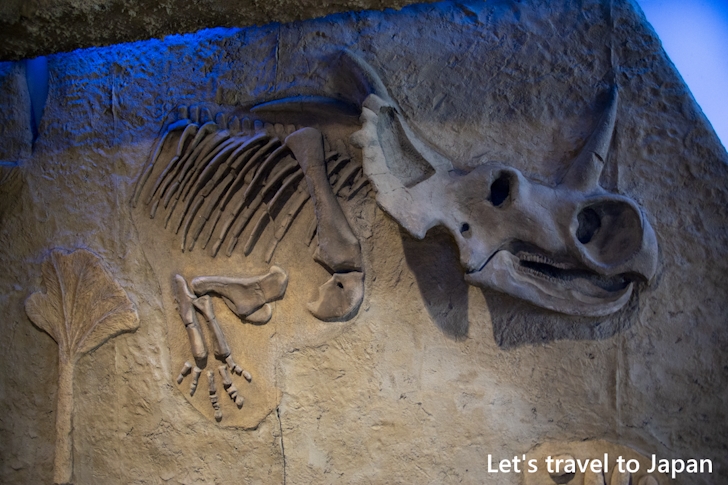
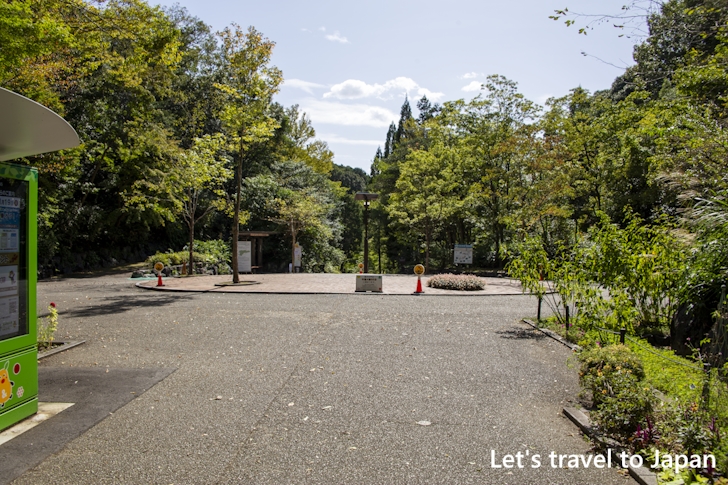
The Front-Greenhouse
The greenhouse of Higashiyama Botanical Garden consists of two buildings: The Front-Greenhouse (Zenkann) and The Back-Greenhouse (Koukann). The Front-Greenhouse is the oldest existing greenhouse in Japan and has been designated as a national Important Cultural Property.
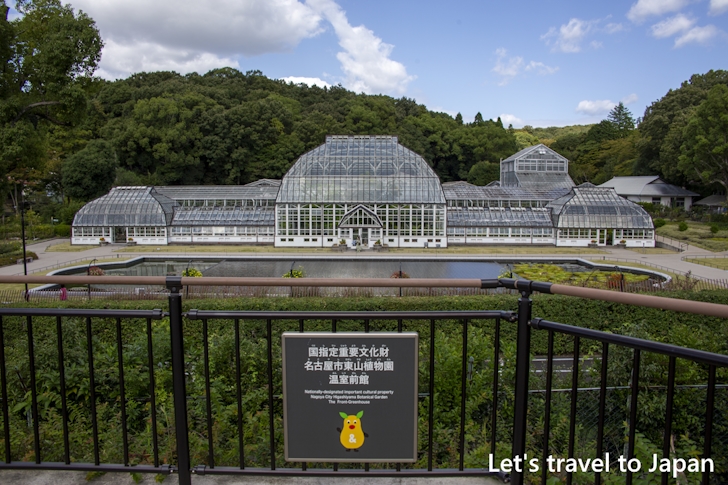
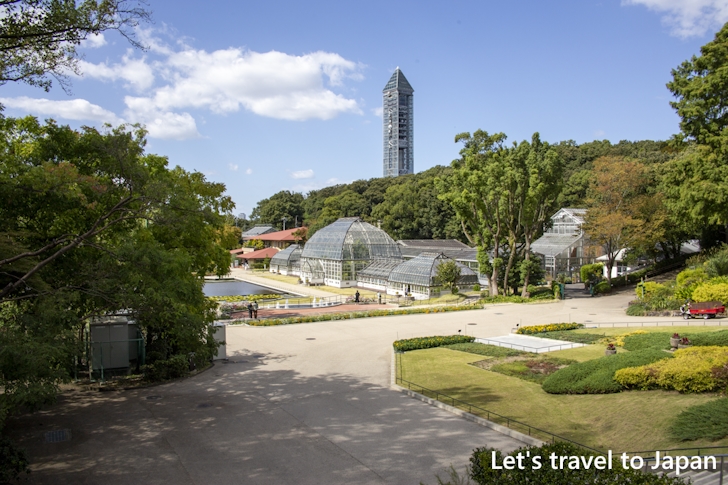
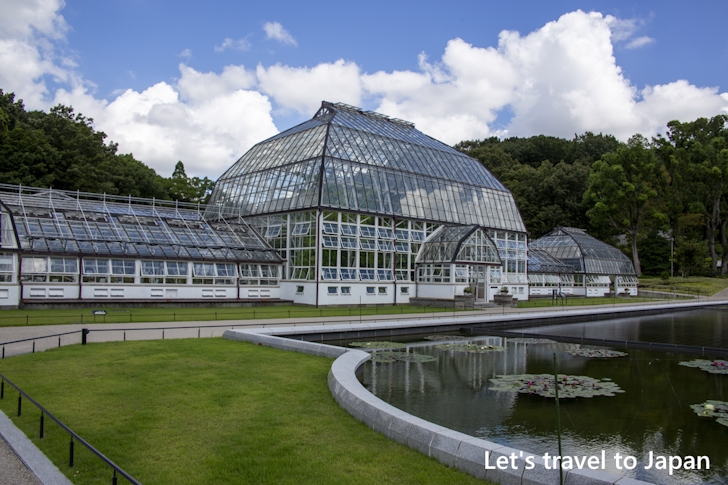
The Front-Greenhouse is divided into five exhibition rooms. From the front view, moving from left to right, they are the "Succulents Room", "West Flower Room", "Central Palm Room", "East Flower Room", and "Fragrant & Useful Plants Room".
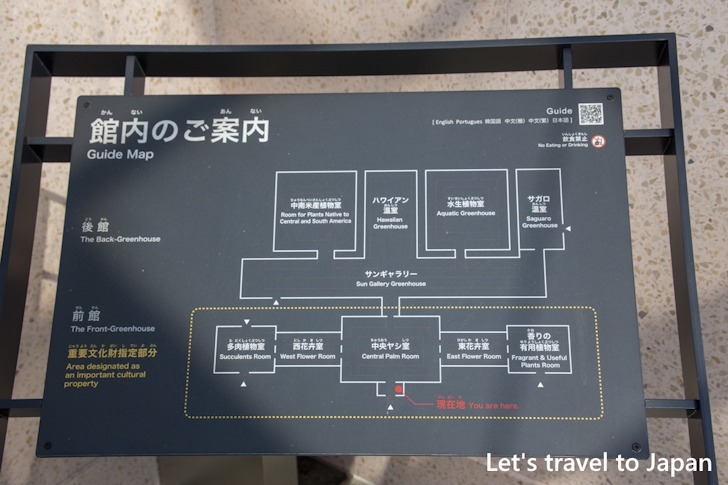
Succulents Room
In the Succulents Room, a variety of succulent plants from places like Africa and Madagascar are on display.
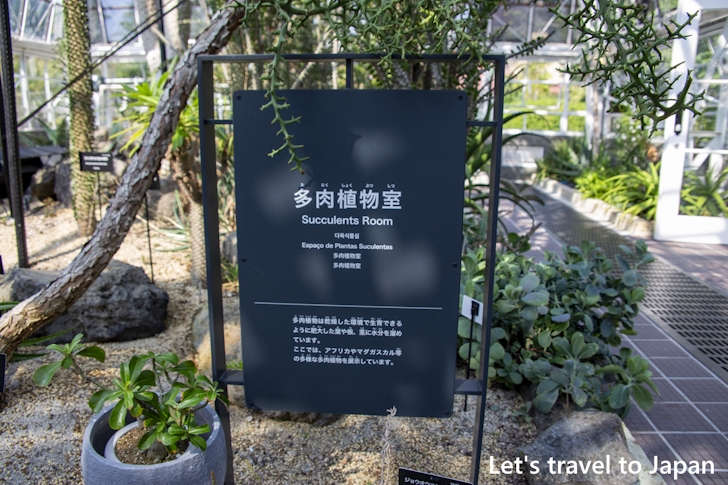
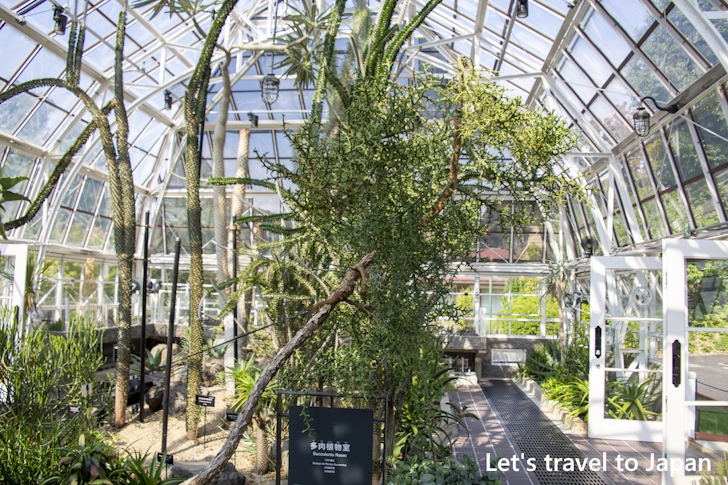
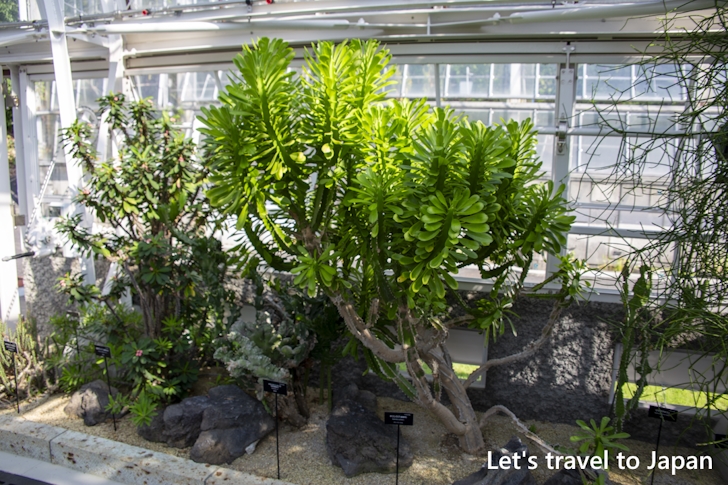
This is Aryuboku.
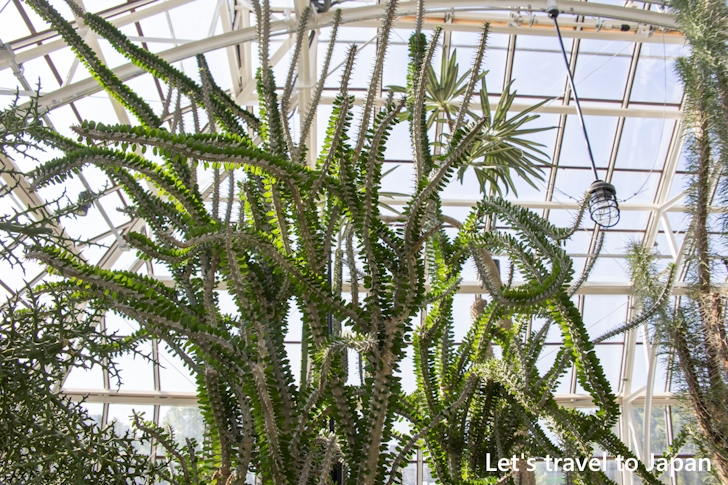
This is Onikirimaru.
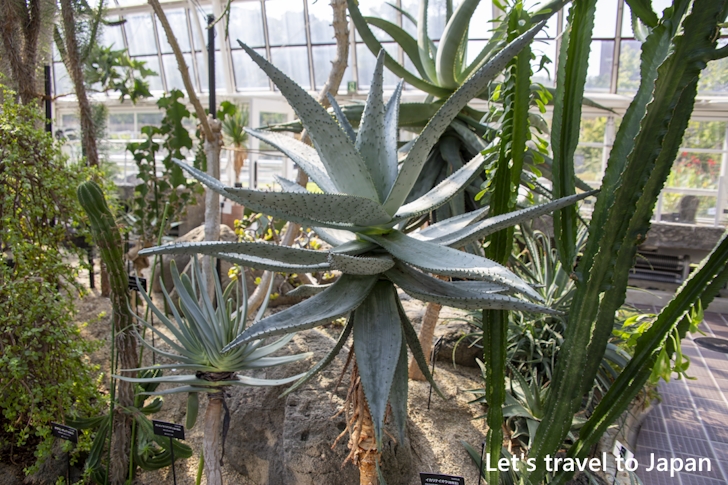
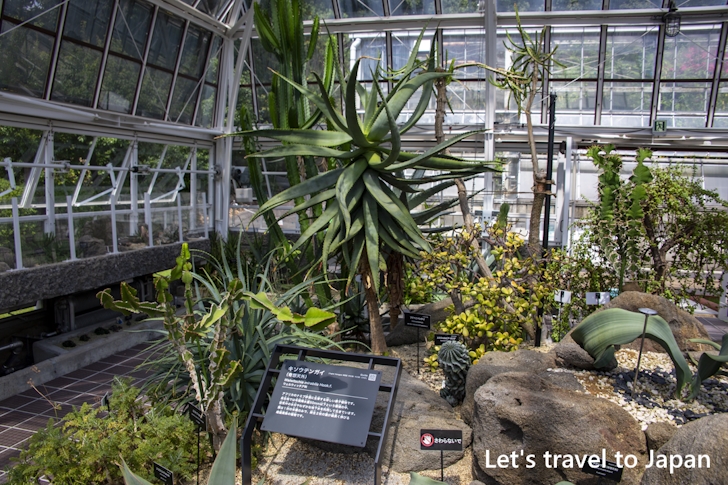
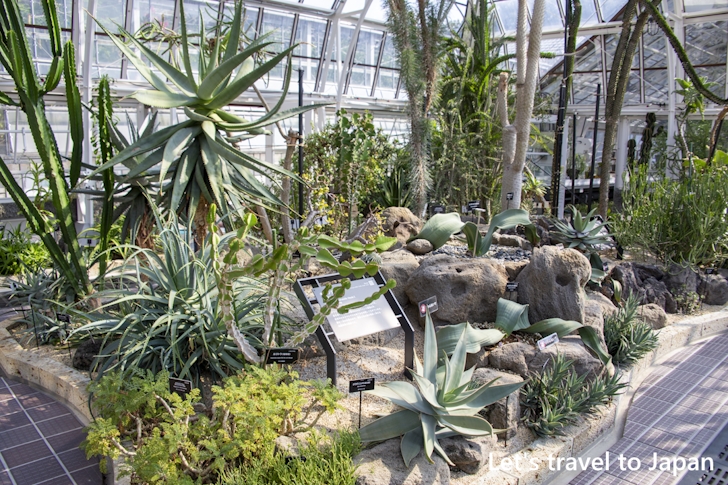
This is Kisou-Tengai.
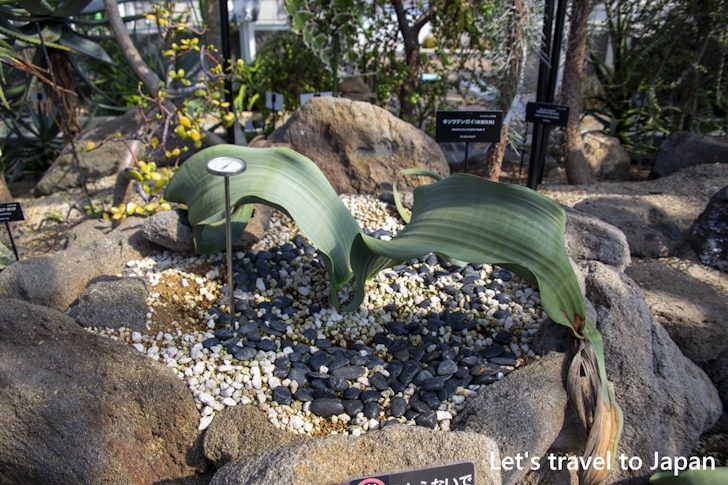
This is Aasoukai.
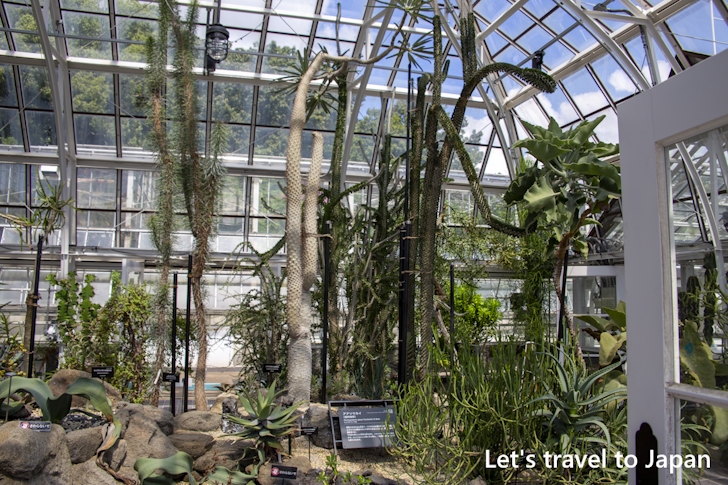
This is Aloe Andongensis.
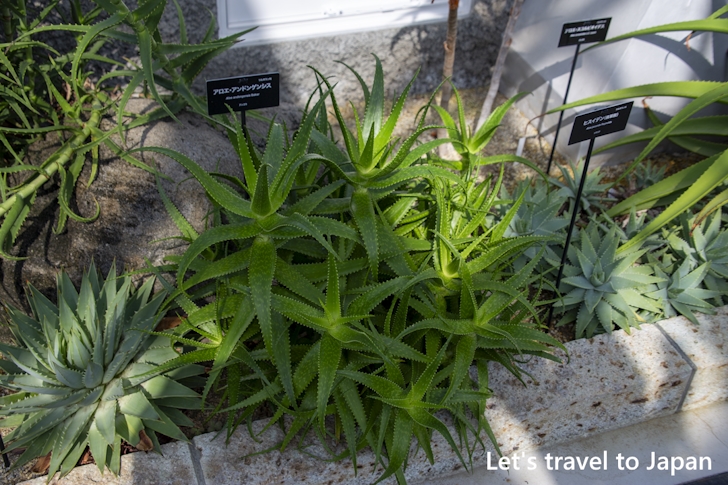
This is Kuromarishiten.
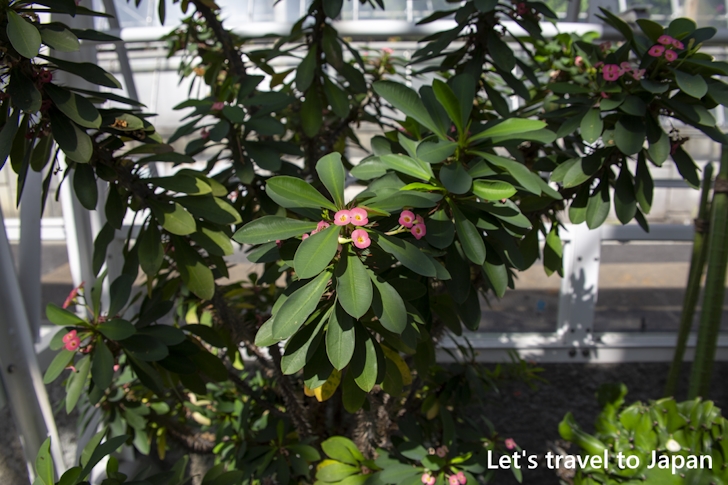
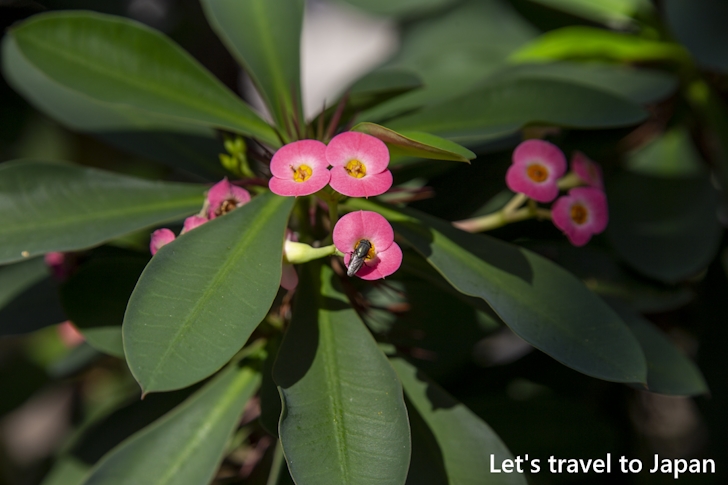
West Flower Room
The West Flower Room is a classic exhibition space adorned with seasonal potted flowers on the shelves.
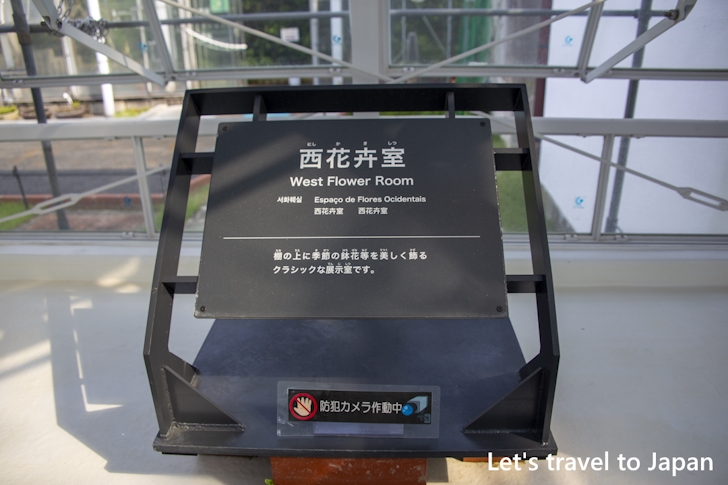
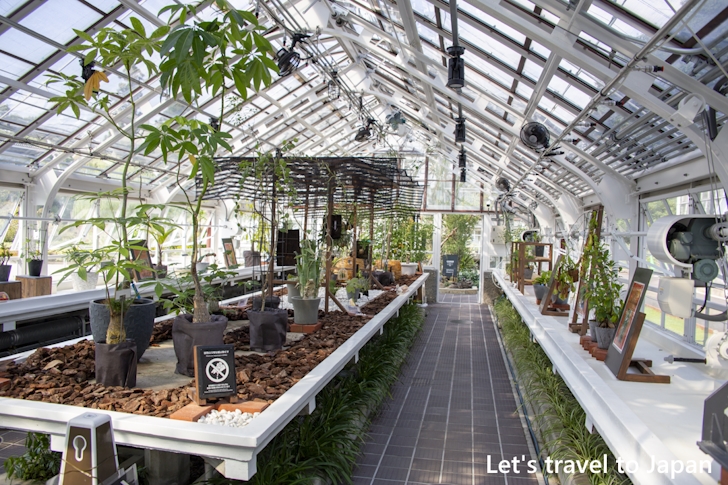
This is a Ficus microcarpa(Gajyumaru).
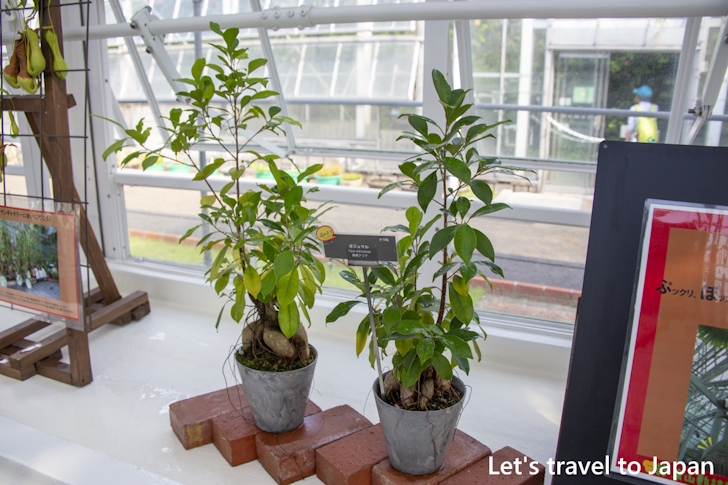
This is Sango-Aburagiri.
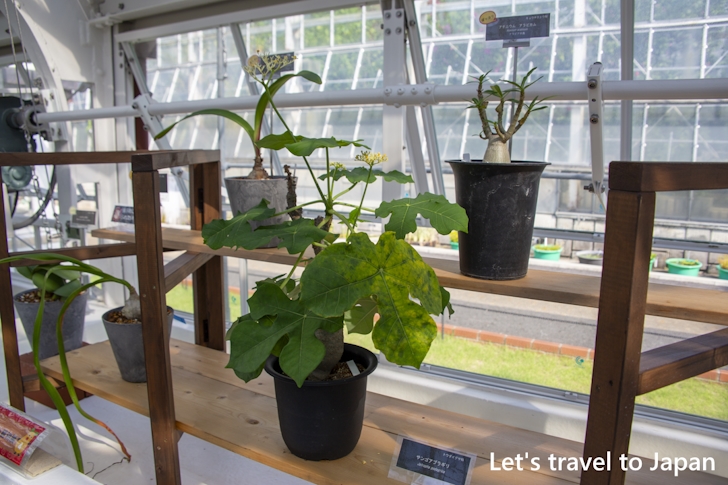
This is Tokkuriran.
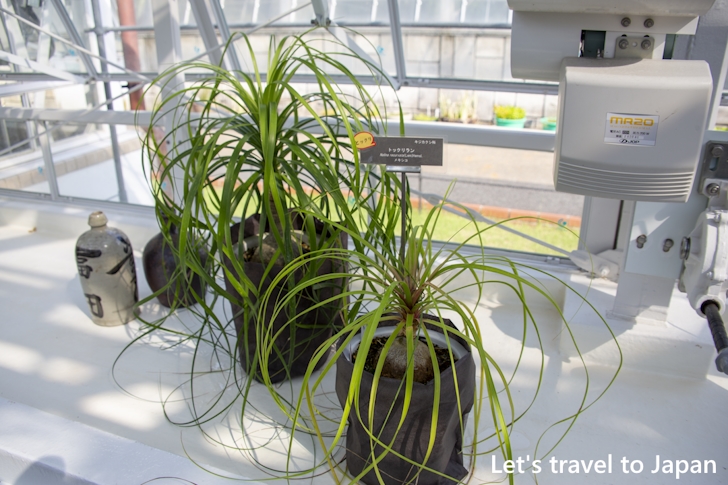
This is Baobab.
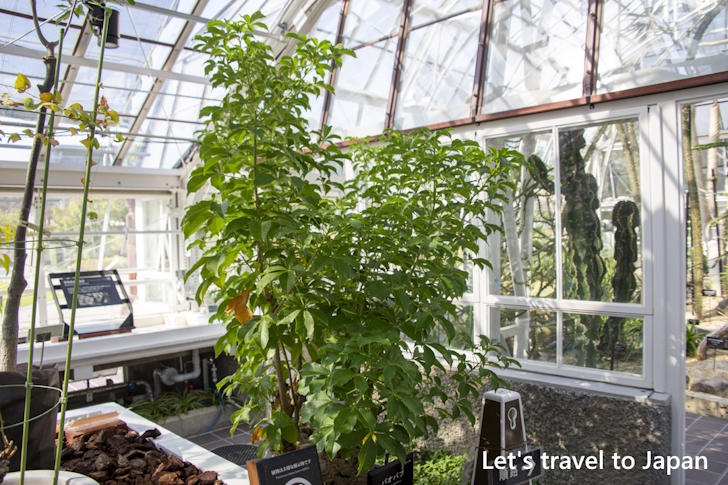
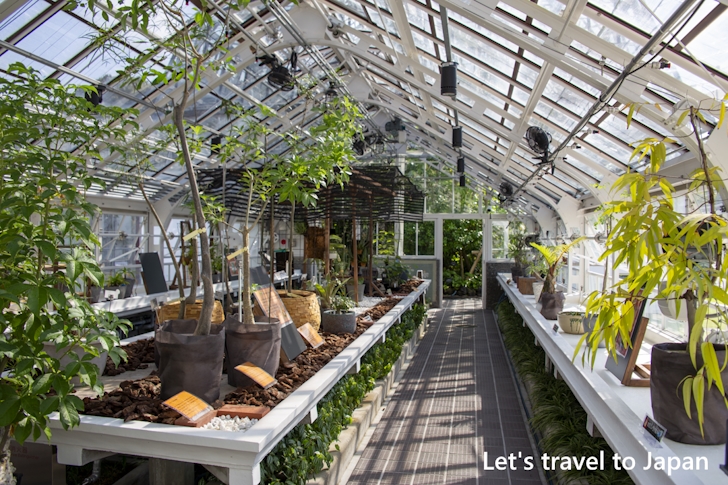
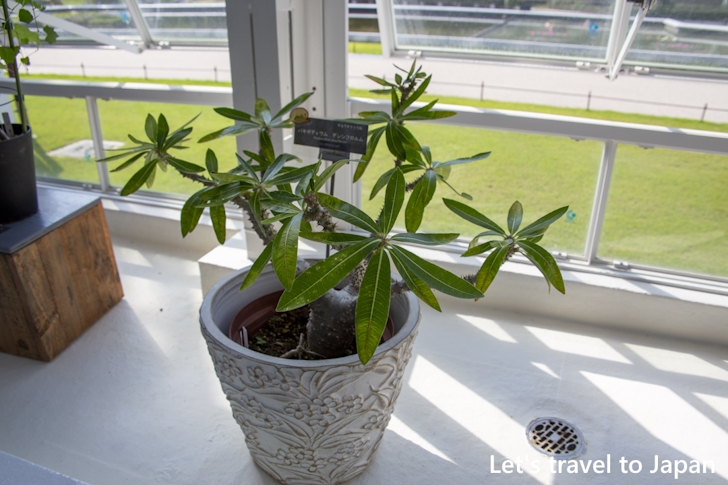
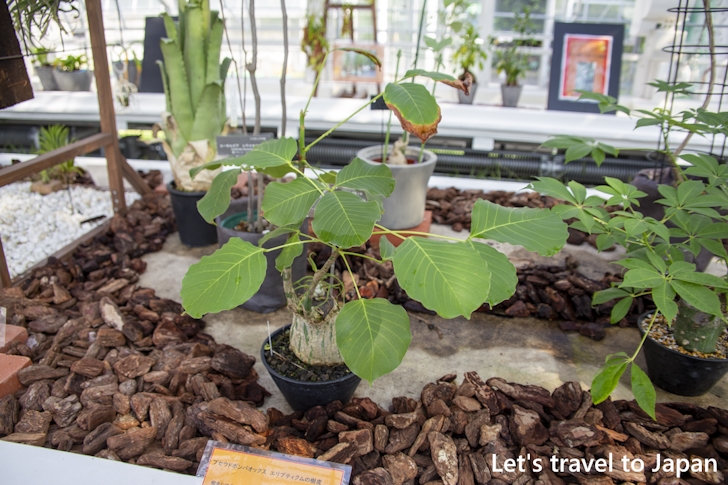
This is Pachira-Aquatica.
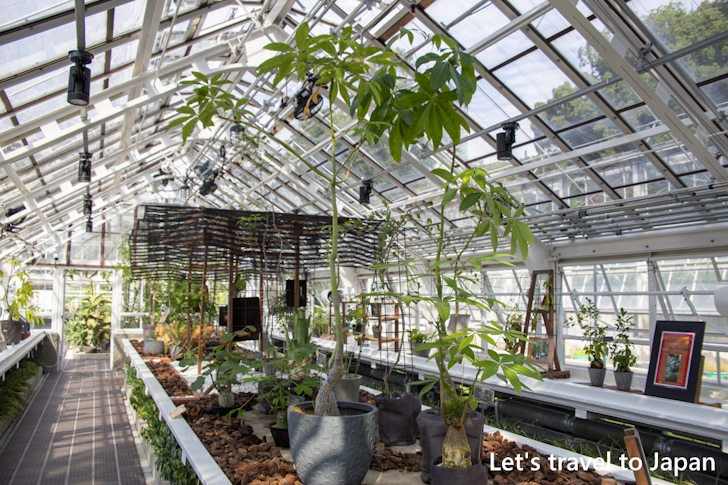
This is Zephyranthes Rosea.
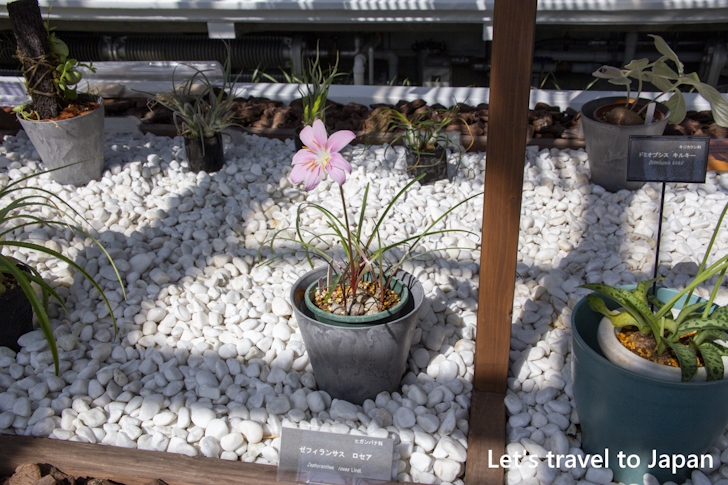
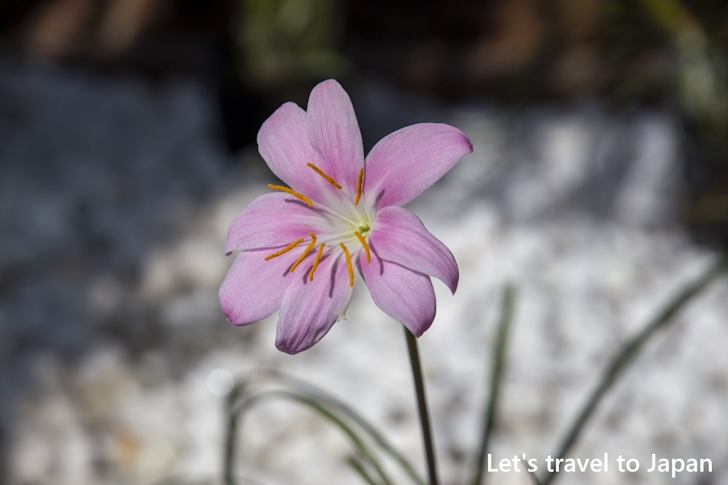
Central Palm Room
In the Central Palm Room, tall palm species and tropical trees are arranged.
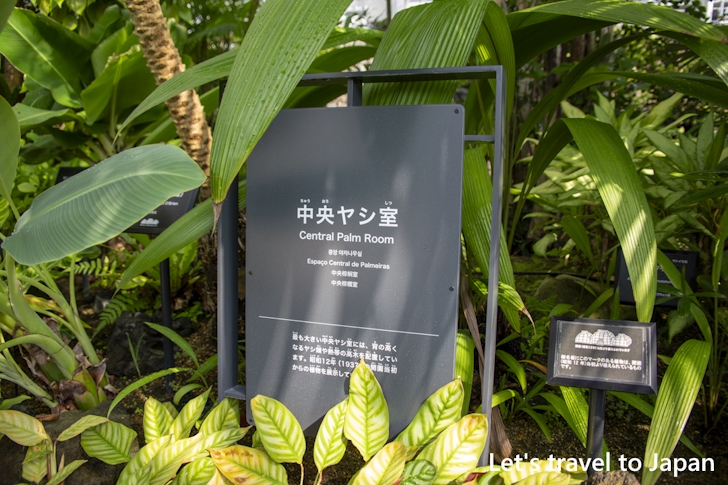
This is Shinnouyashi.
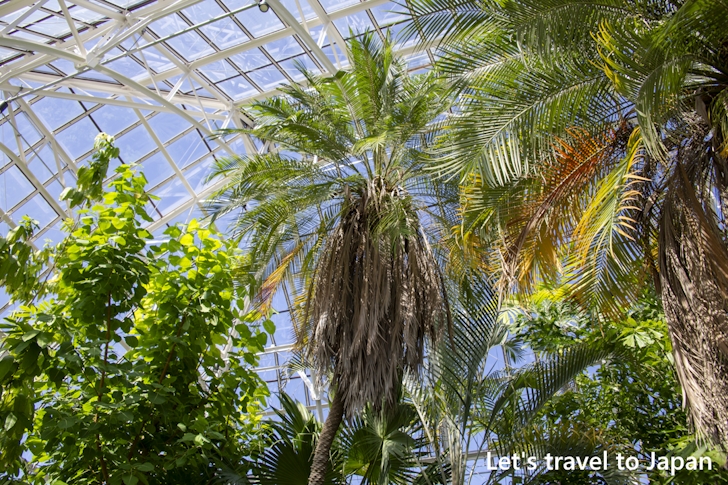
The three sacred trees of Buddhism are Saraca asoca(Muyuju), Ficus religiosa(India Bodaijyu), and Shorea robusta Gaertn(Salanoki).
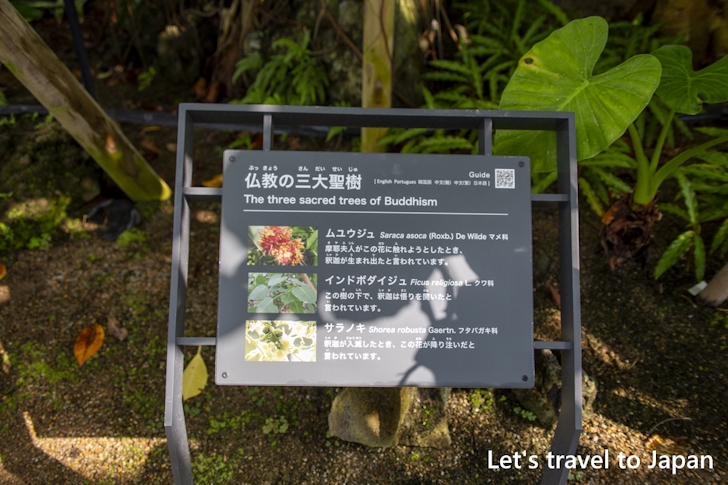
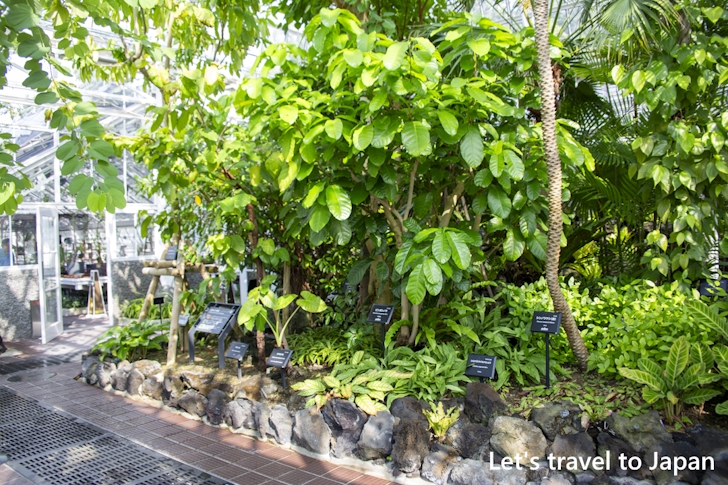
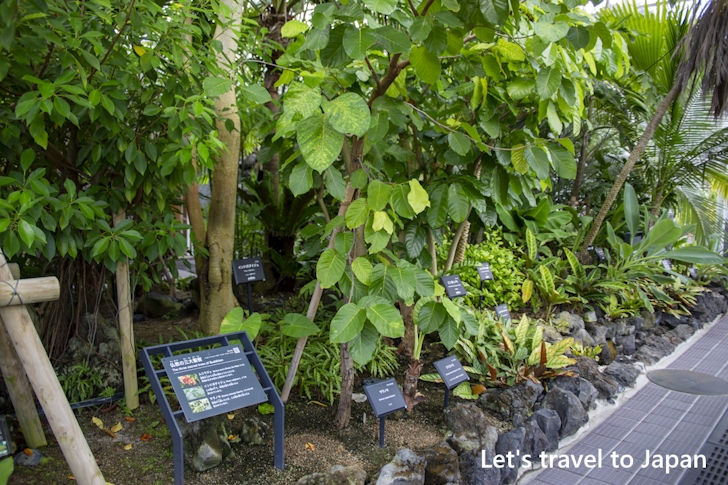
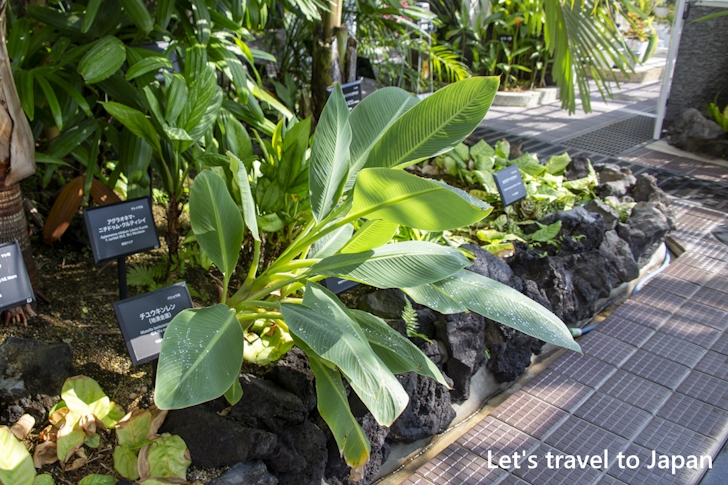
This is Tokkuriyashi.

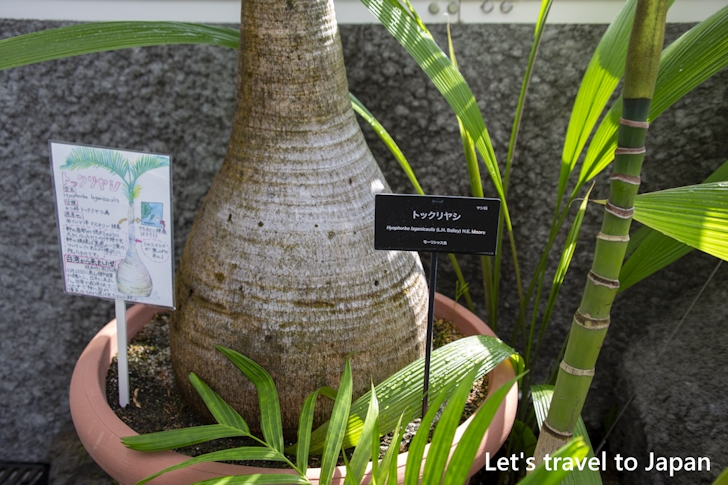
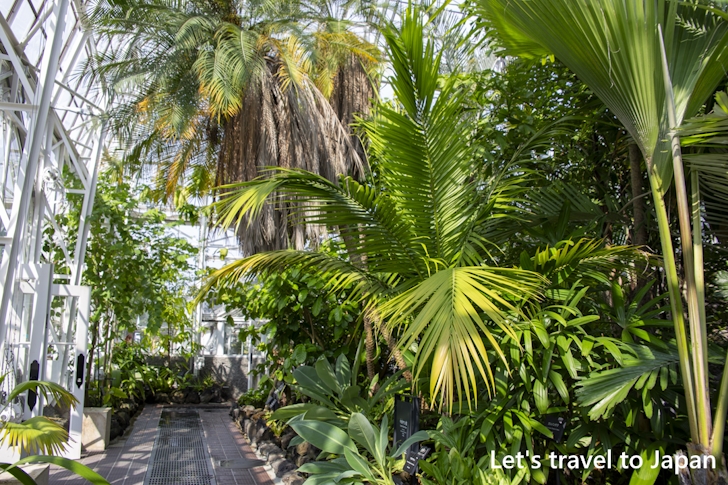
This is Indian-Sokei.


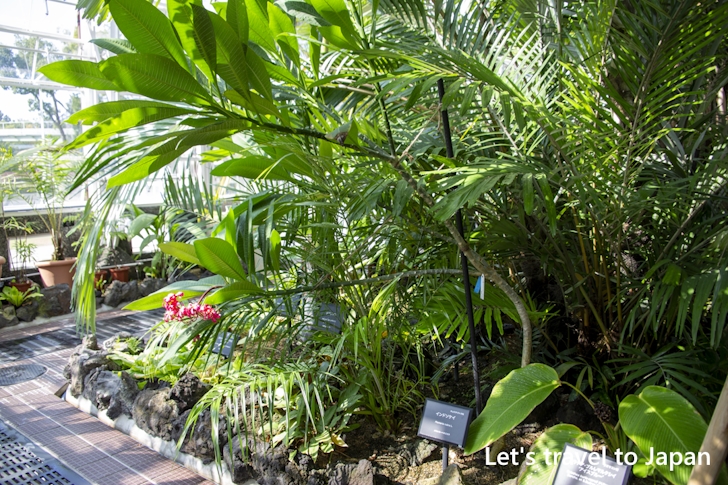
This is Indian-Gomunoki.
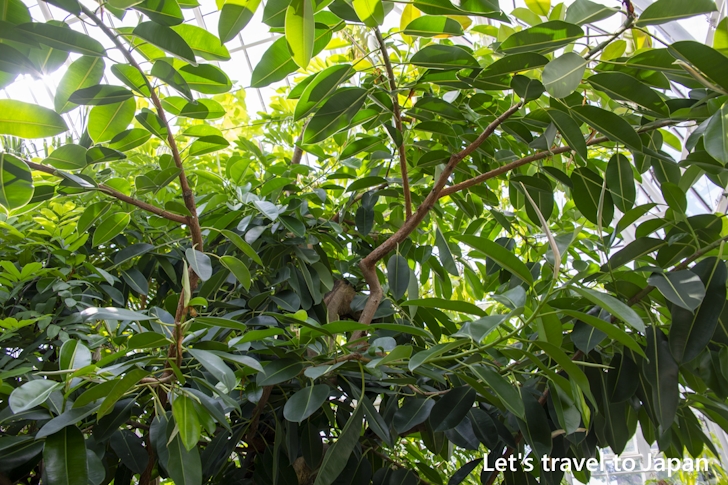
East Flower Room
The East Flower Room is designed like a garden with a pond, crafted with the image of a stylish conservatory in mind.
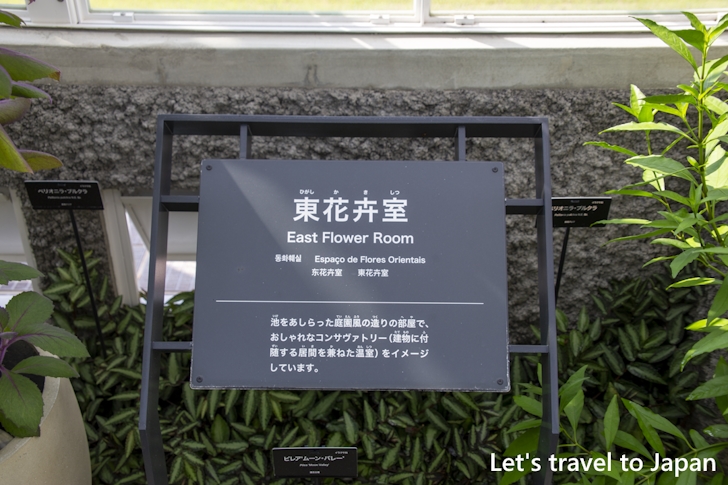
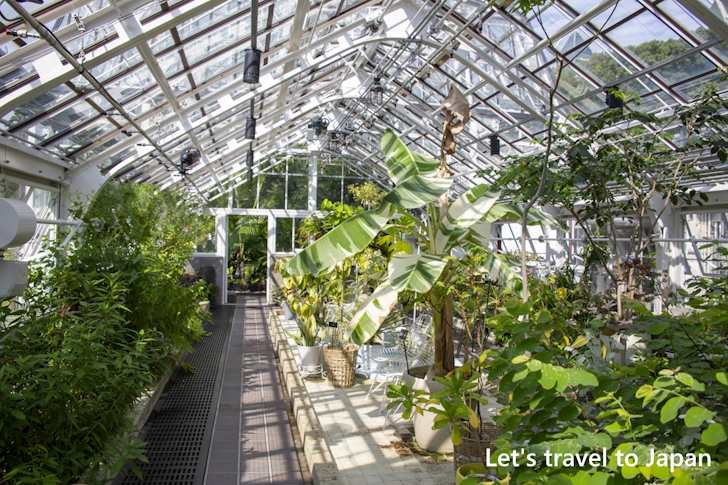
This is Banana.
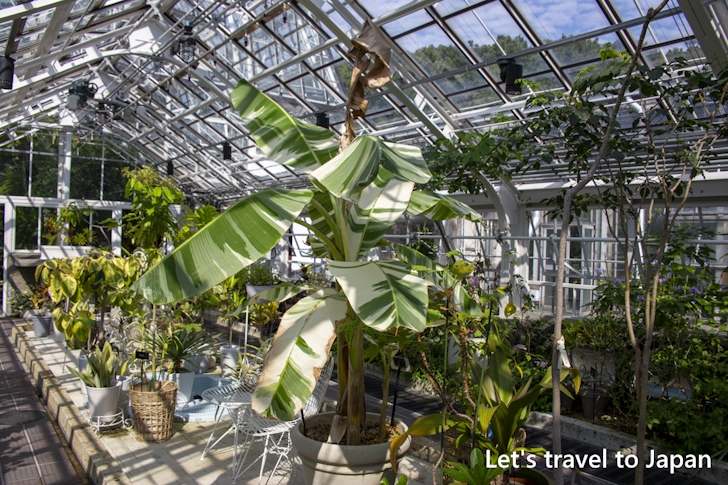
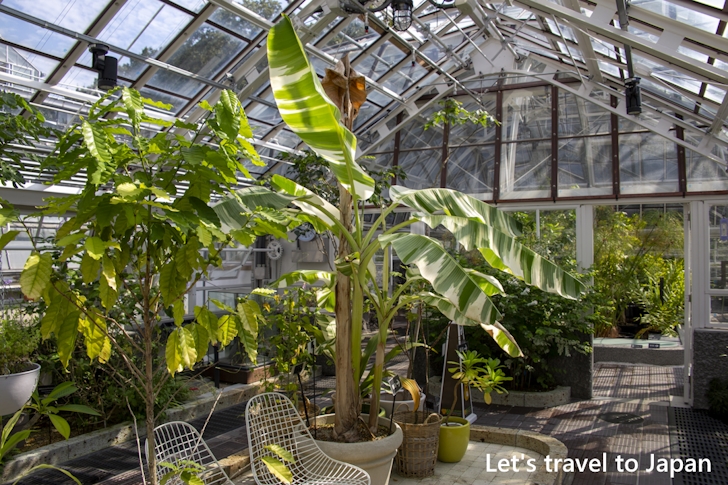
This is Hibertia-Scandens.
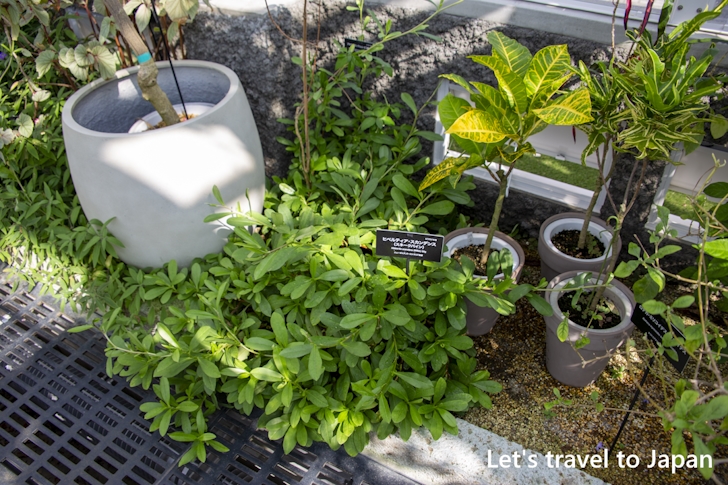
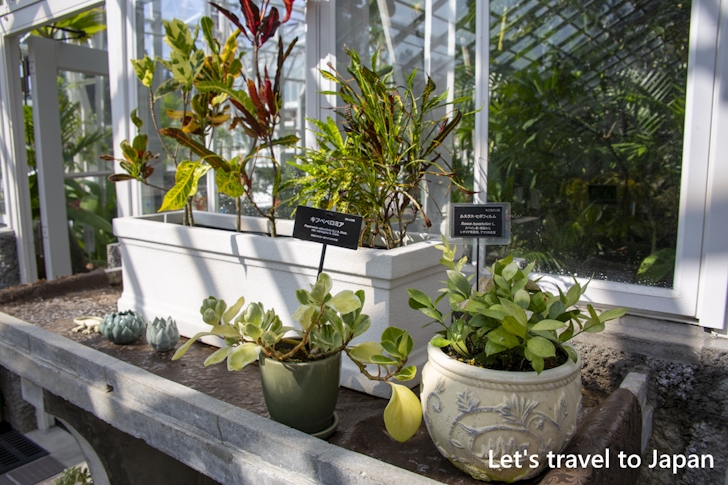
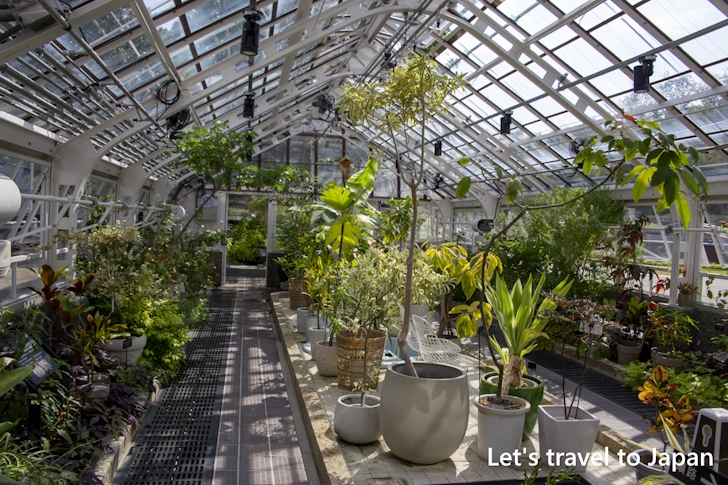
This is Ipomoea-Batatas. (Ipomoea batatas is a sweet potato).
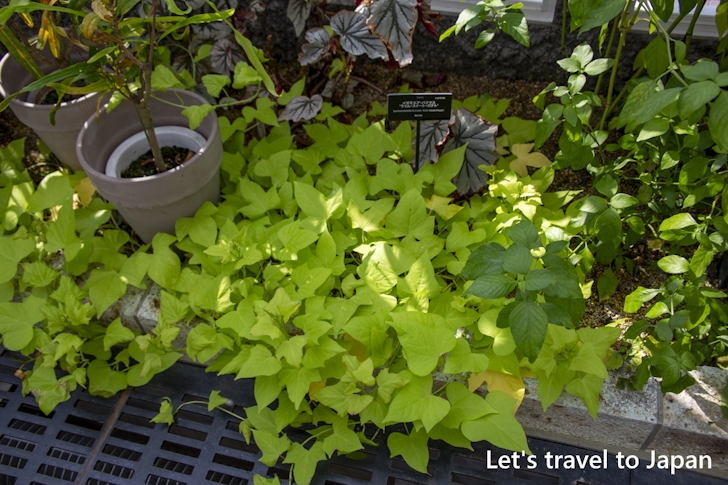
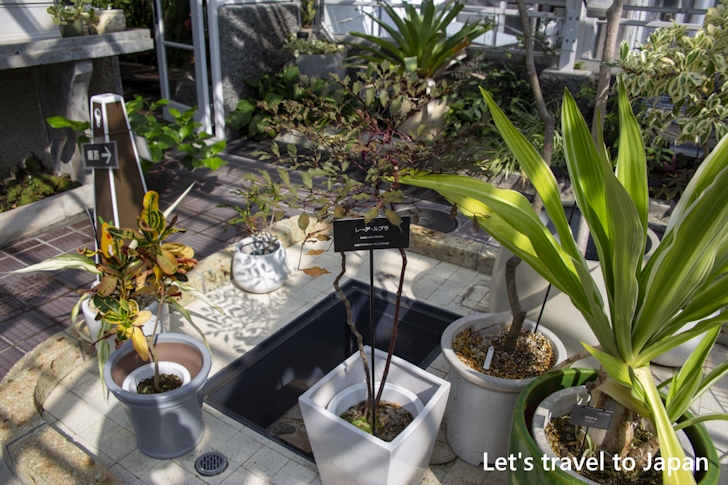
This is Coffee-Tree.
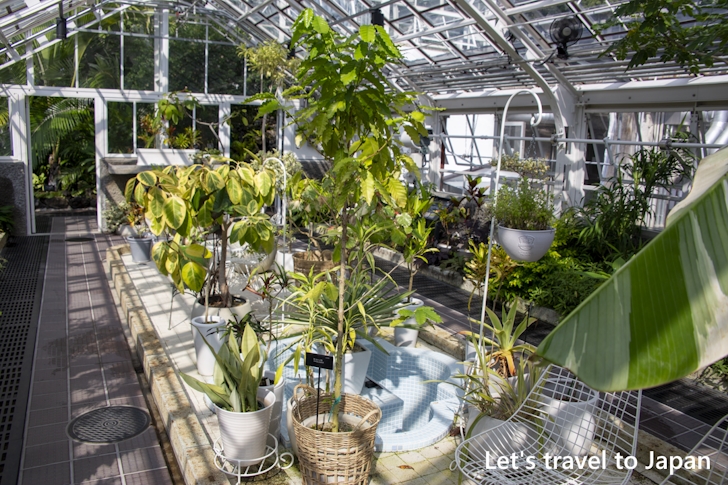
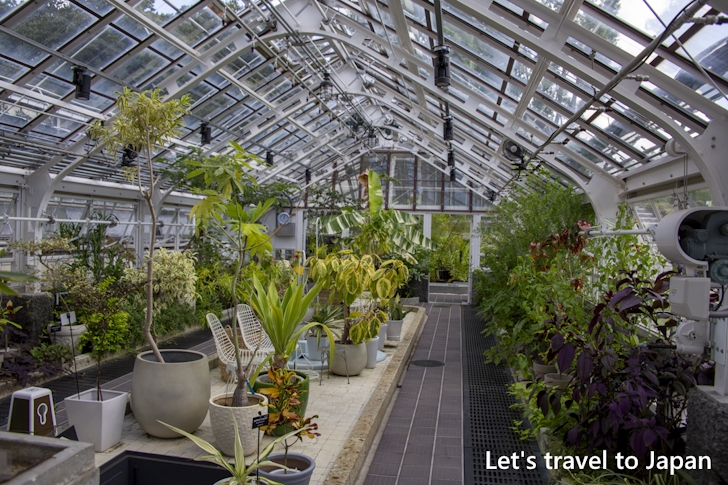
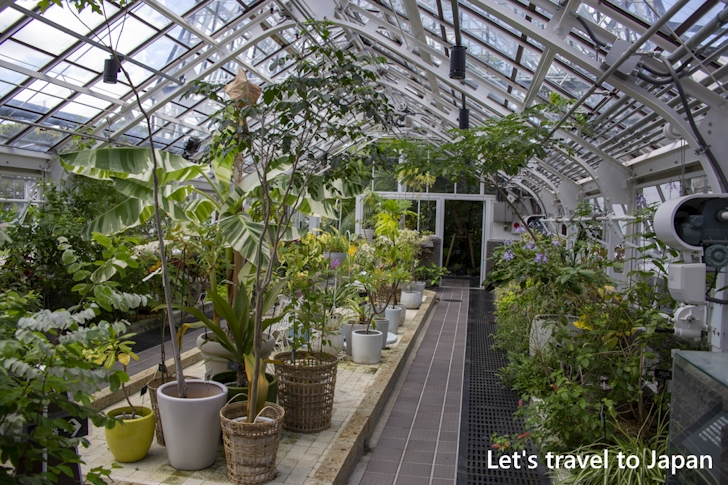
This is Crinum.
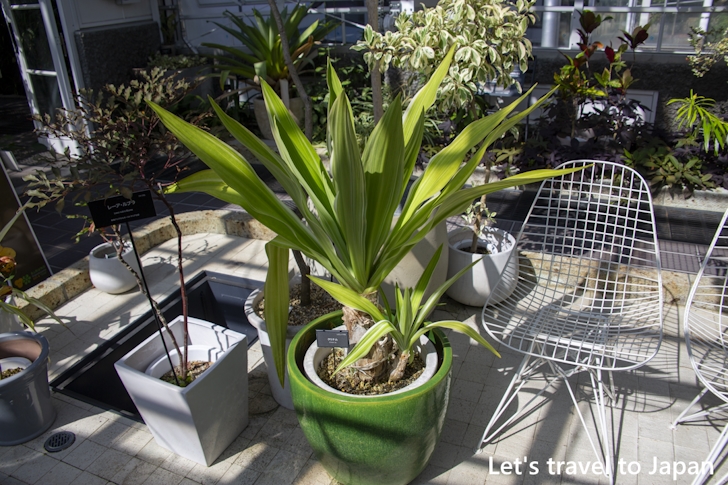
Fragrant & Useful Plants Room
The Fragrant & Useful Plants Room showcases plants themed around their scents.
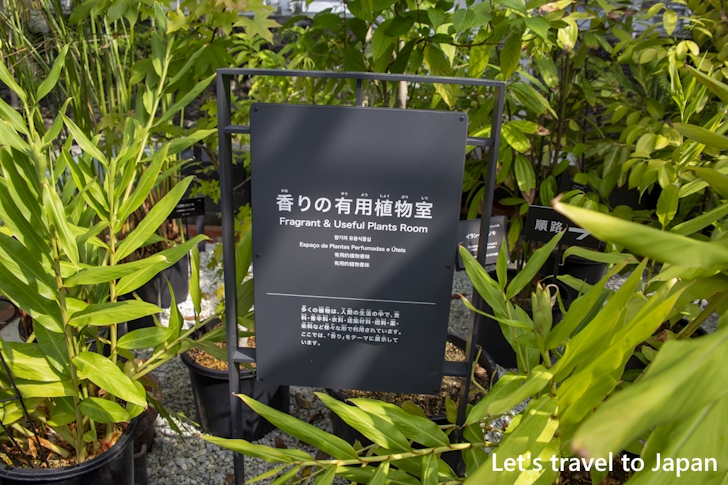
This is Cyperus papyrus.
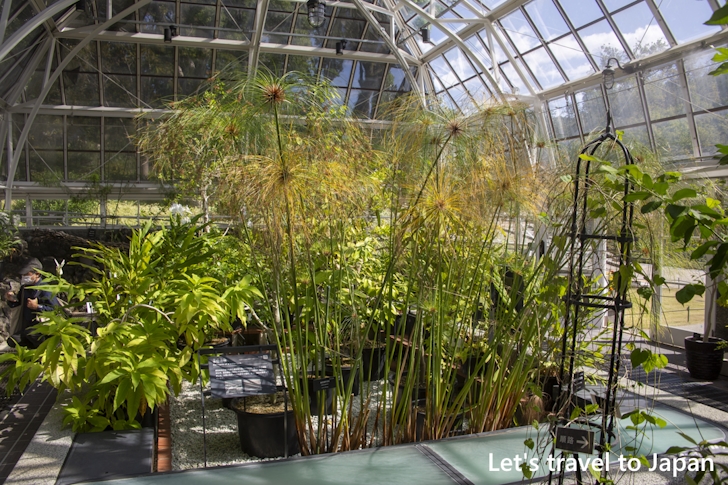
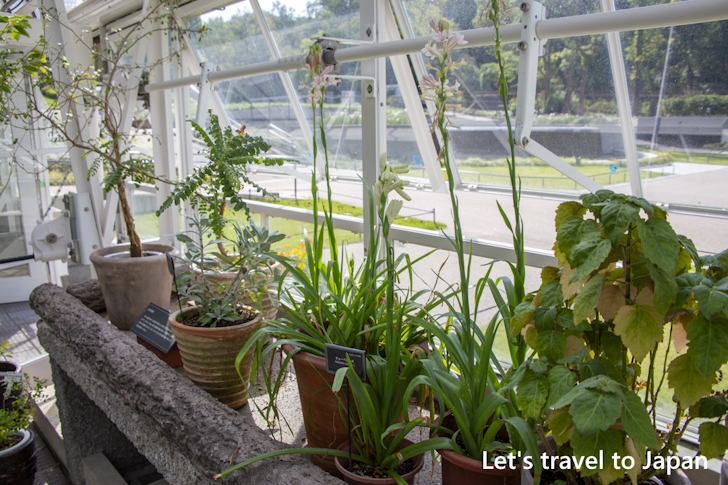
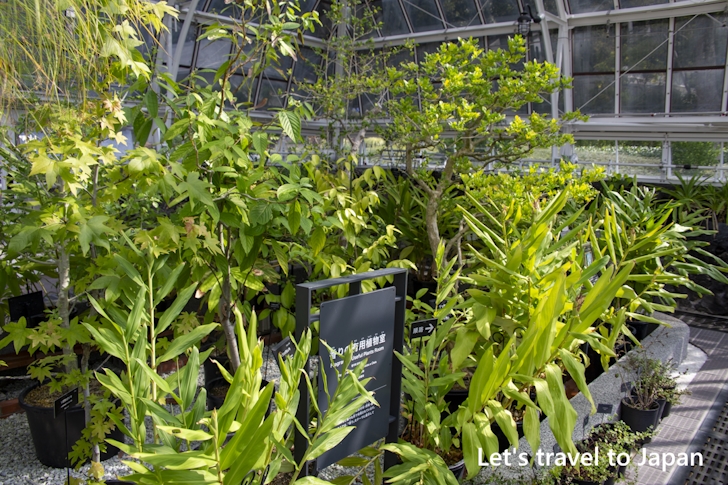
This is Hanashuksha.
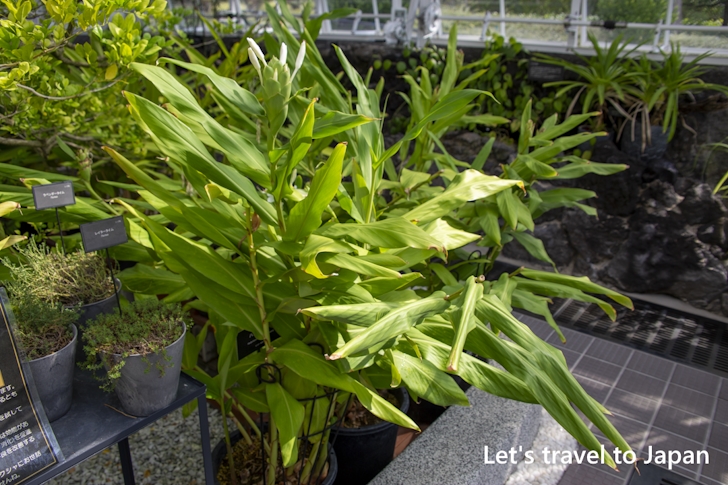
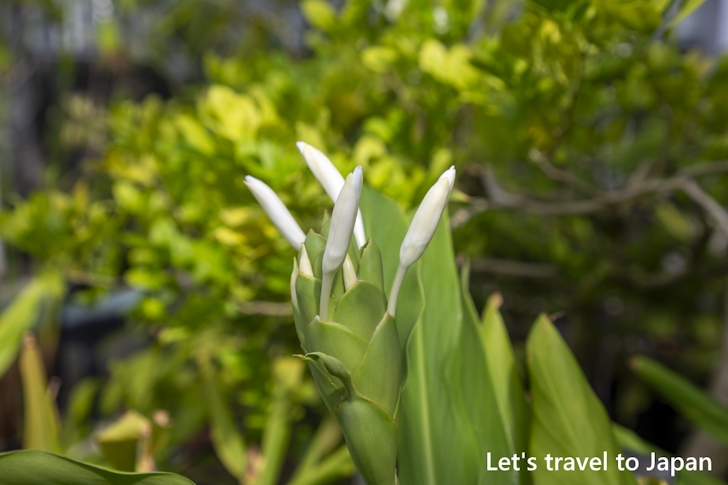
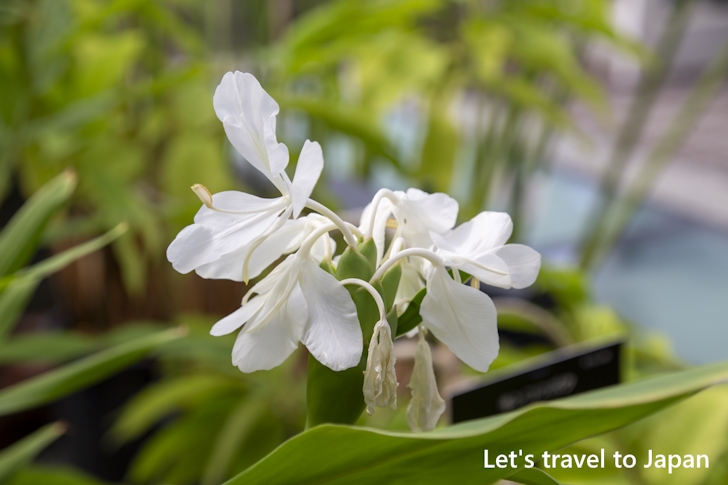
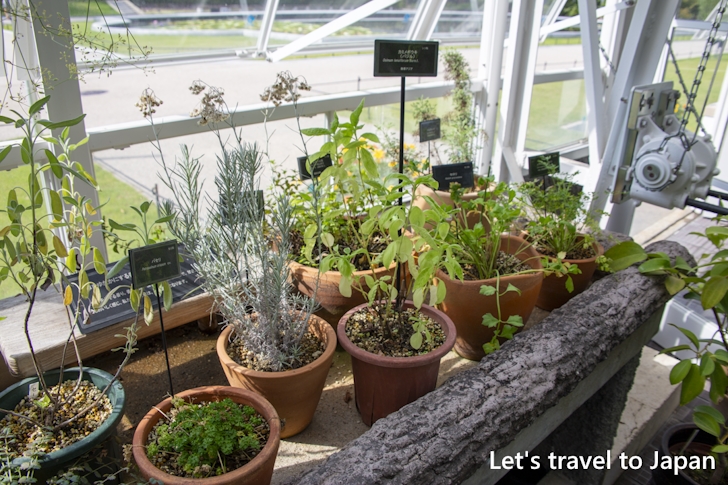
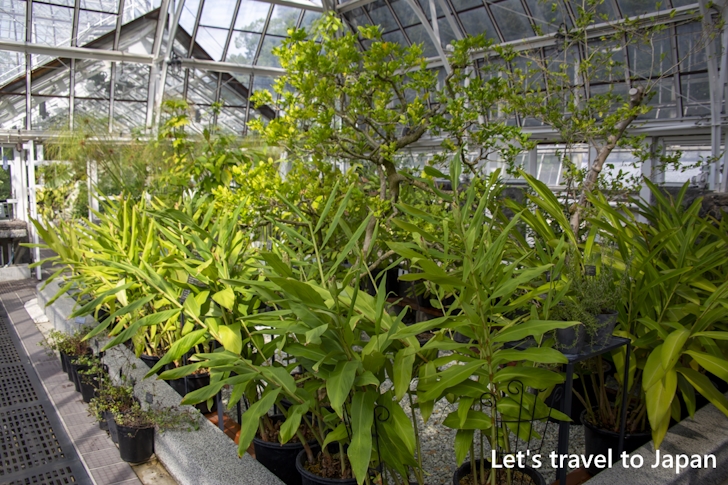
This is Pepper.
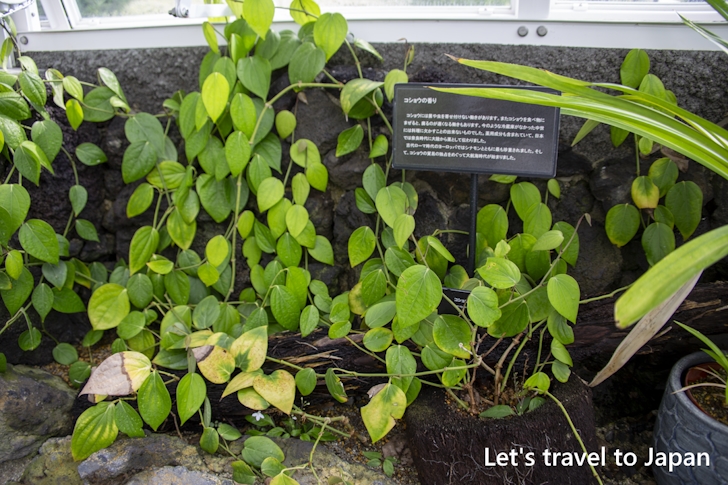
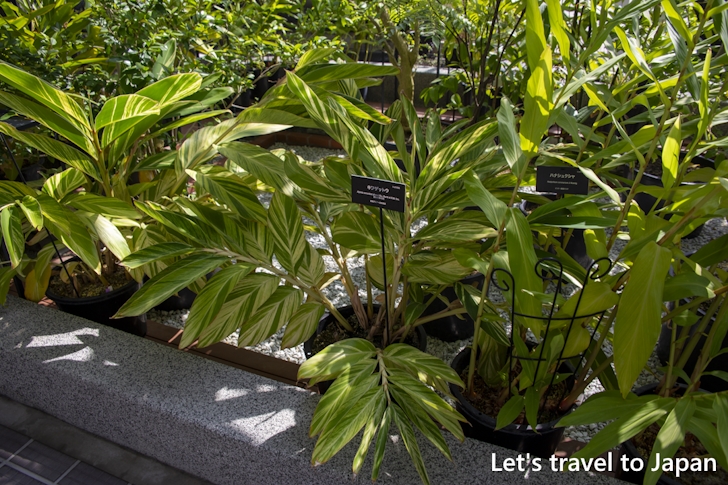
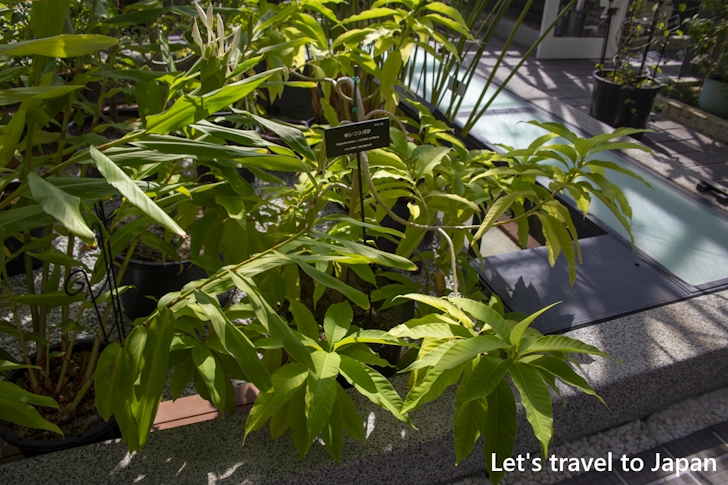
This is Tamano-Kanzashi.
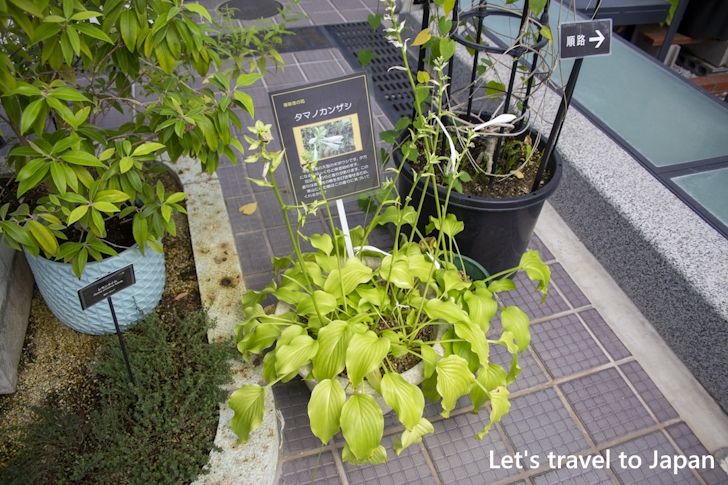
This is Lemongrass.
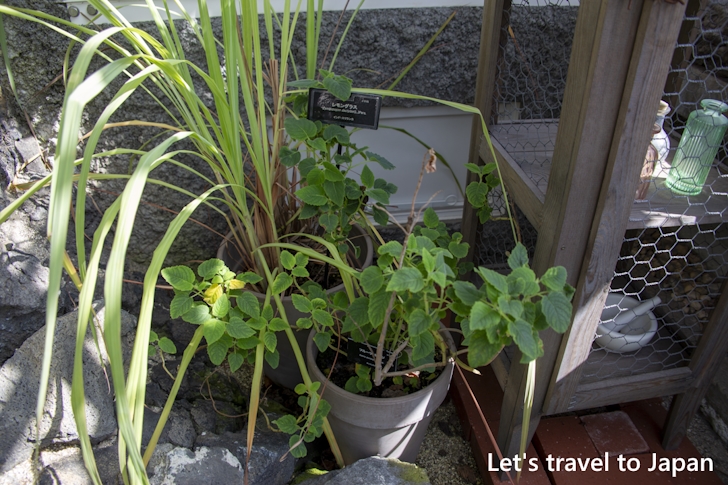
The Back-Greenhouse
The Back-Greenhouse is connected from the center of The Front-Greenhouse. The Back-Greenhouse consists of the Sun Gallery Greenhouse, which is designed like a strolling path, and four exhibition rooms: the "Saguaro Greenhouse", "Aquatic Greenhouse", "Hawaiian Greenhouse", and the "Room for Plants Native to Central and South America".
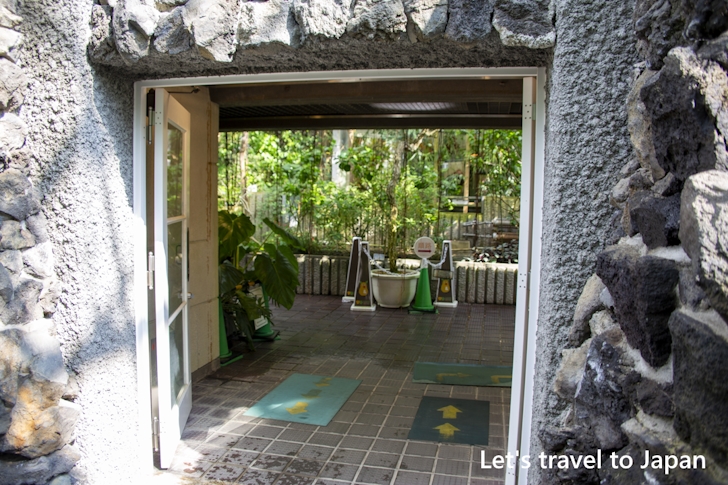

Sun Gallery Greenhouse
At Sun Gallery Greenhouse, you can see a variety of flowers such as bougainvillea and hibiscus.
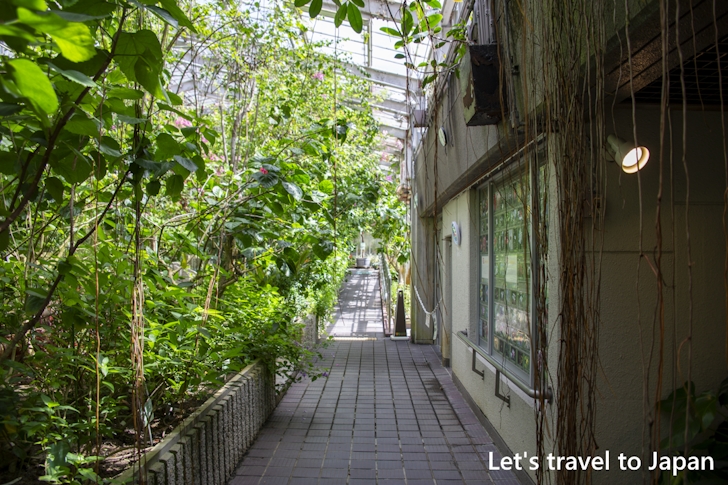
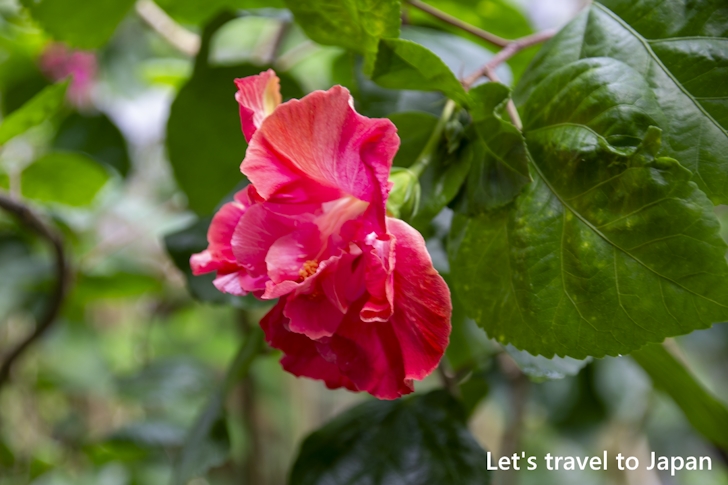
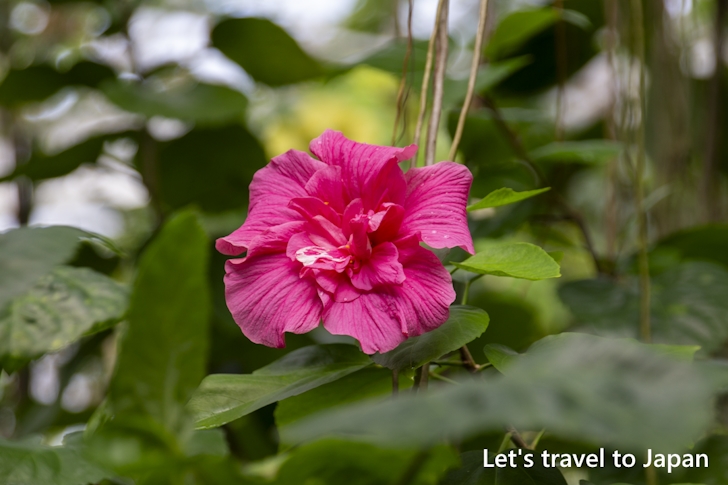
This is Gokurakuchoka.
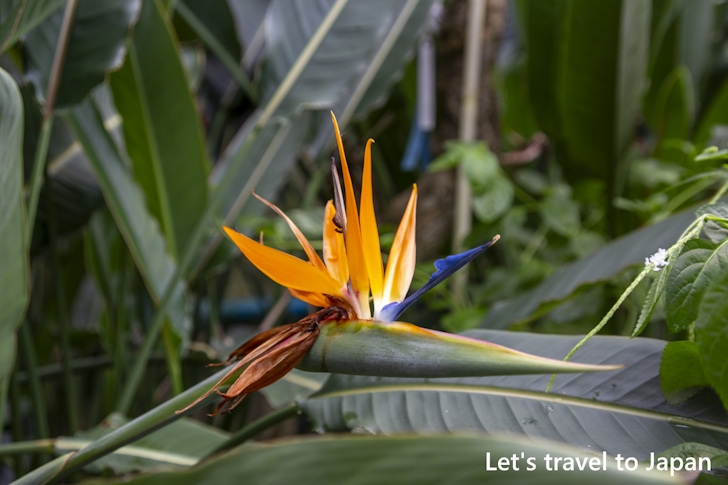

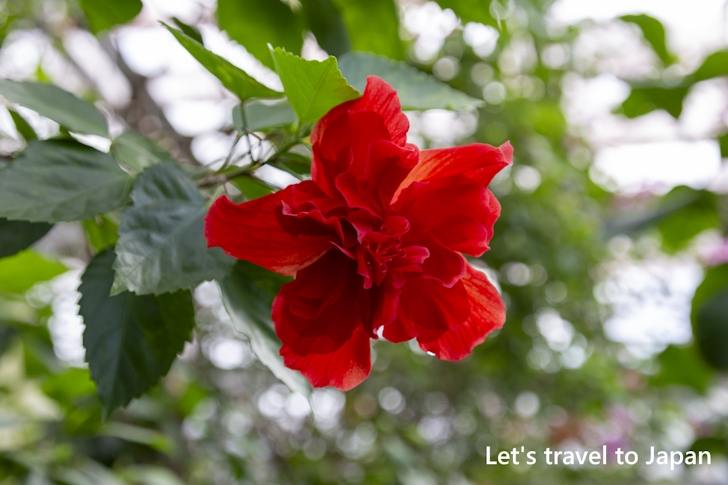
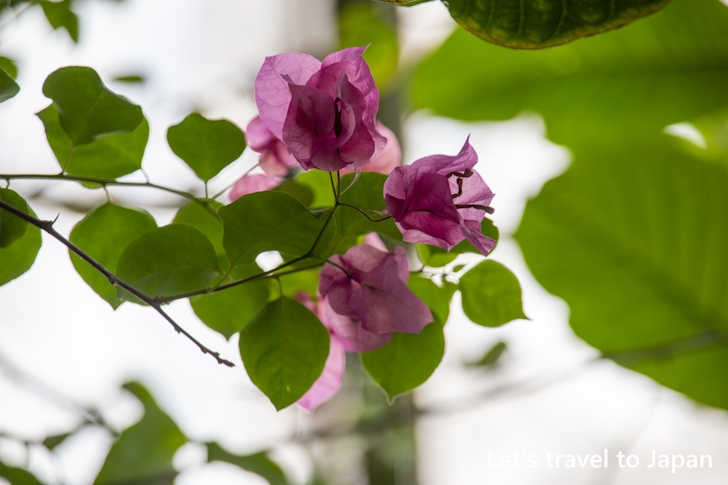
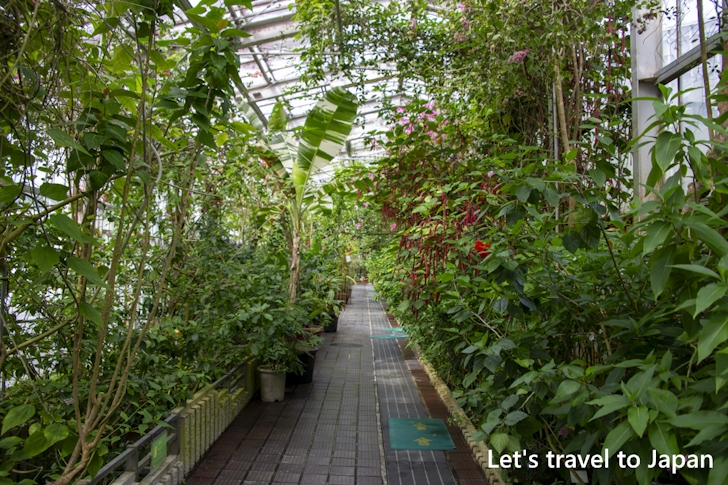
This is Benihimonoki.
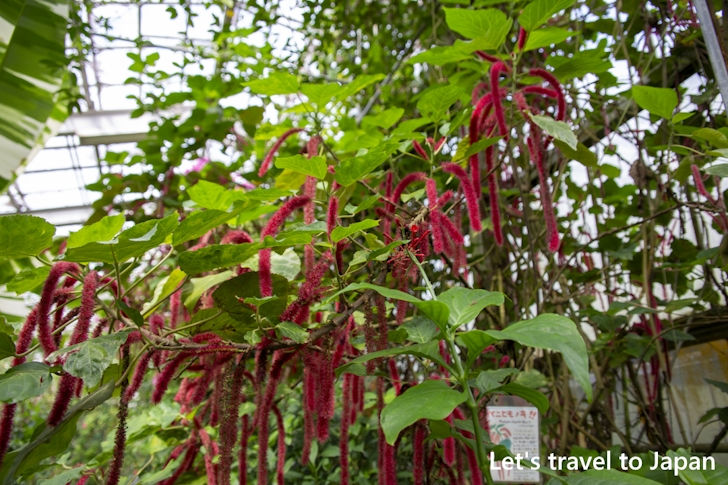
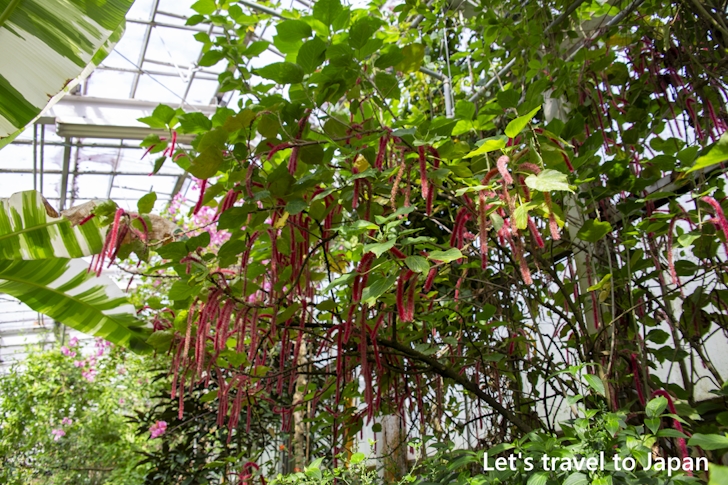
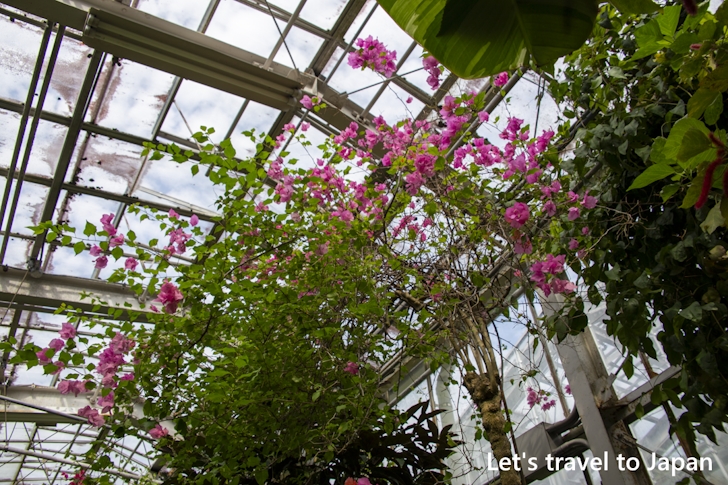
Extending horizontally from the Hawaiian House is the Norantia-Guianensis.
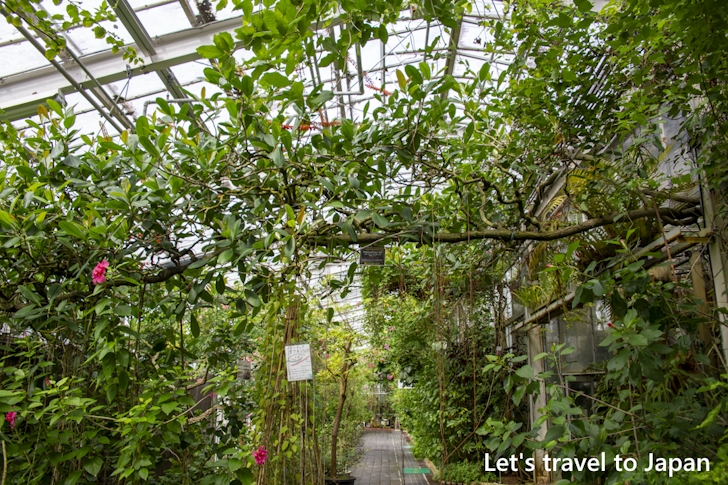
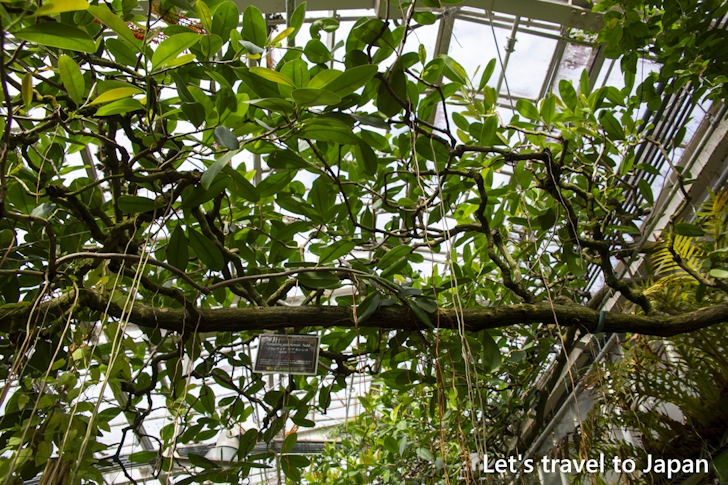


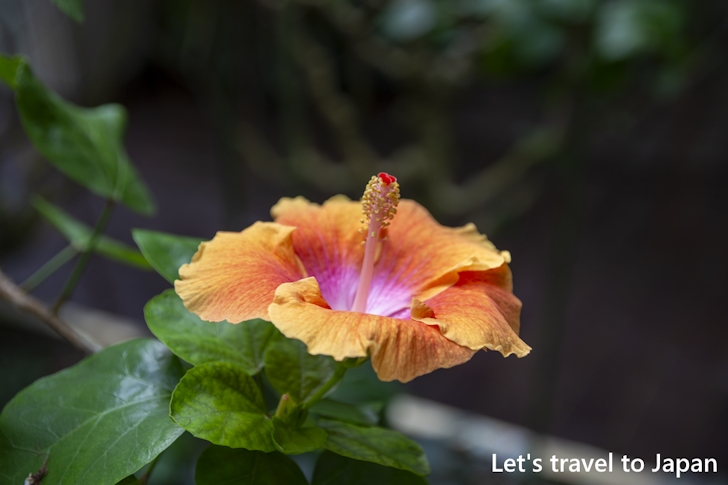
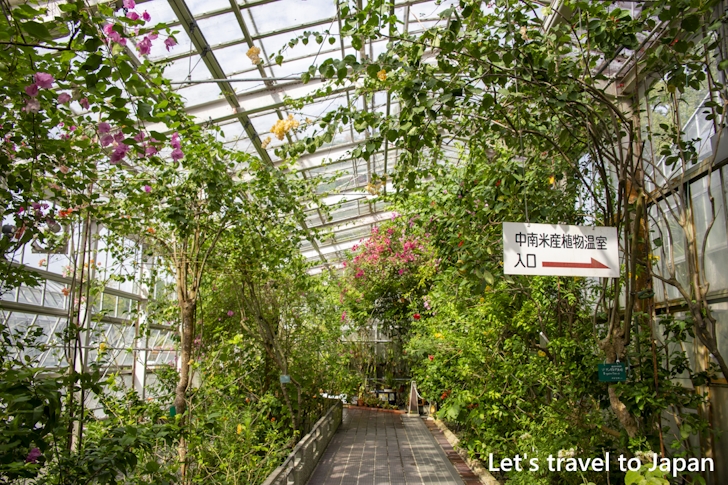
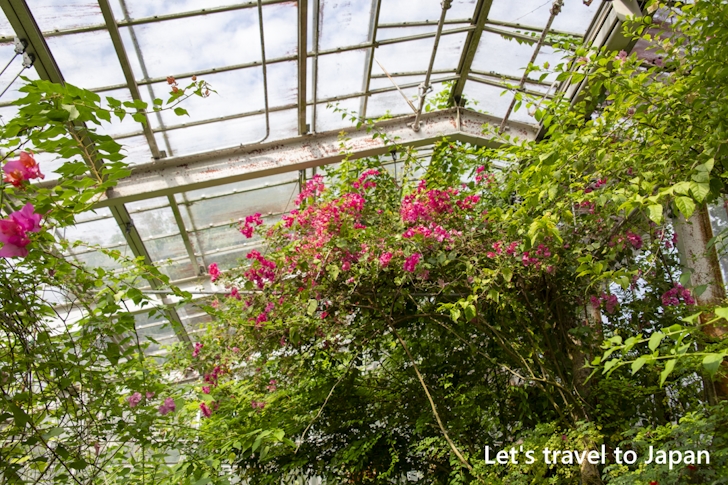
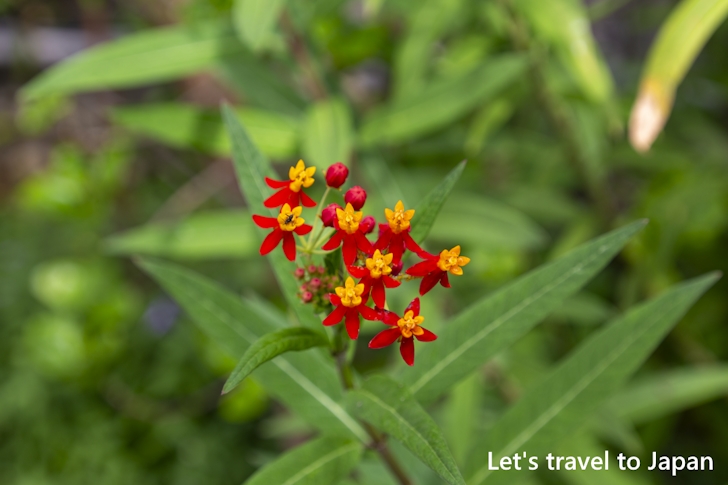
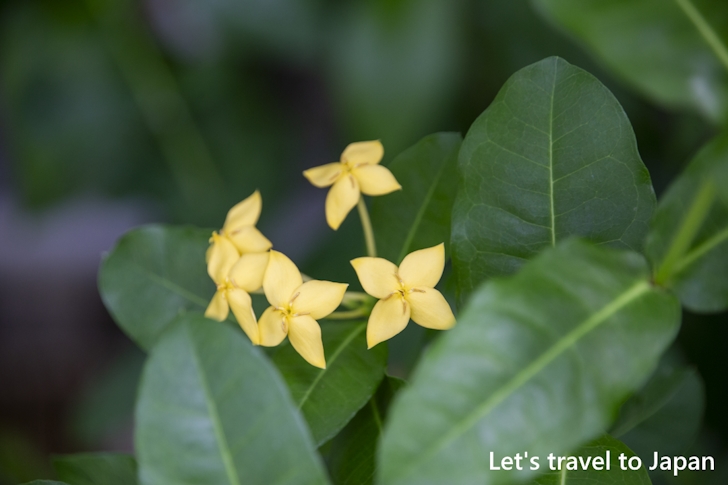
This is Ixora-Grandiflora.
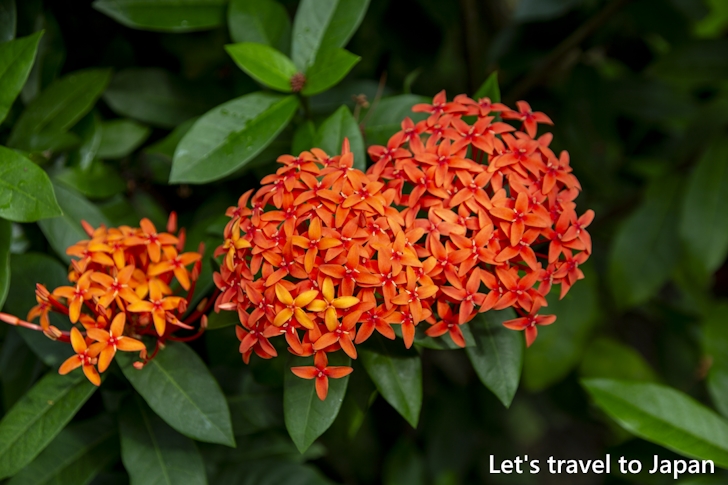
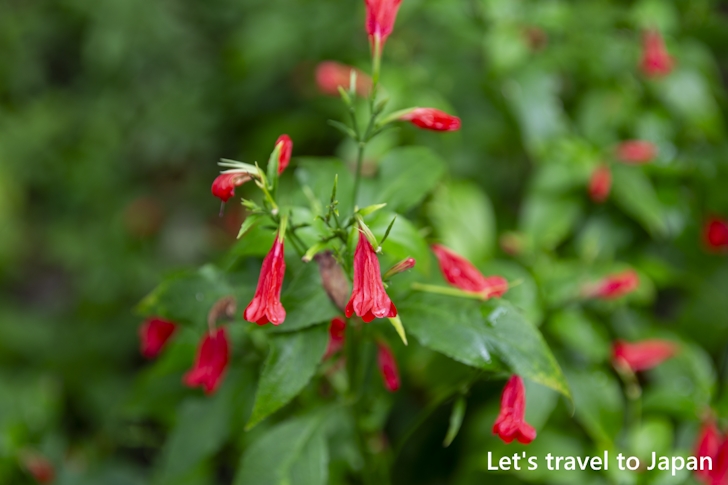
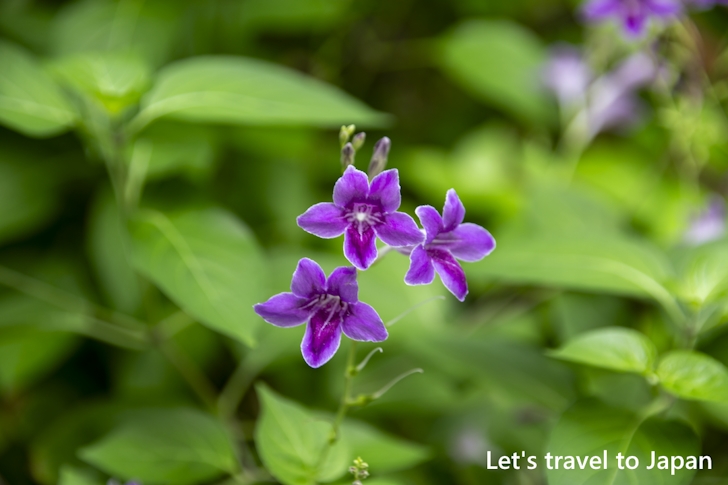
At the end of the Sun Gallery is Shokudai-Okonnyaku.

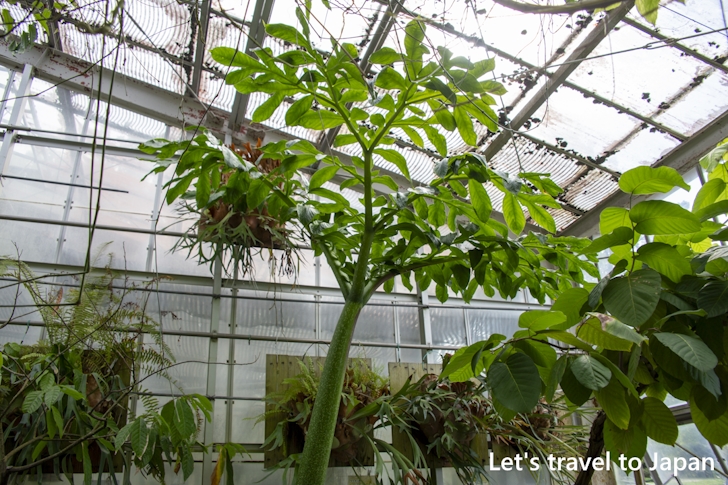
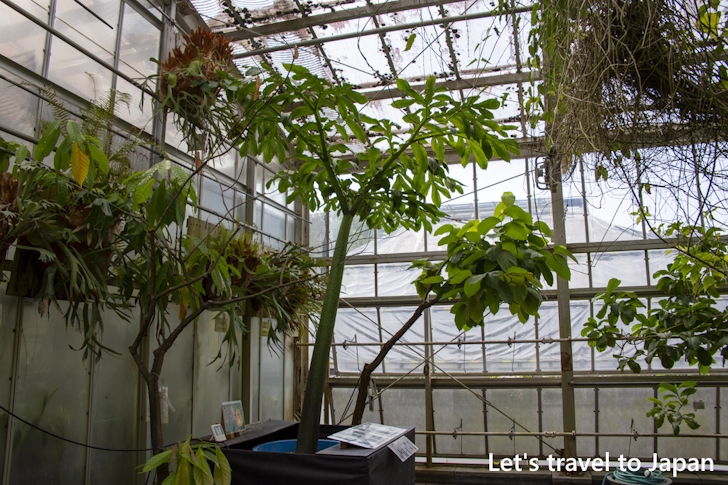
The one to the right of Shokudai-Okonnyaku is Sarasouju. There was also a pineapple on the left.
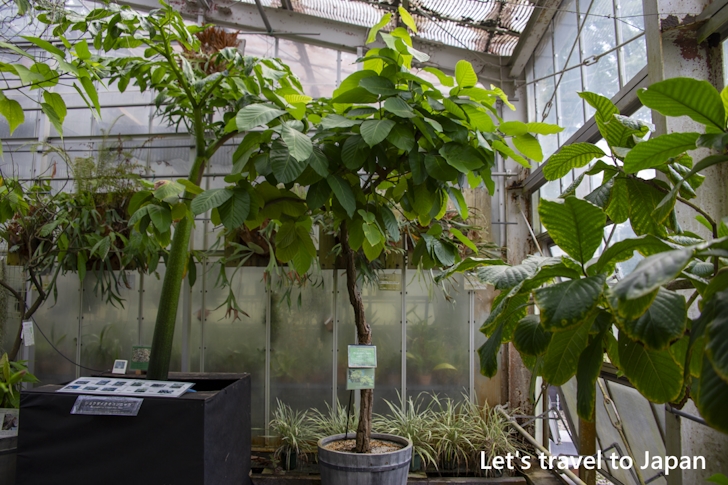
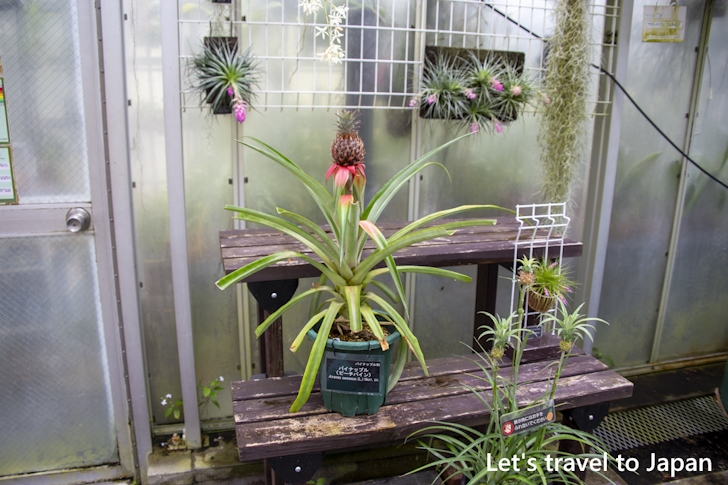
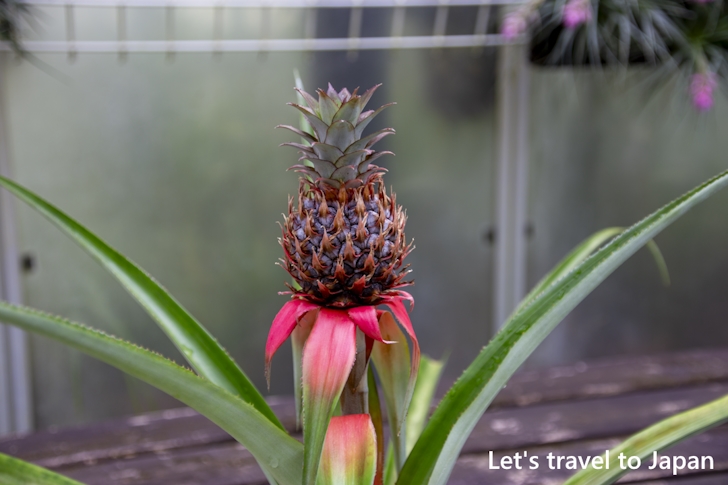
At the opposite end of the Sun Gallery is a carnivorous plant corner. You can see things like Nepenthes.
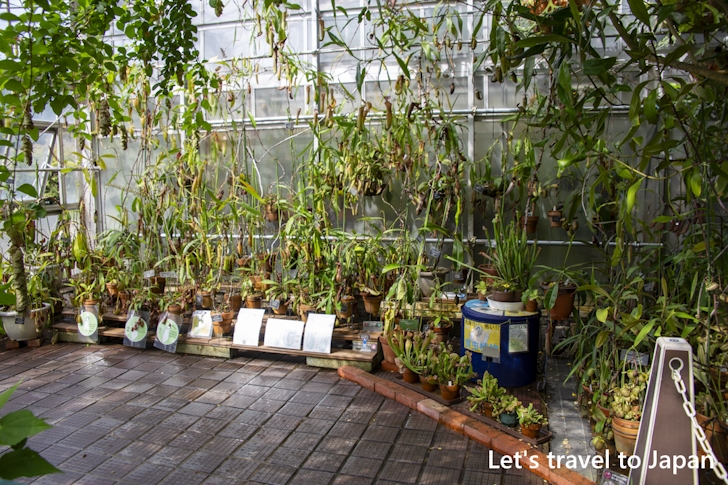
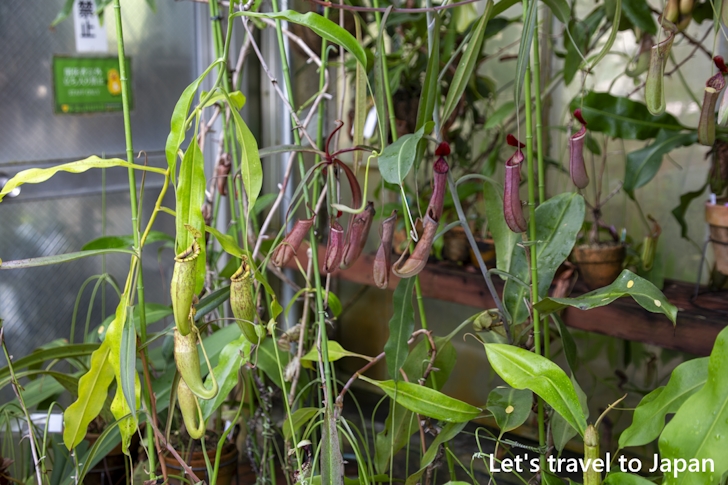
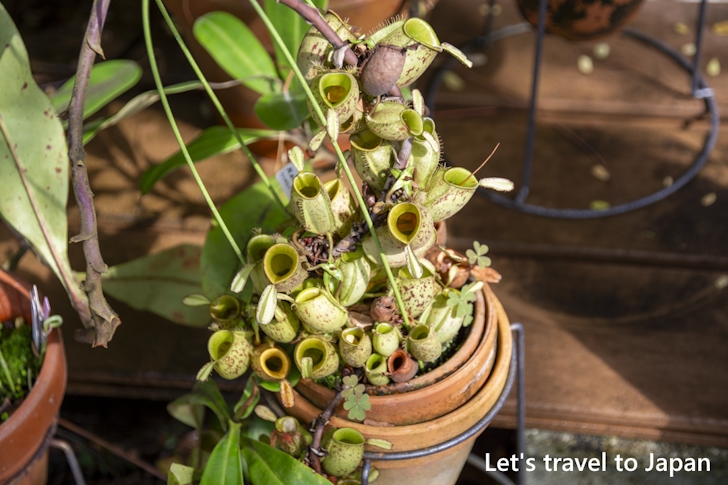
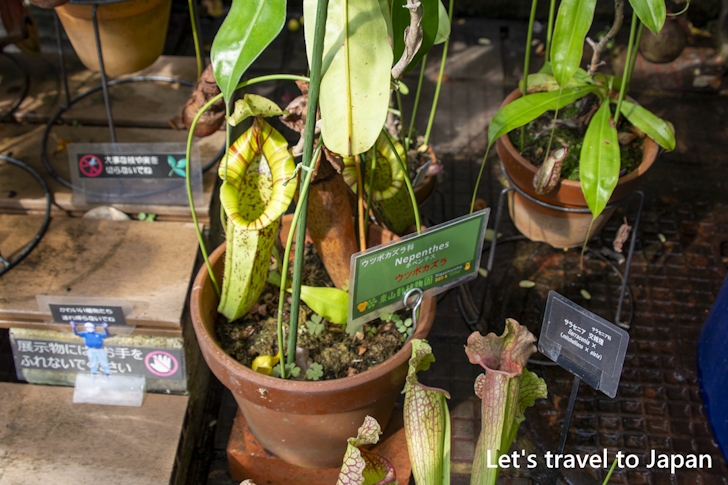
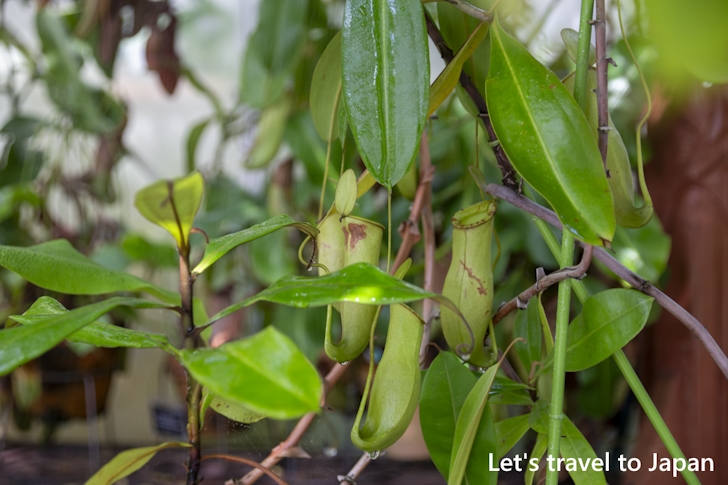
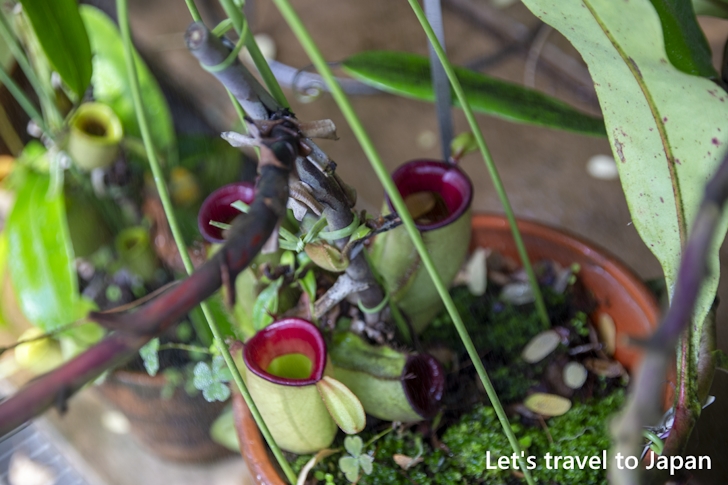
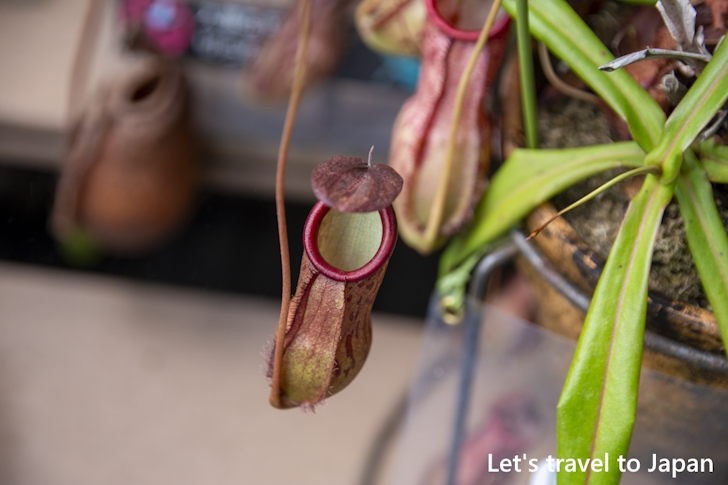
Other plants include Mousengoke, Haezigoku, and Sarracenia.
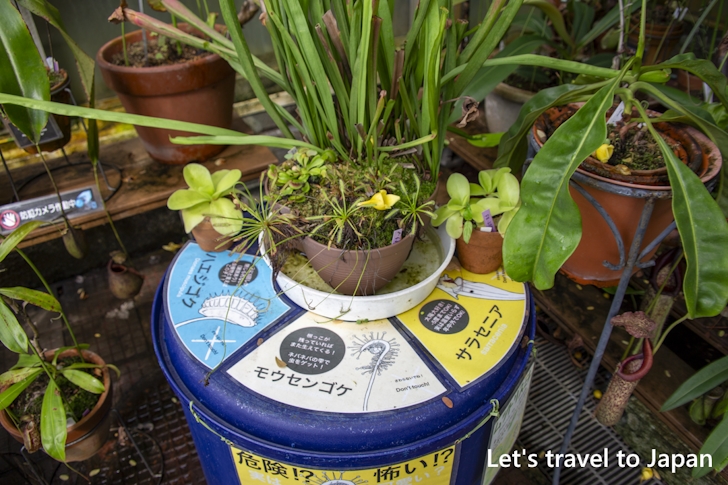
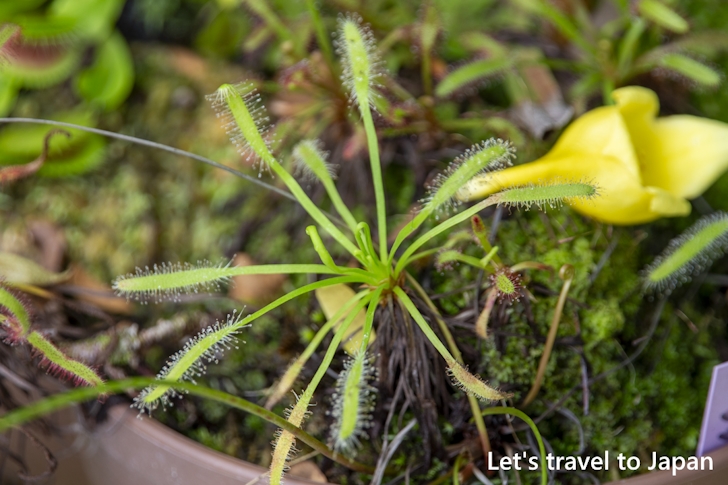
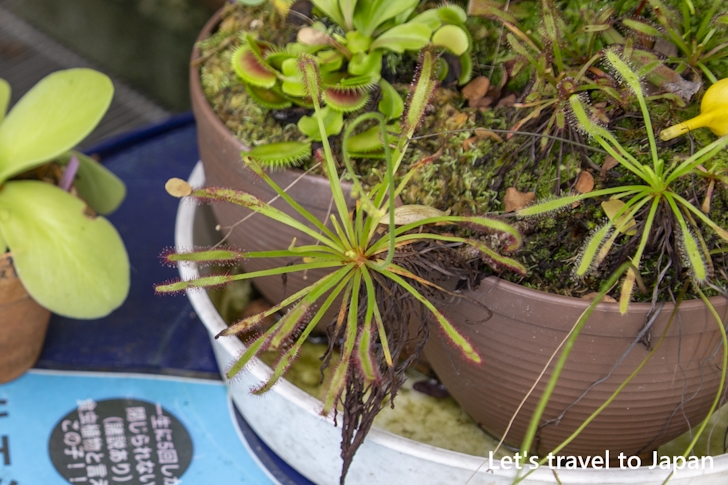

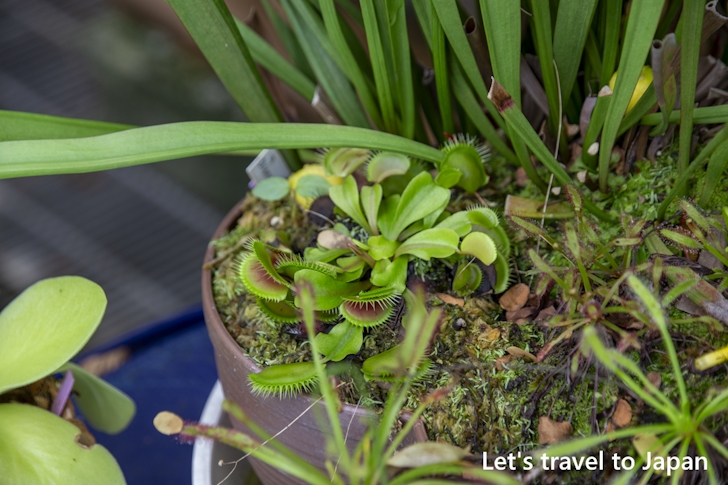
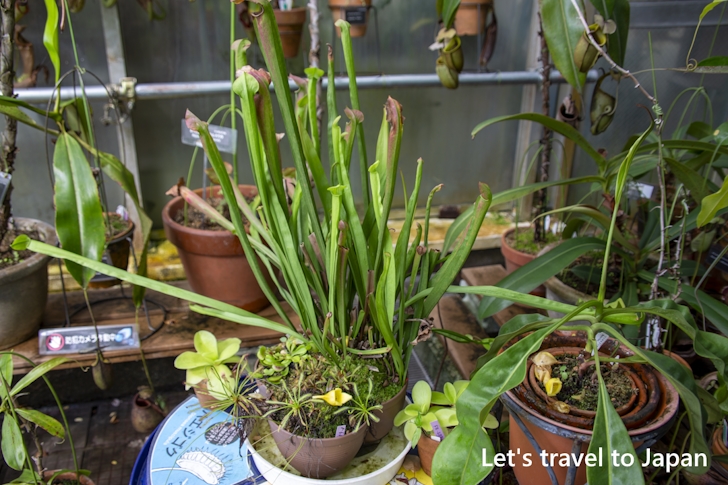
Saguaro Greenhouse
This is Saguaro Greenhouse.
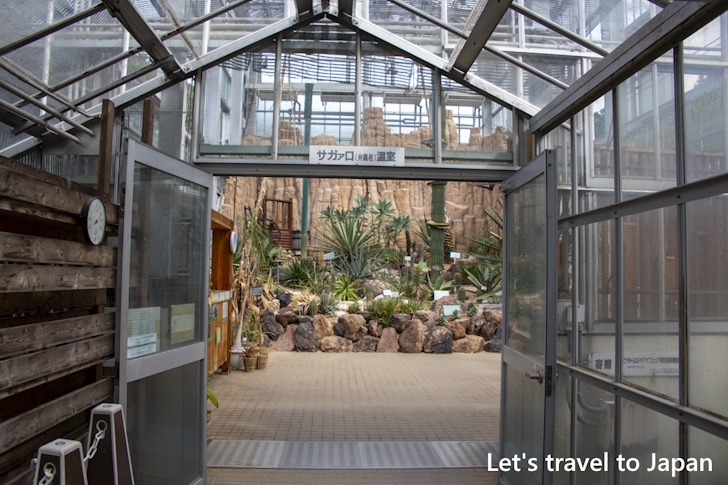
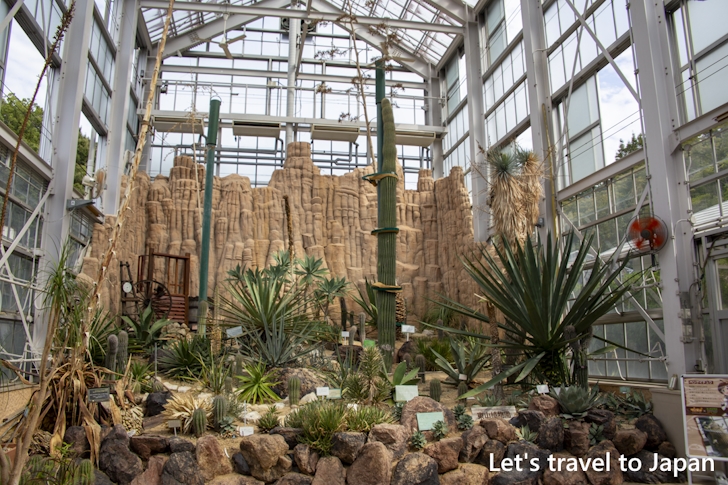
The tall cactus is called the Benkeichu (Carnegiea gigantea) and is the largest cactus in the world.
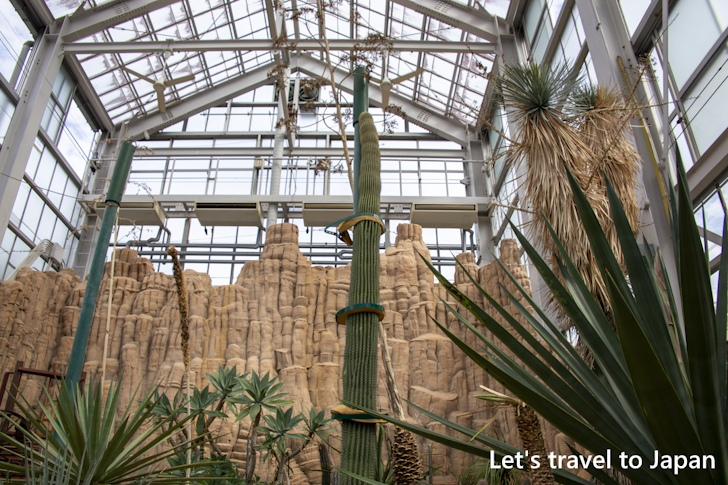
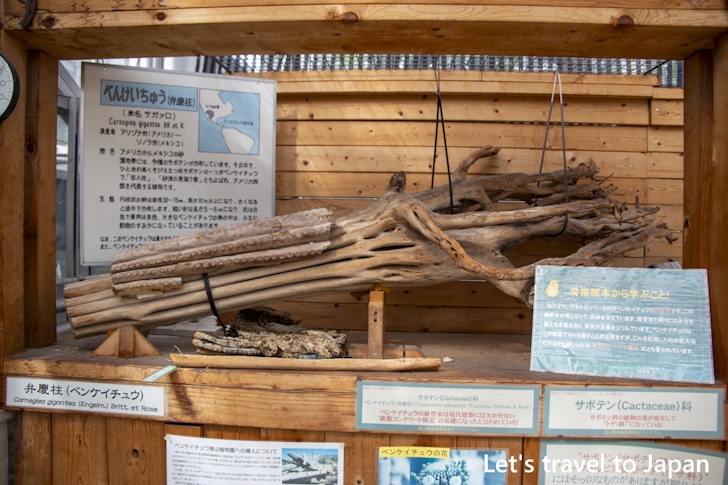

This is Tequila-Ryuzeturan. It is known as an ingredient in tequila
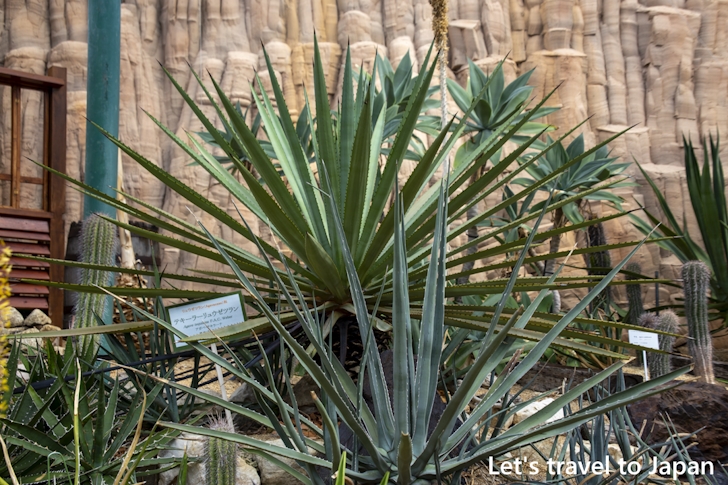
Aquatic Greenhouse
This is Aquatic Greenhouse. There is a pond in the center.
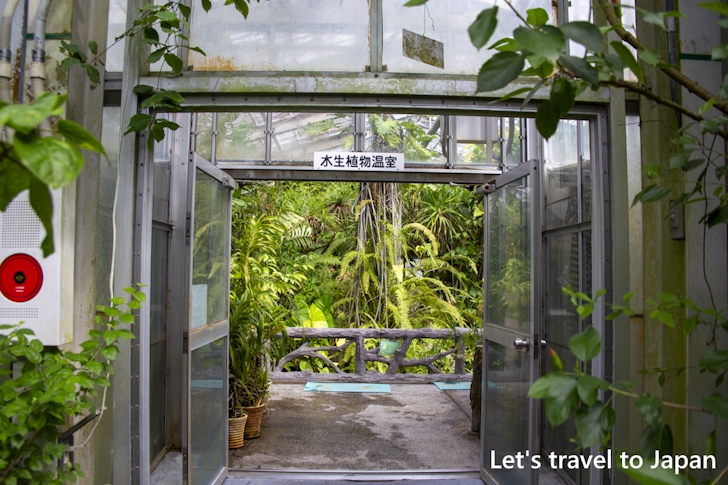
The one growing to the top of the center is Philodendron-Evansii.
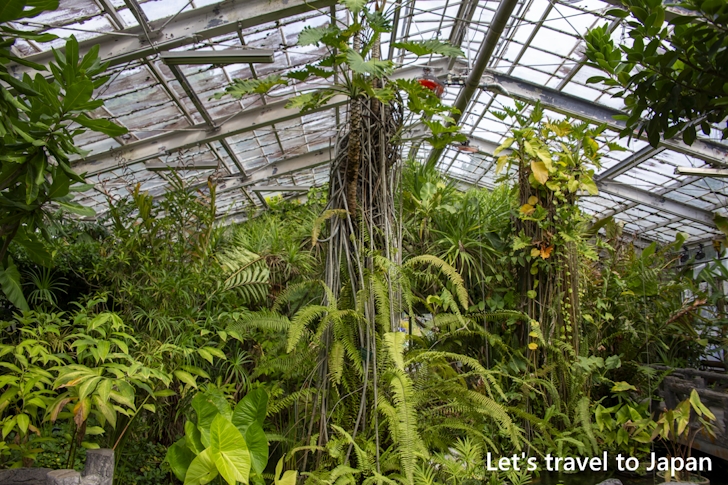
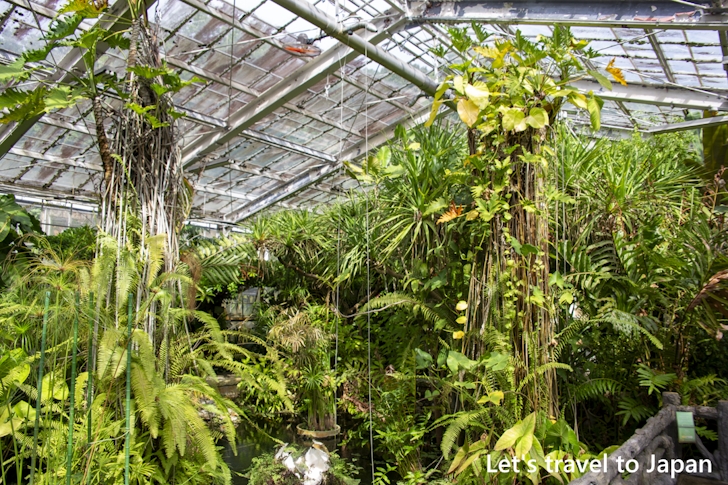
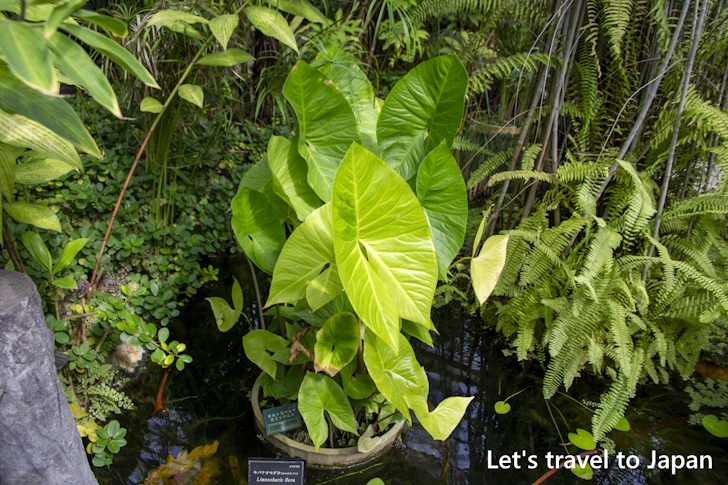
This is a banyan tree.
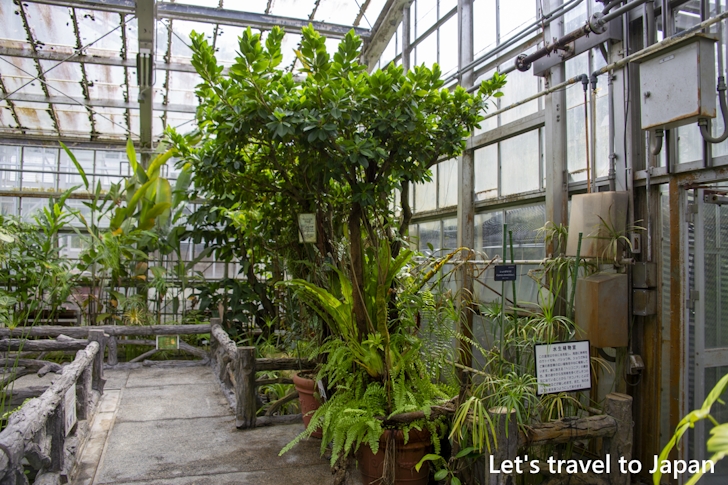
The heart-shaped plants floating in the pond are a type of Nymphoides.
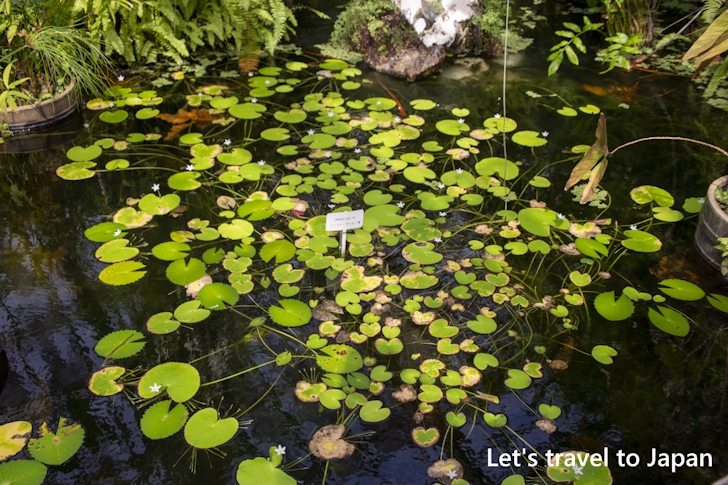
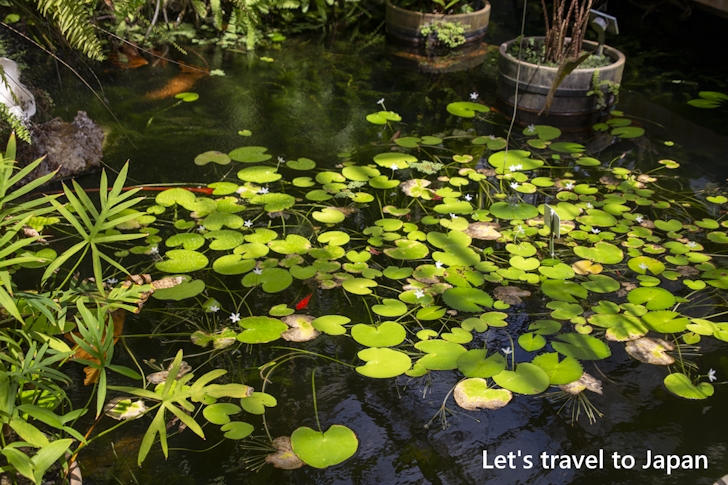
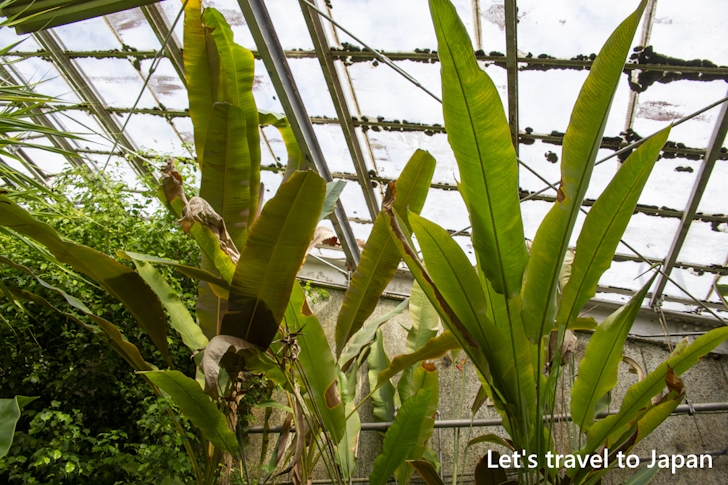
This is Adan. The parts that grow like legs are called Aerial root.
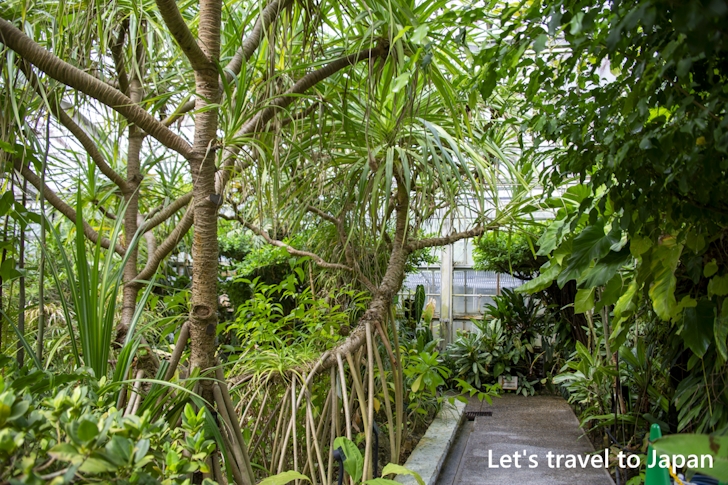
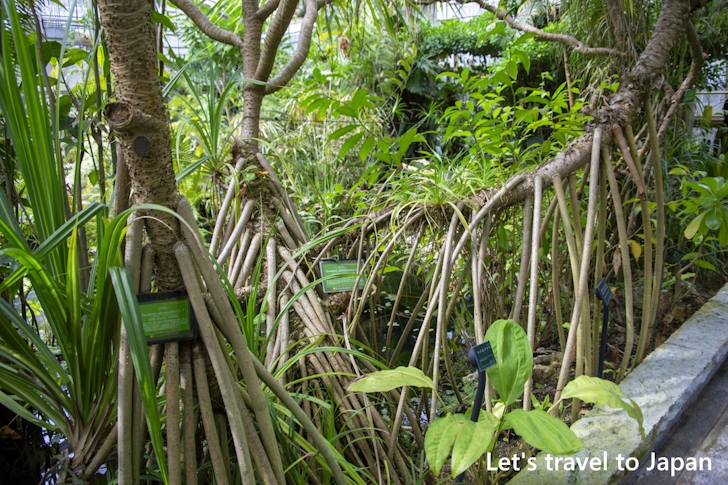
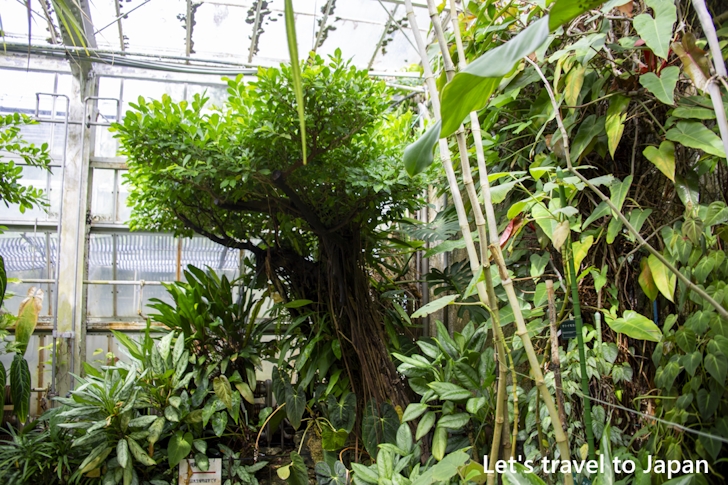
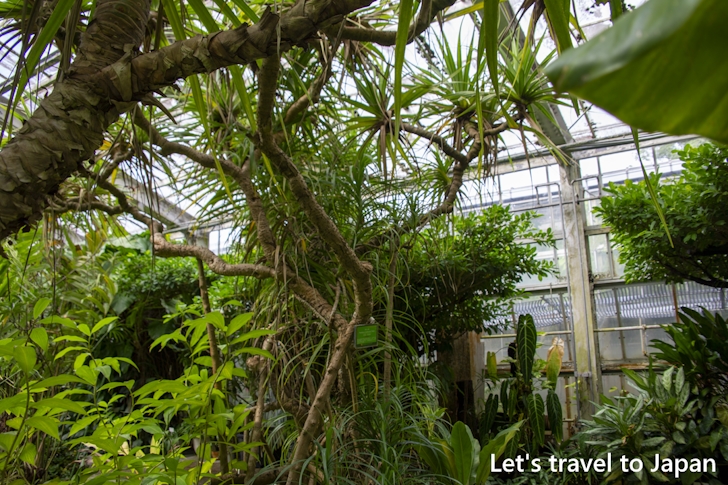
It looks similar to Adan, but this is Takono-ki(Octopus-Tree).
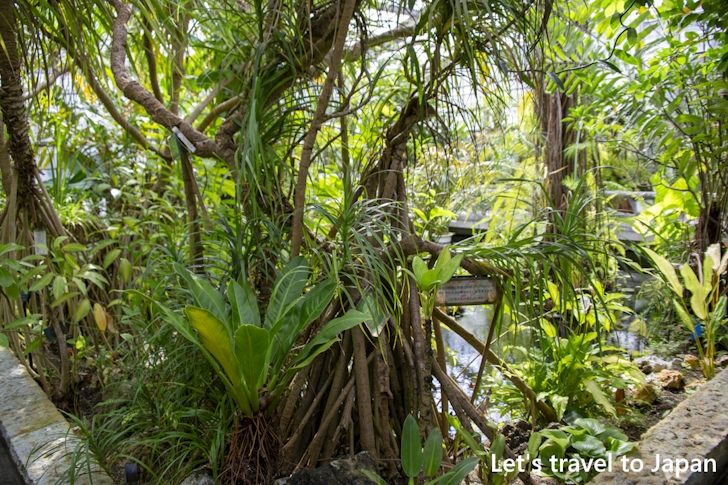
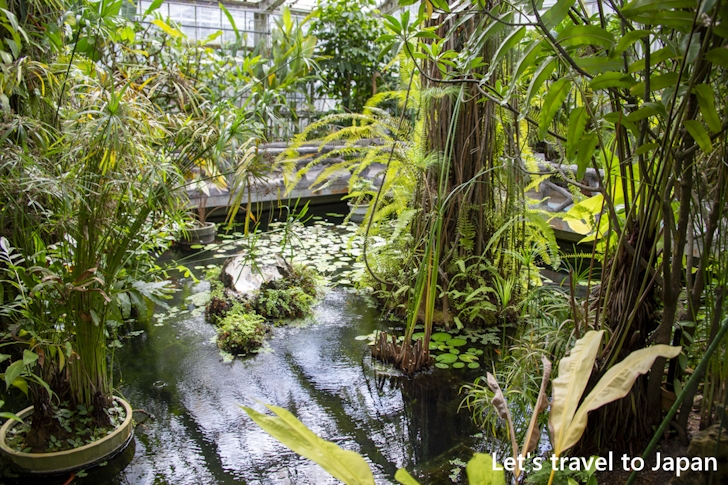
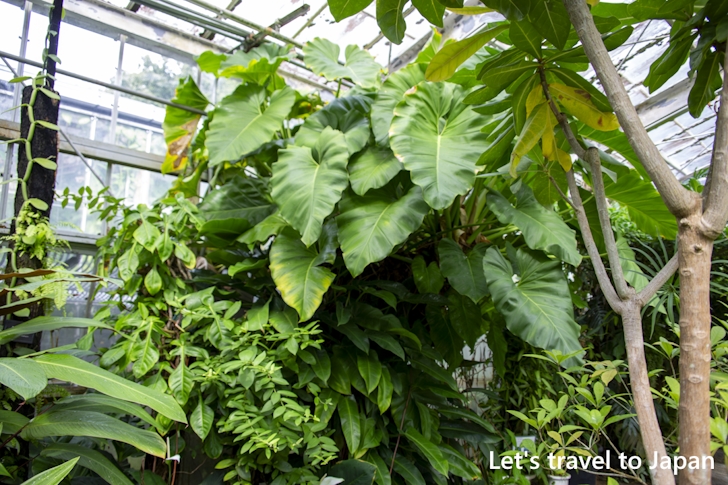
This is Kobano-Banyan.
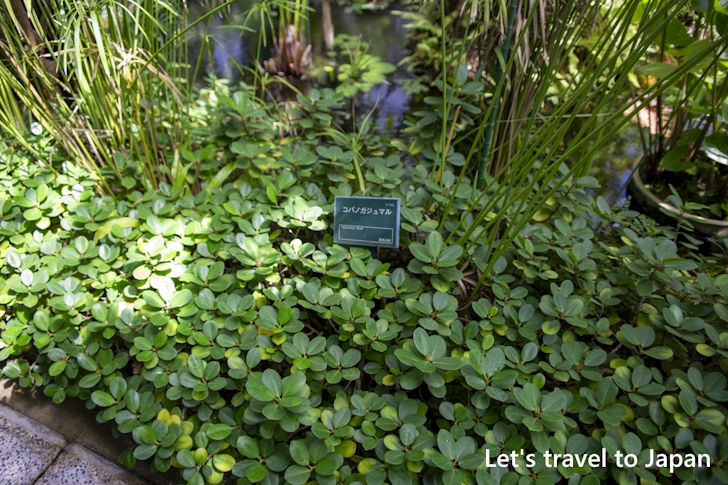
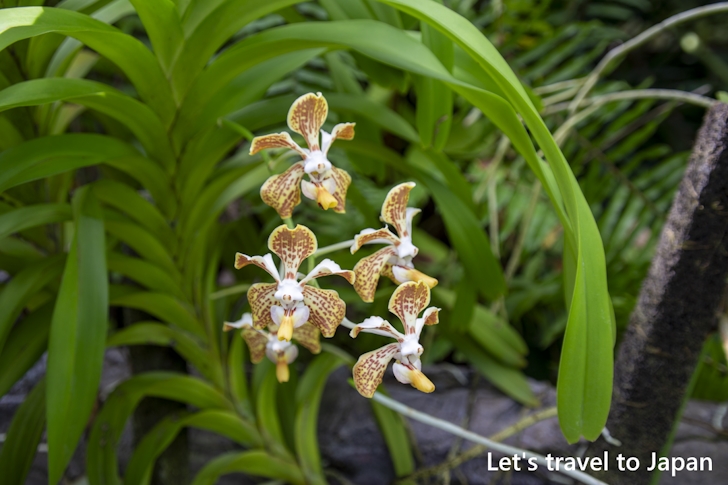
Hawaiian Greenhouse
This is Hawaiian Greenhouse.
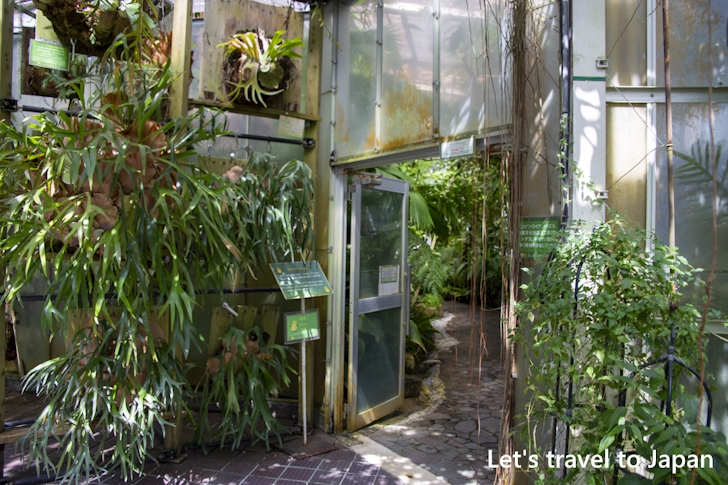
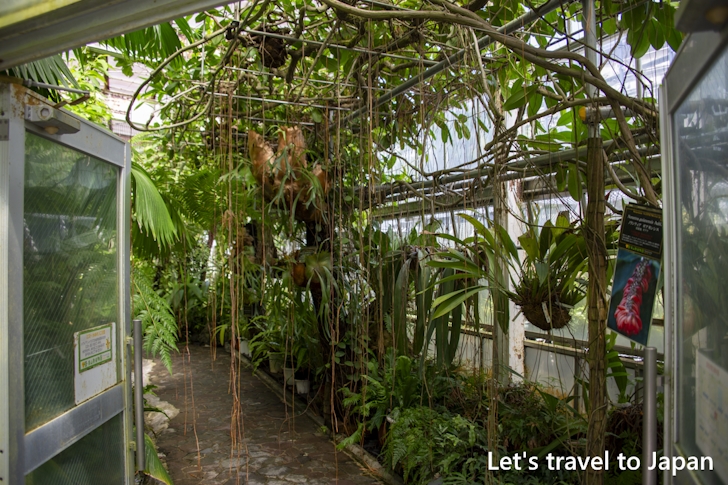

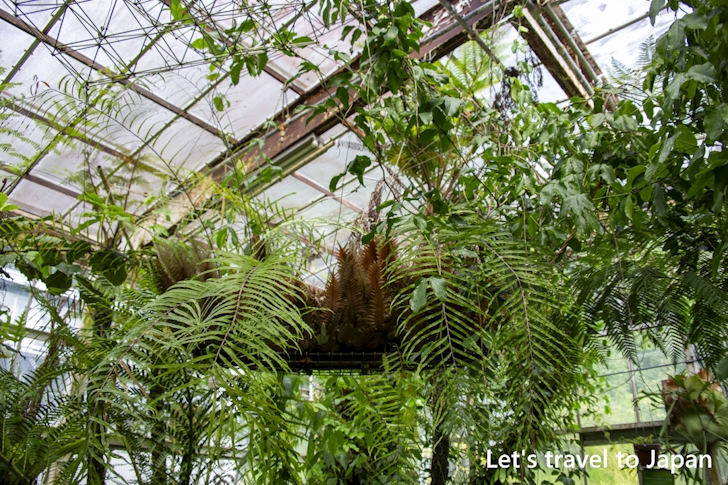
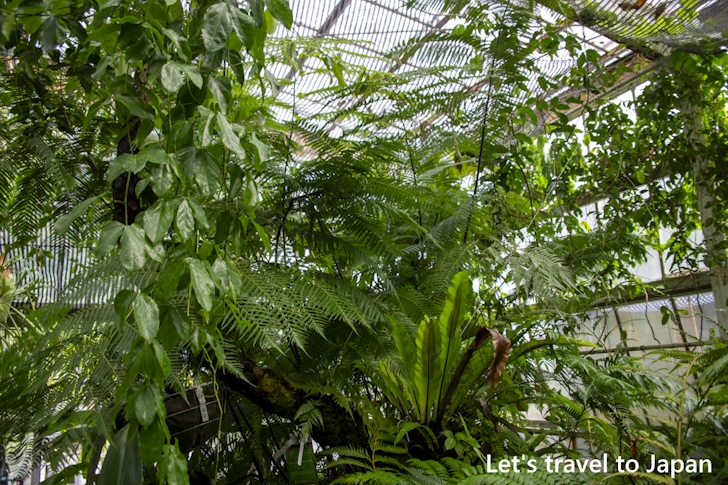
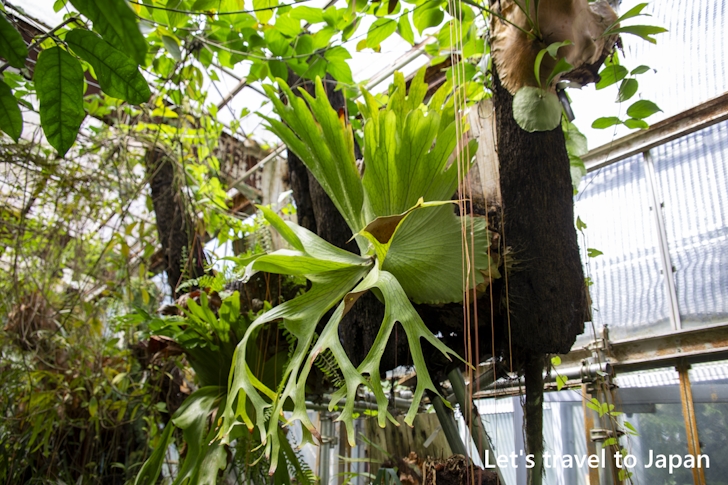
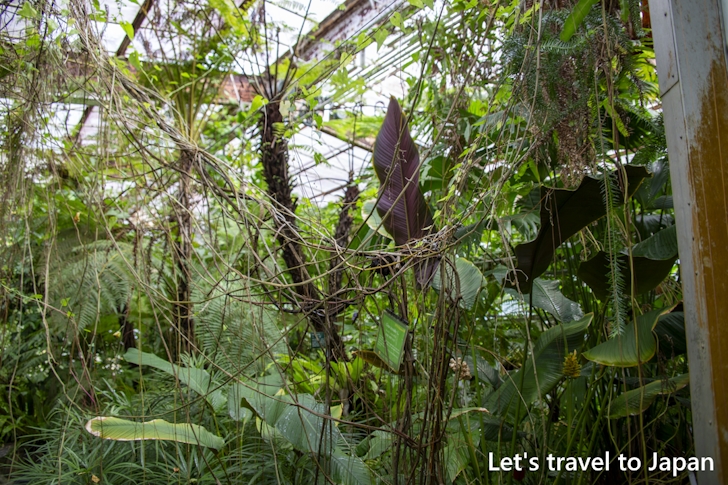
Room for Plants Native to Central and South America
This is Room for Plants Native to Central and South America.
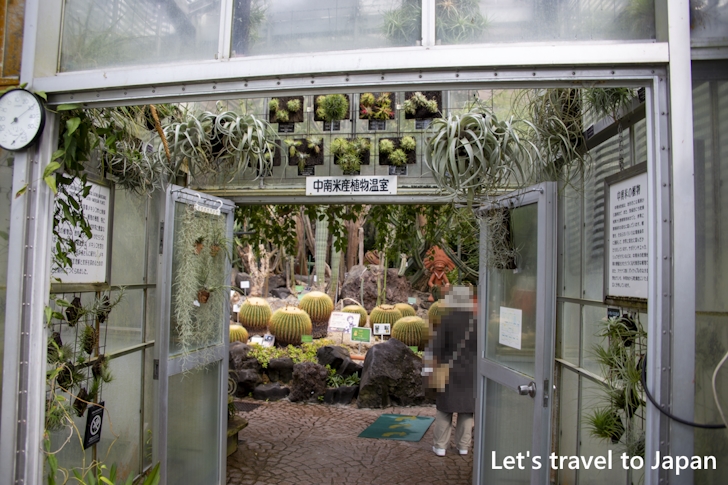
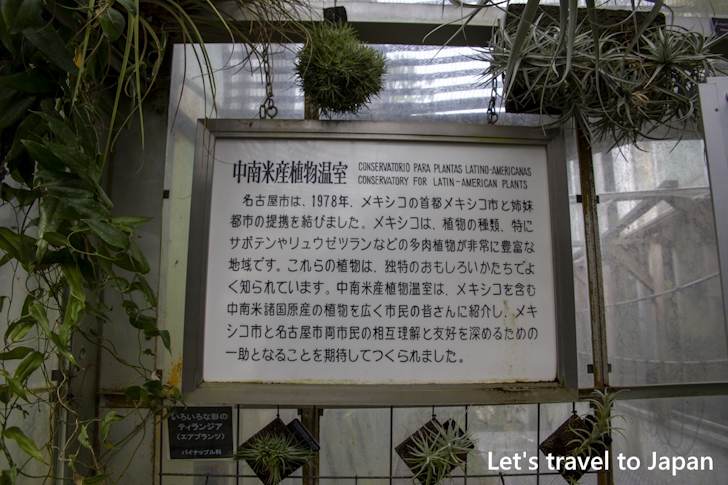
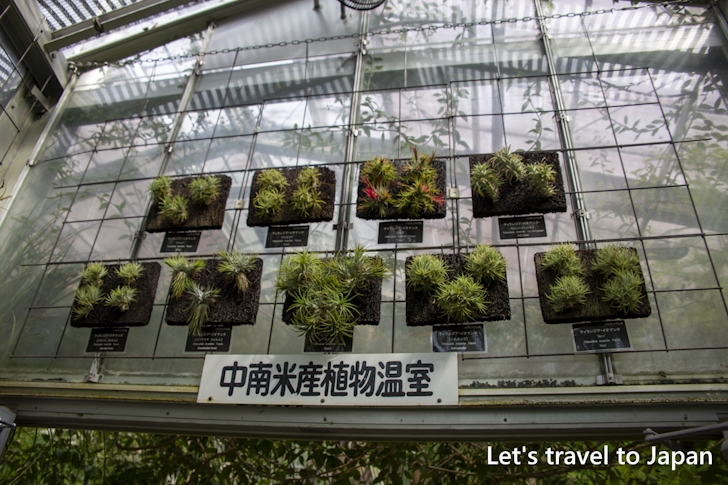
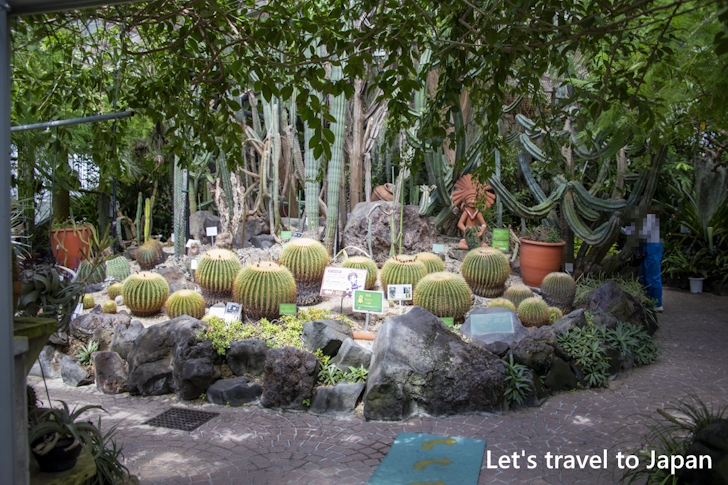
This is Bulin-Pillar.
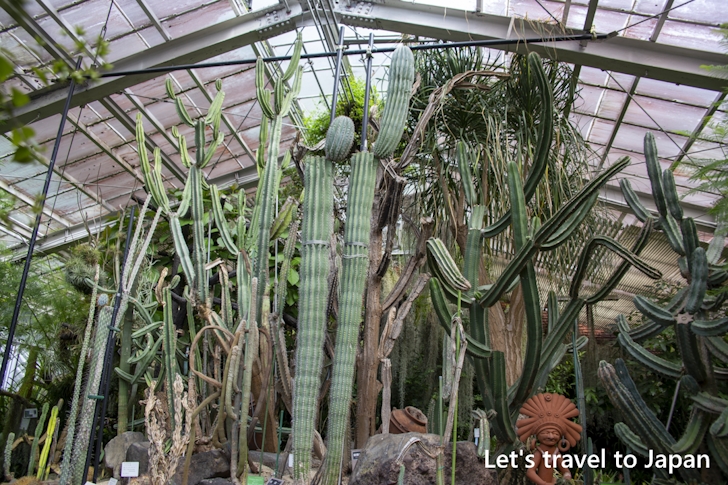
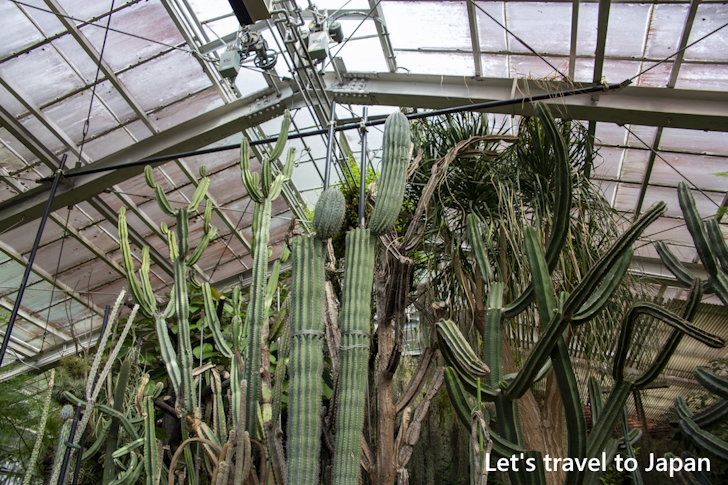
This is Kinshachi.
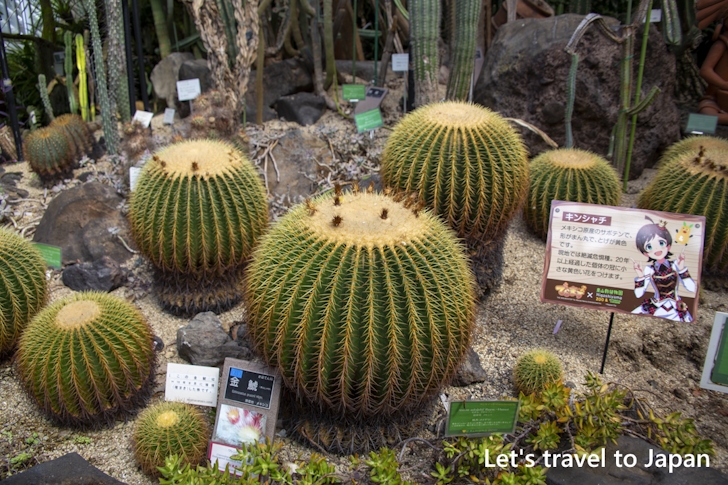

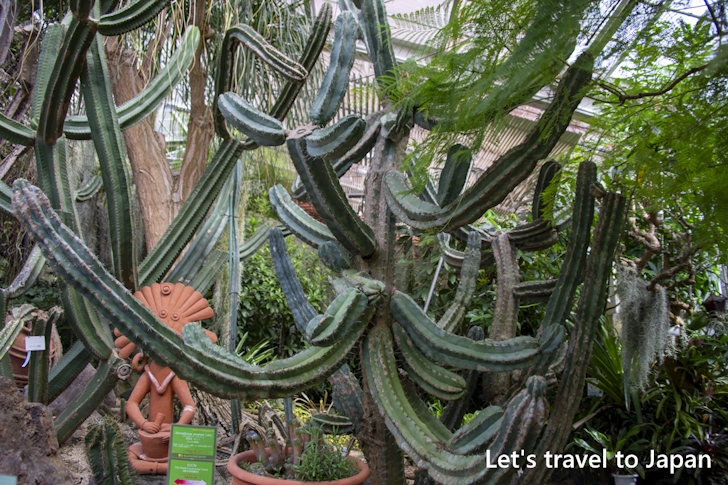

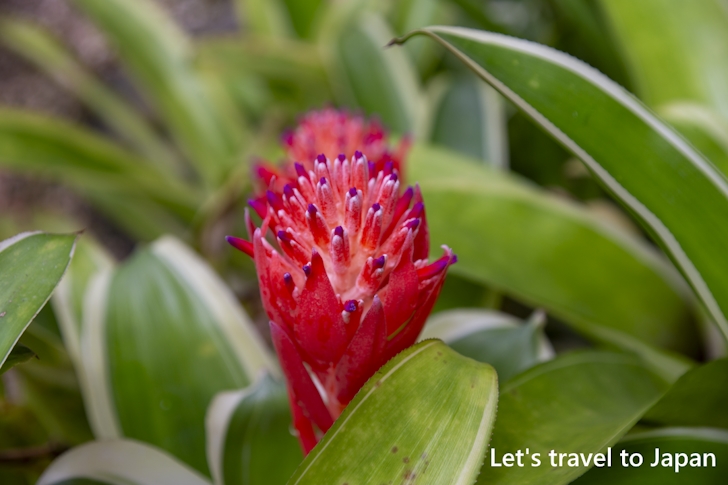
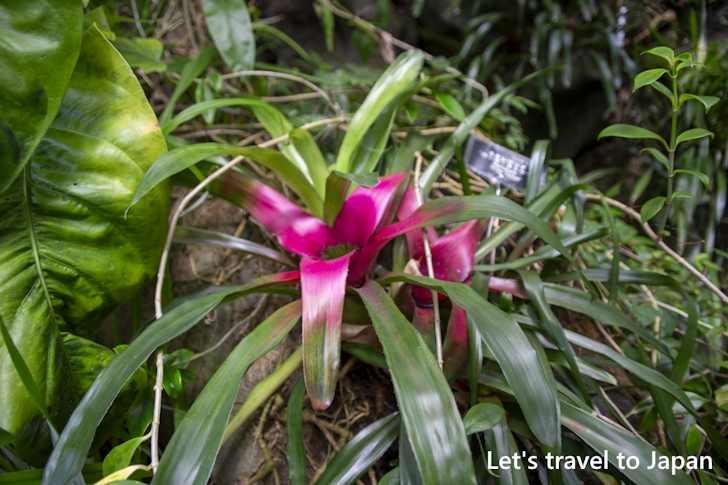
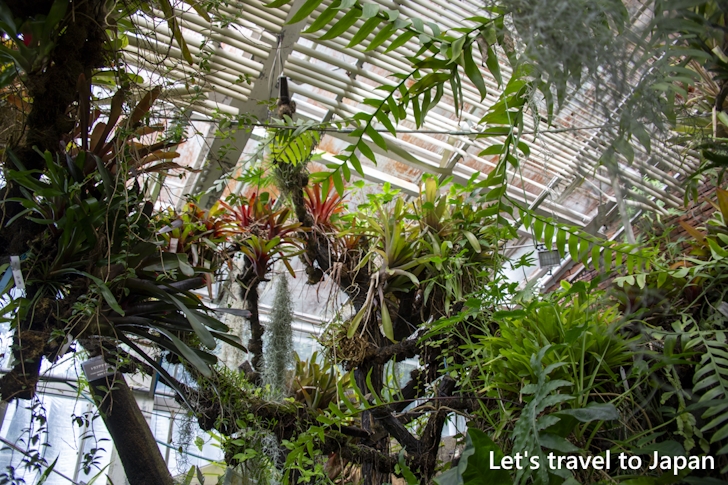
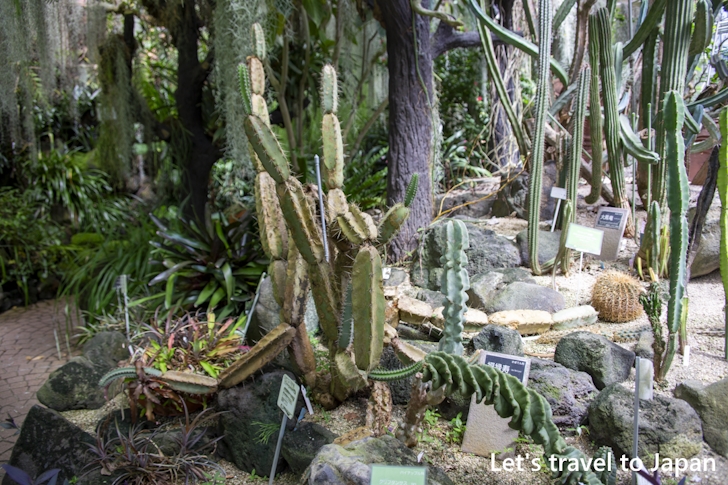
This is Echinopsis.
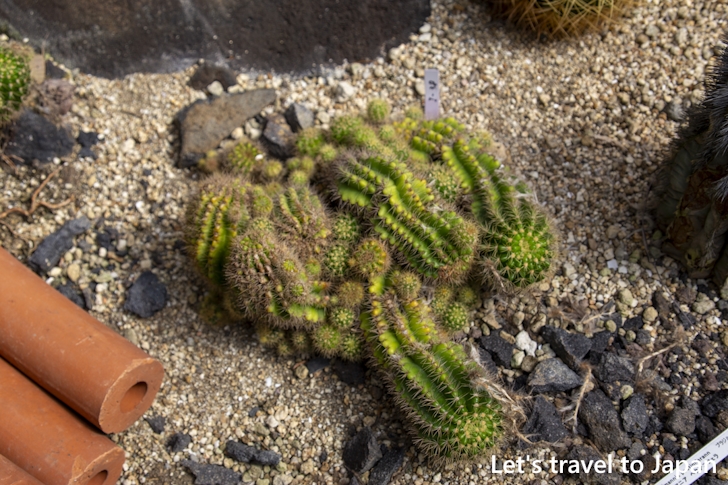
Samurai Residence Gate
Exiting the greenhouse, we continue walking through the botanical garden.
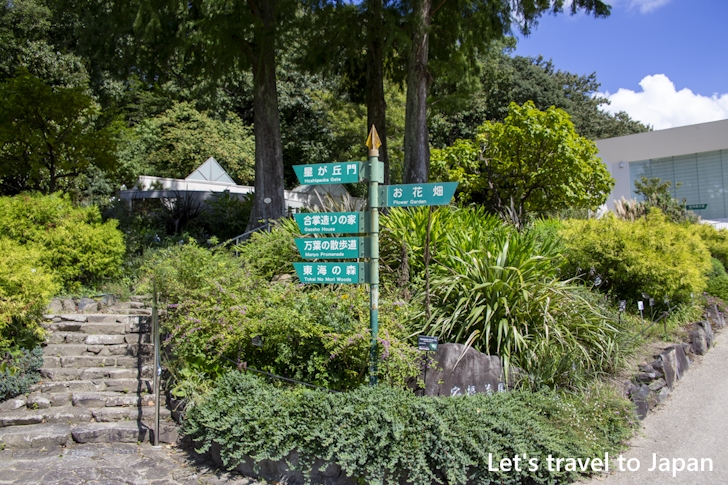
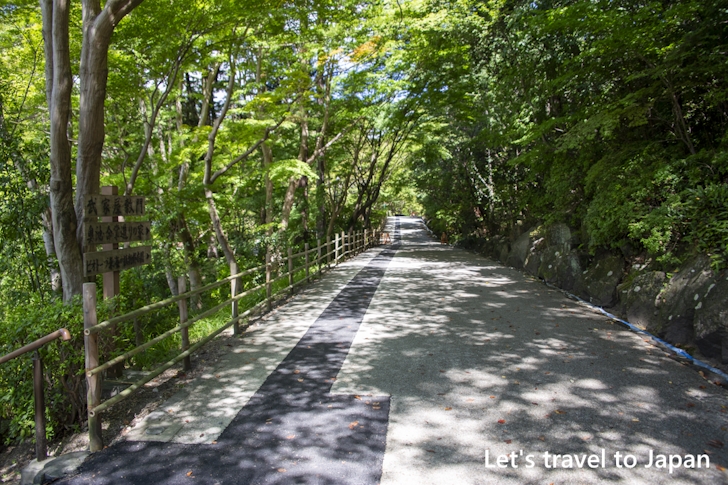
After a short walk, on the left side, there is a samurai residence gate. It seems this gate belonged to the Kemmatsu household, vassals of the Owari domain, and was donated to Nagoya City before being relocated and displayed here in the Higashiyama Botanical Garden.
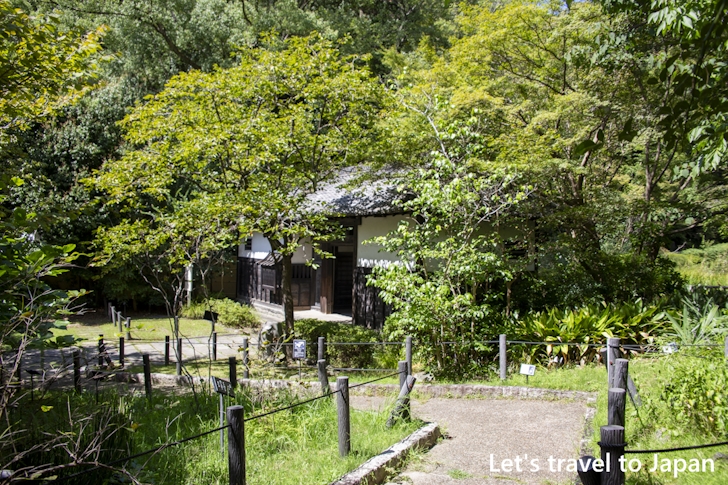
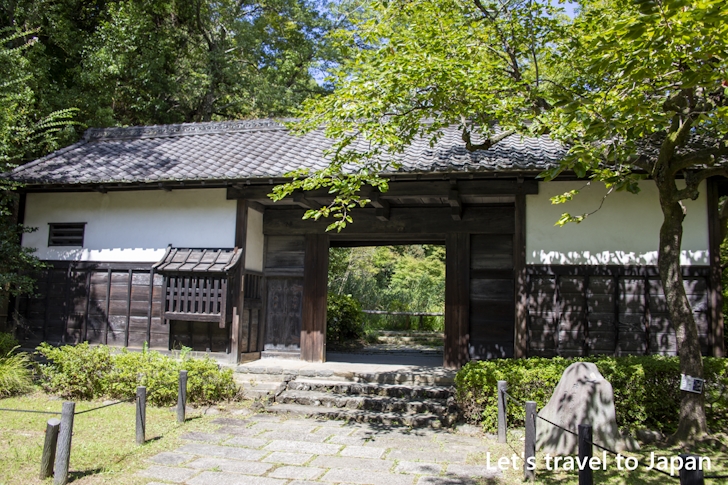
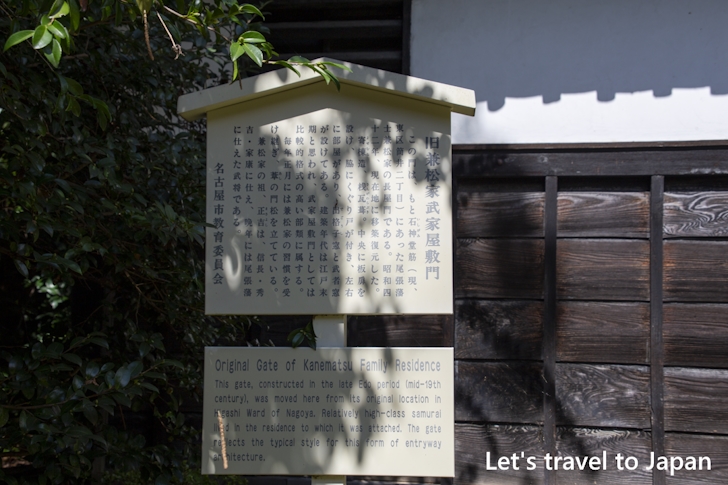
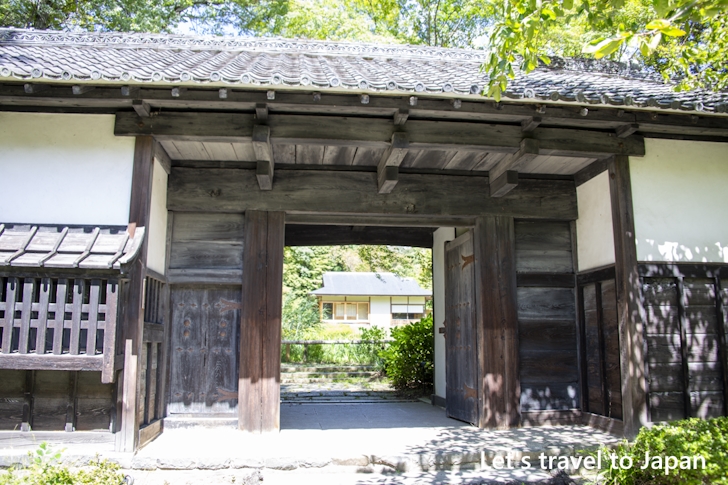
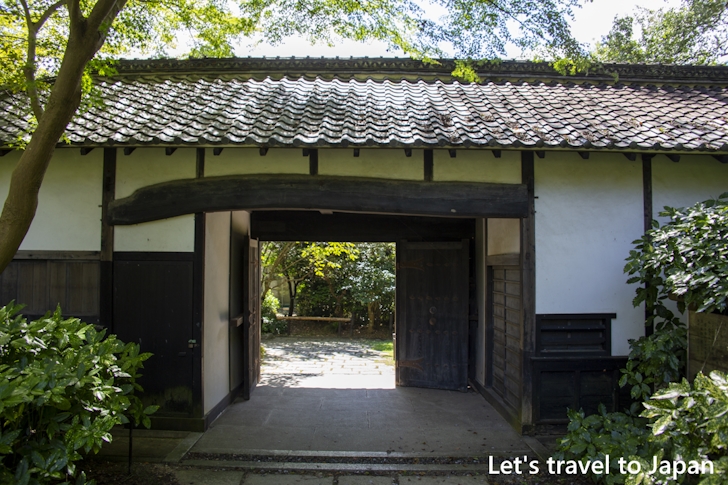
Yayuen and Sosetsuan
Yayuen is a garden named after Yokoi Ya-yu, a figure from the Owari domain. The Sosetsuan is a tea room architecture located within the Yayuen garden.
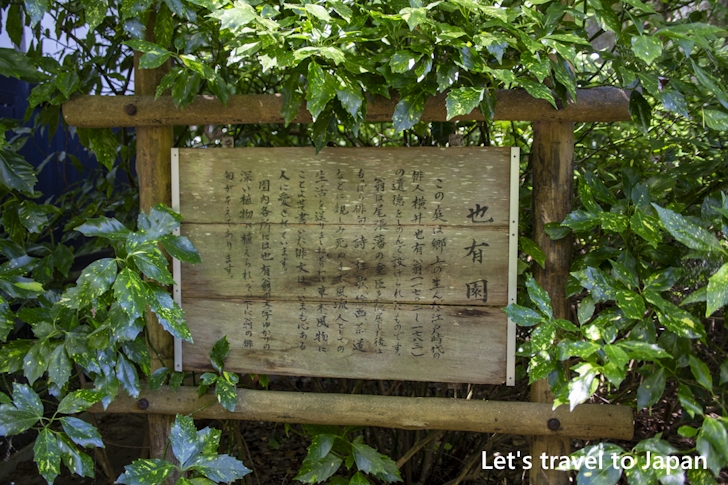
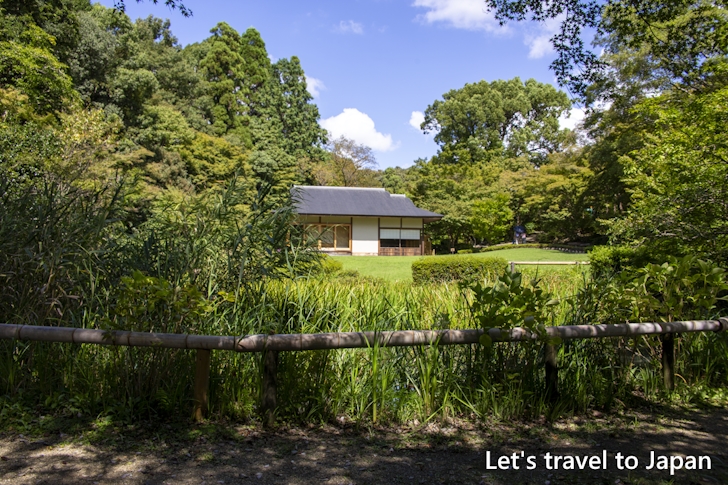
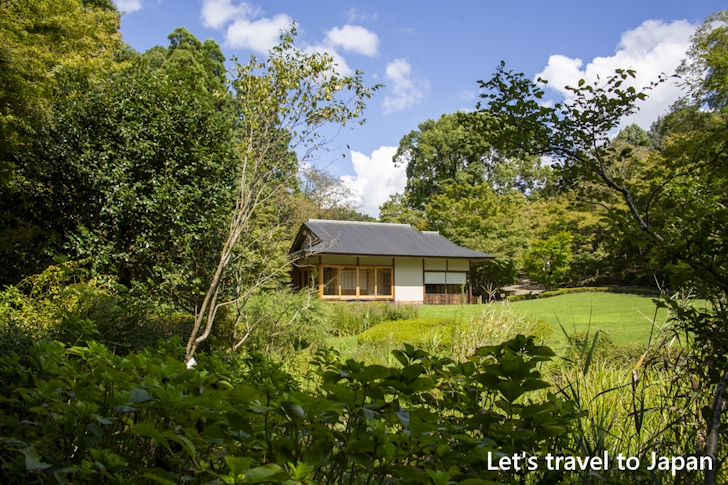
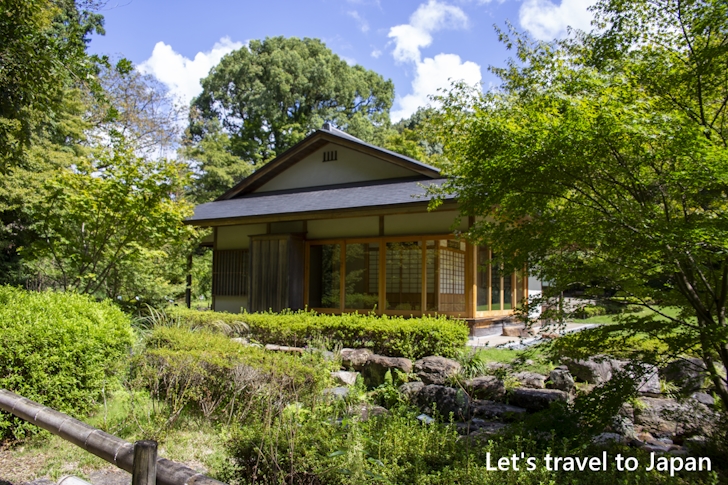
Sosetsuan can be used for tea parties and other events by reservation.
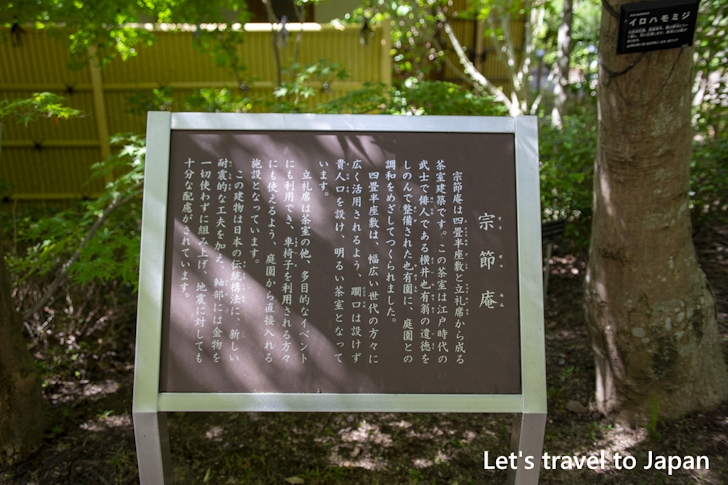

Oku-Ike
There is a slightly larger Oku-Ike beyond Yayuen.
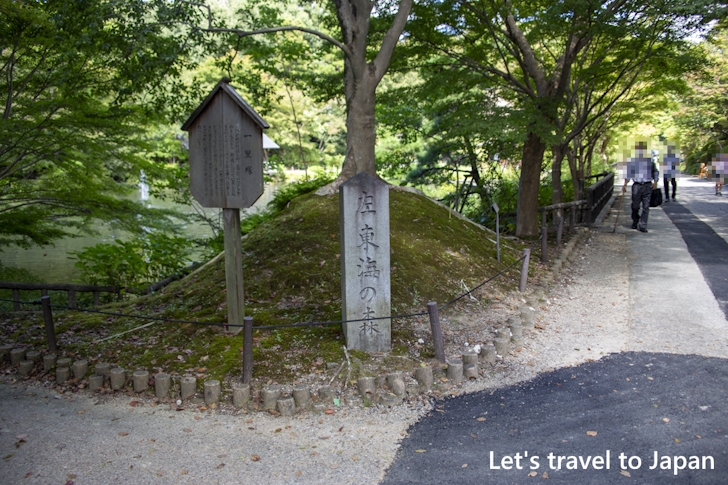
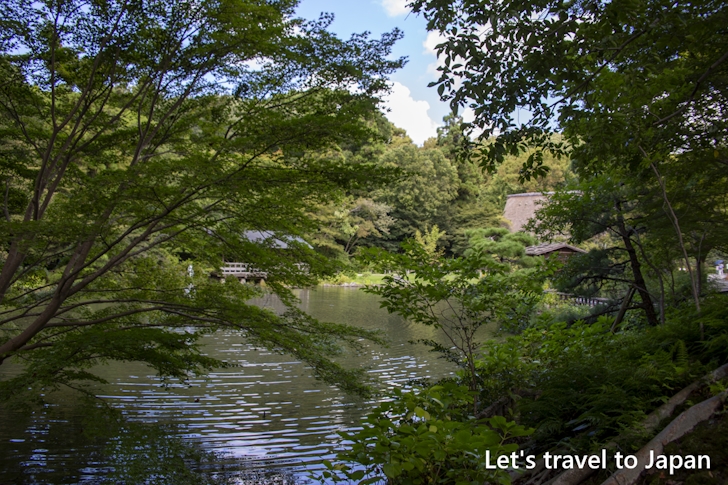
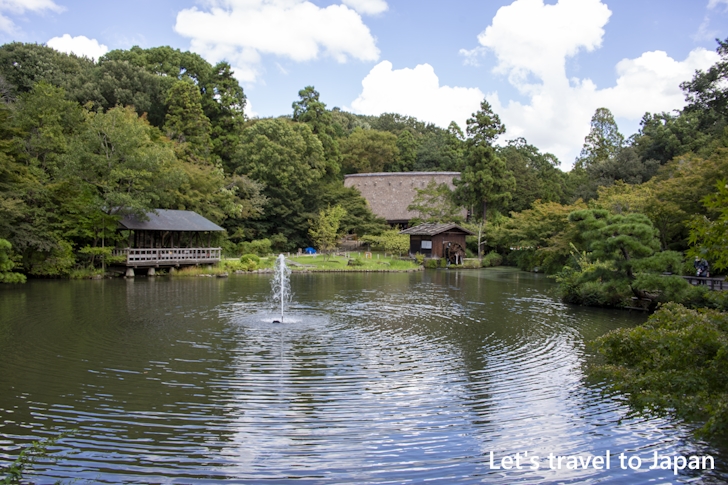
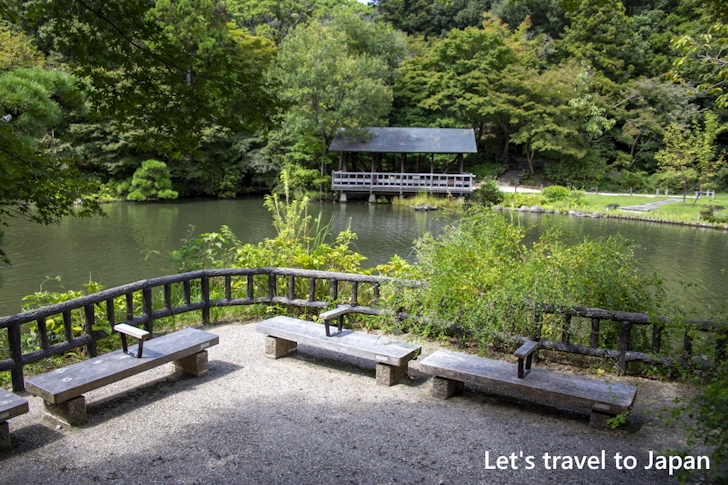
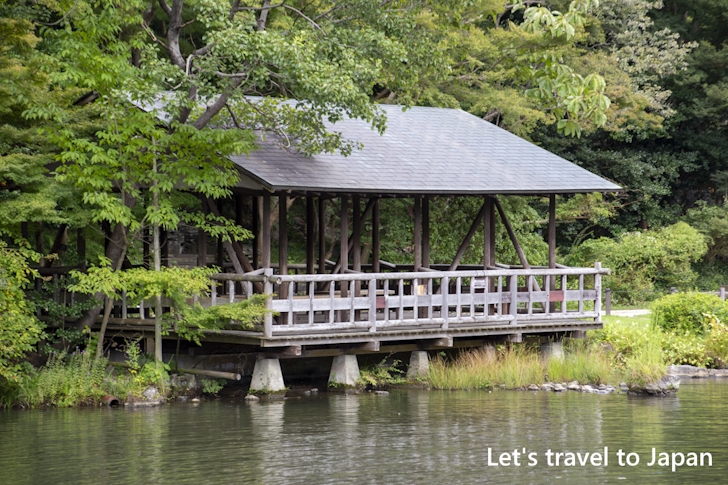
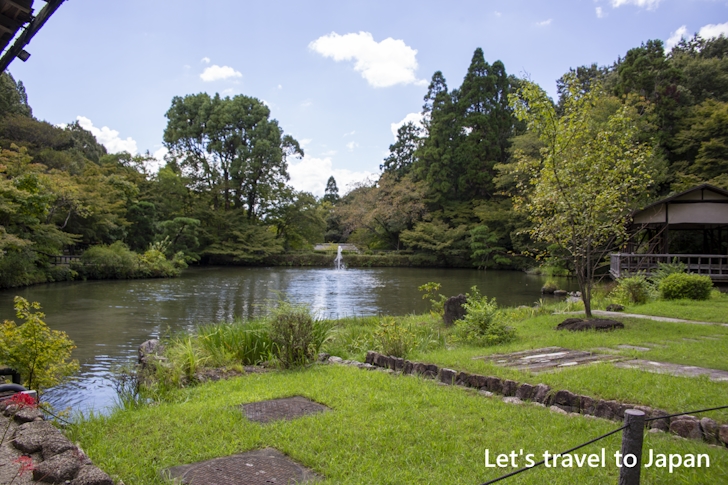
During the autumn foliage season, the autumn leaves around Oku-Ike are very beautiful.
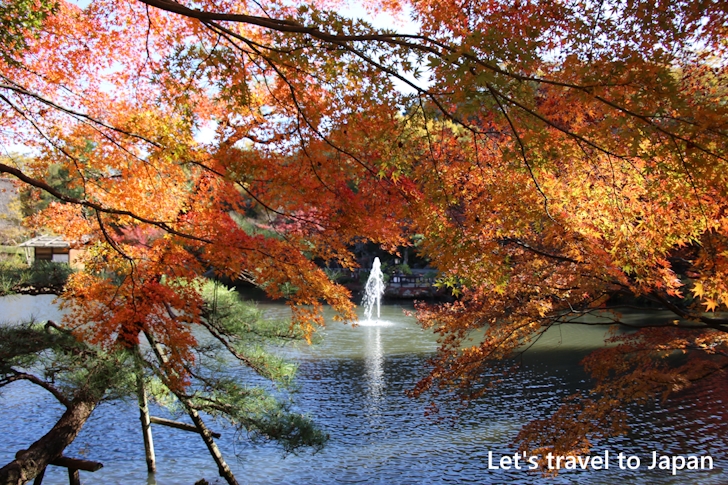
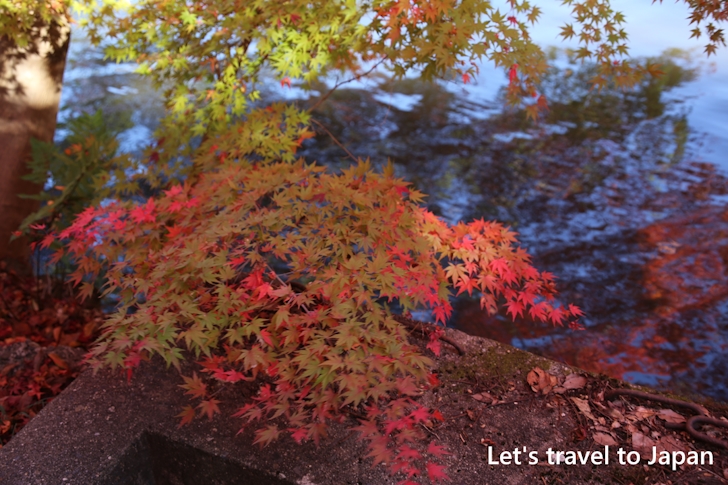
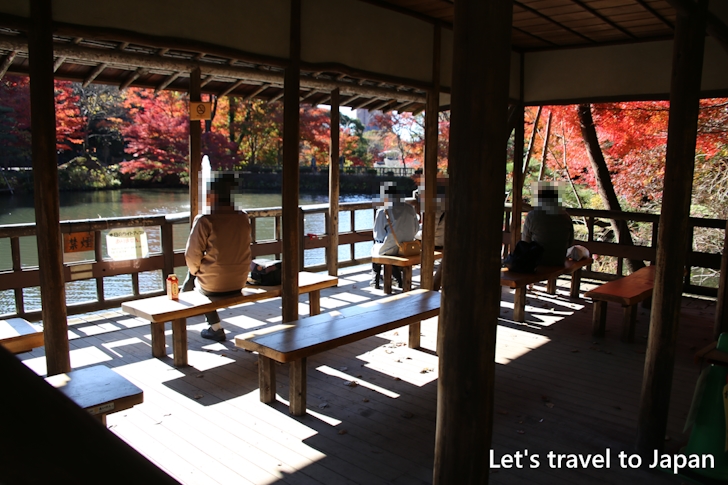
The watermill at the Oku-Ike was built with donations.
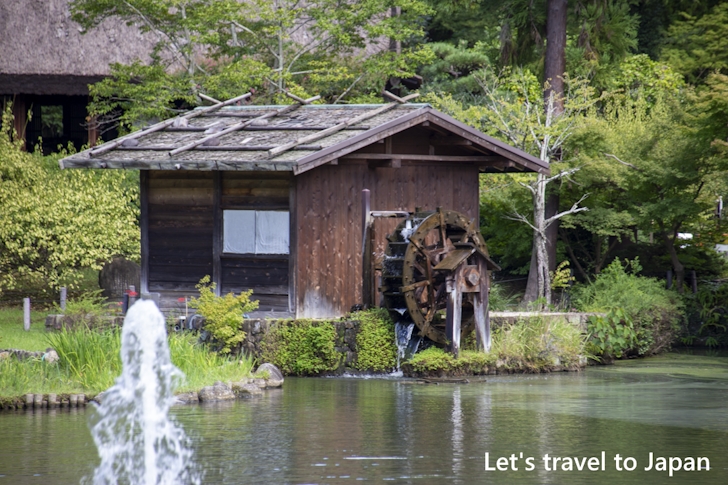
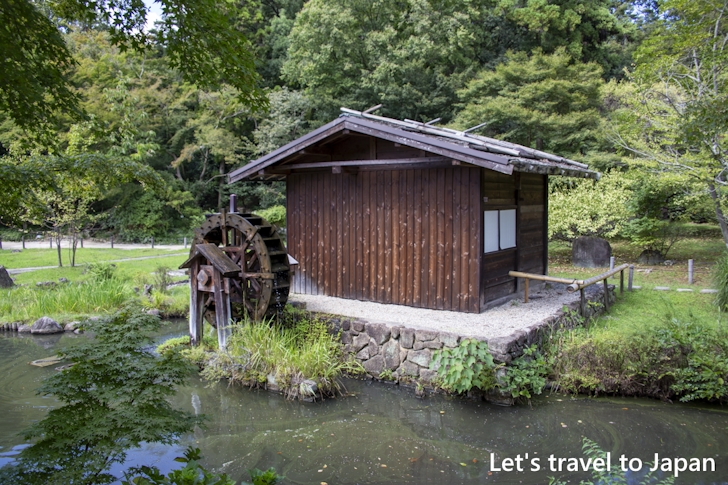
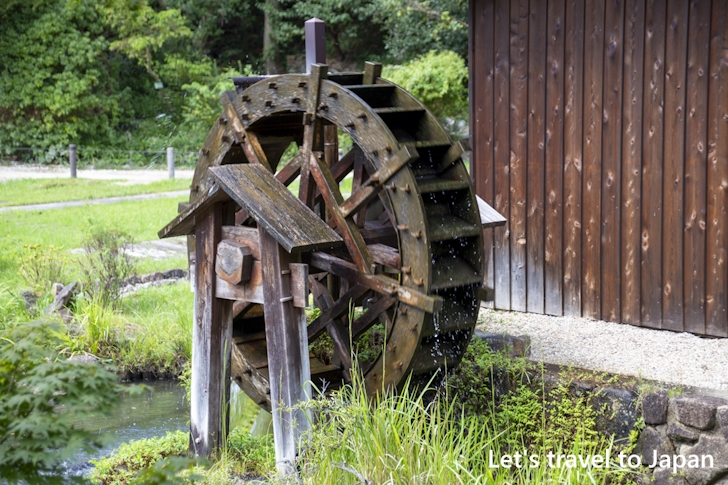
Gassho-zukuri house
Near the Oku-Ike, there is a traditional Gassho-zukuri house. This building was relocated to the Higashiyama Botanical Garden because its original location, the Omaki hamlet in Shirakawa Village, Gifu Prefecture, was to be submerged due to dam construction. It was built in 1842.
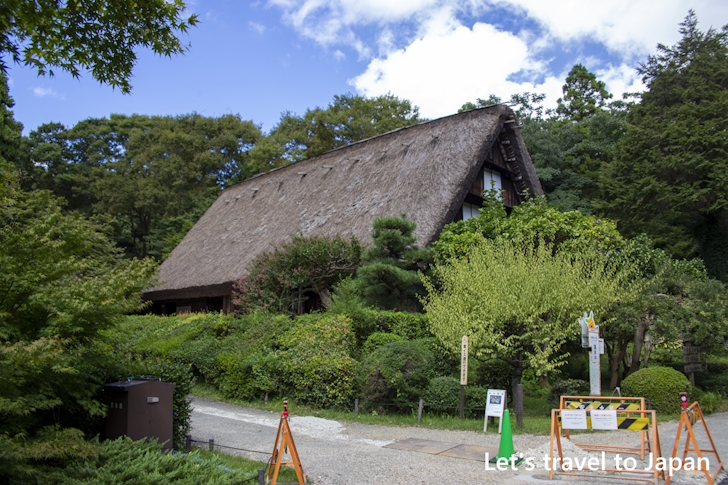
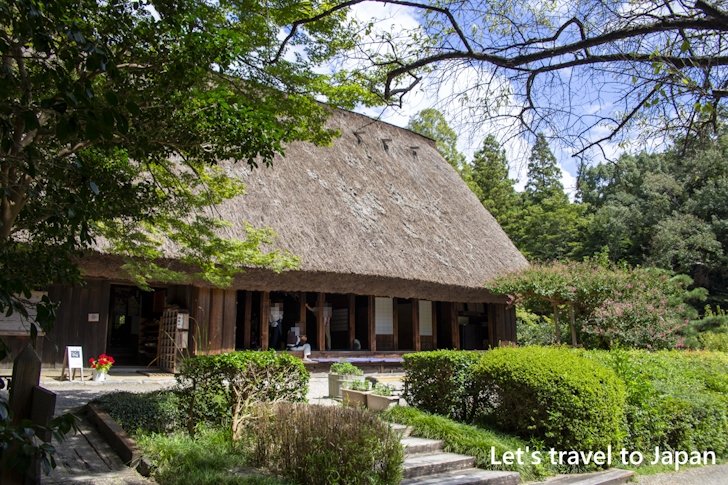

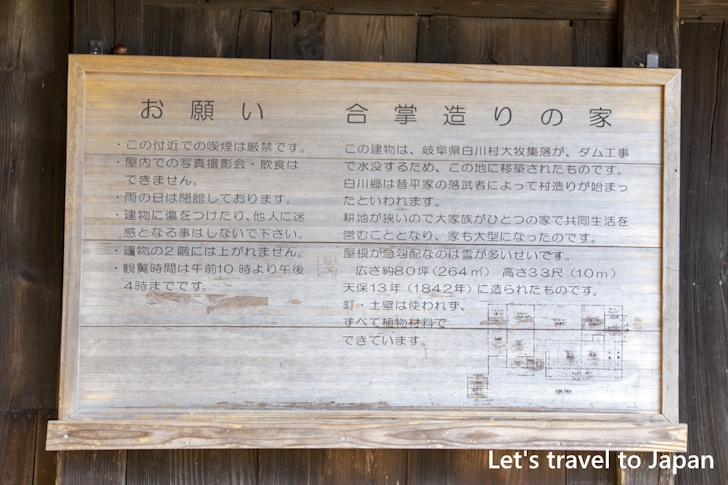
You can enter and explore the inside of the house. The admission fee for the tour is free. Unfortunately, you cannot go up to the second floor or higher.

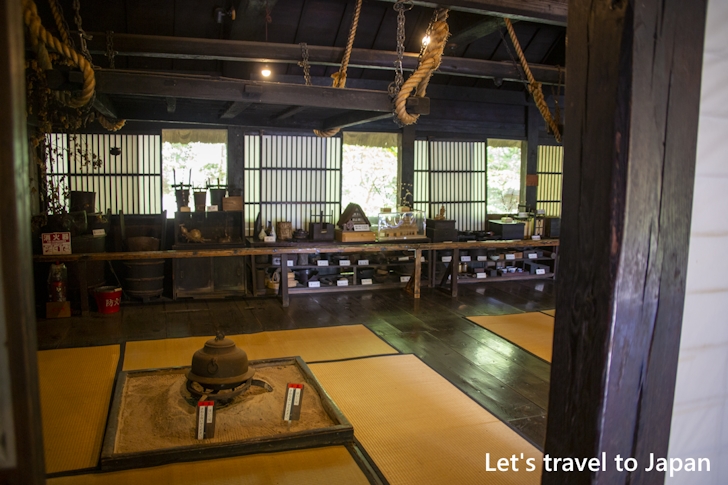
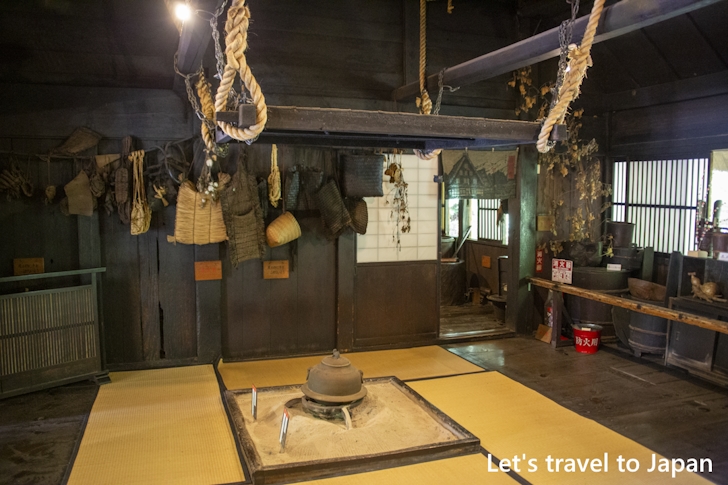
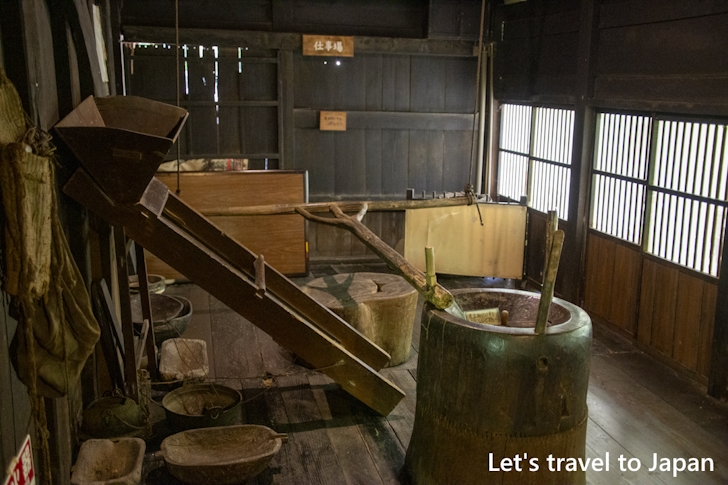
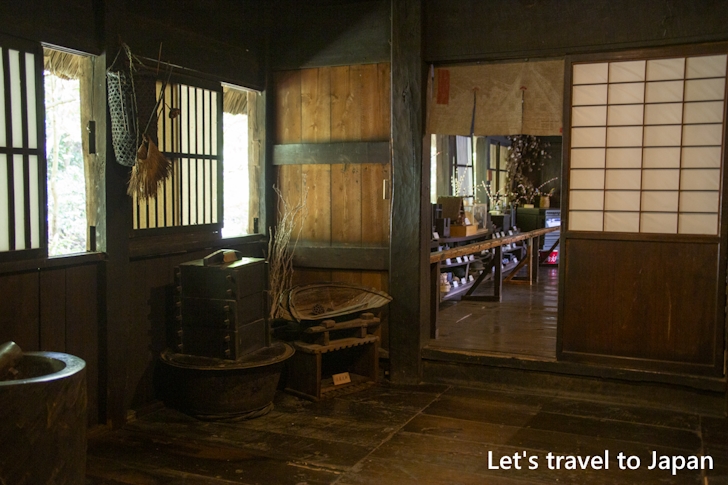
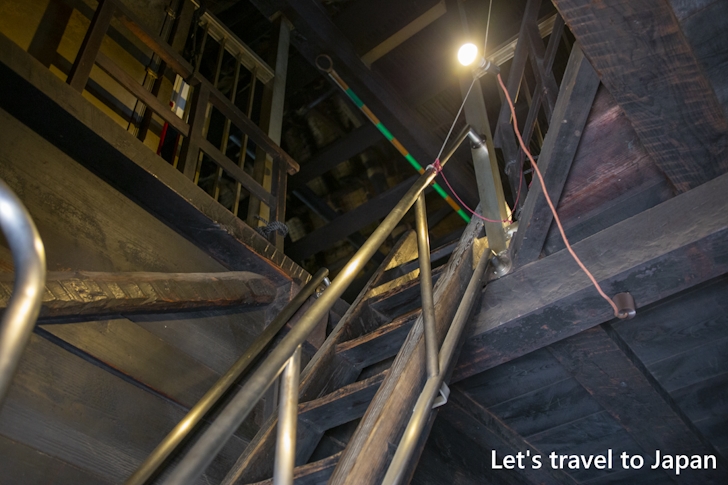
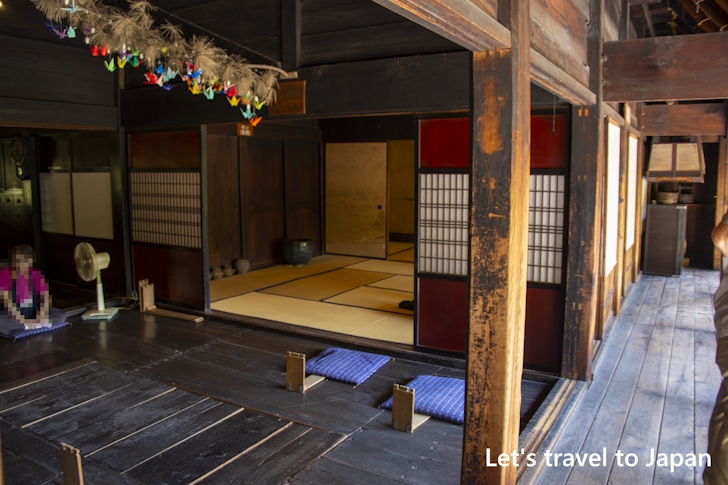
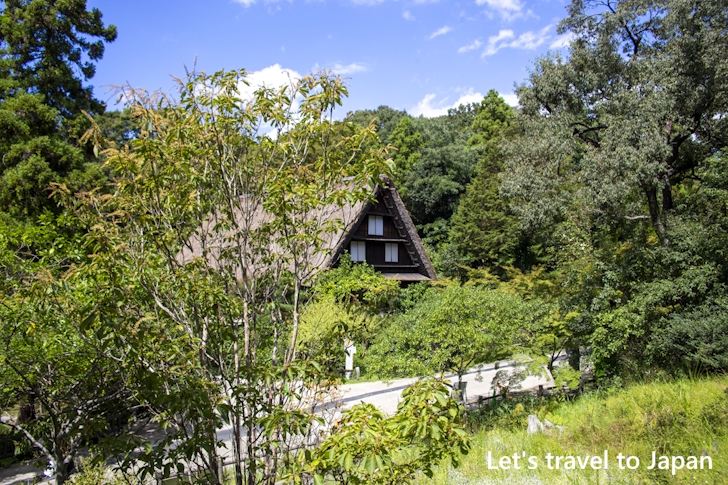
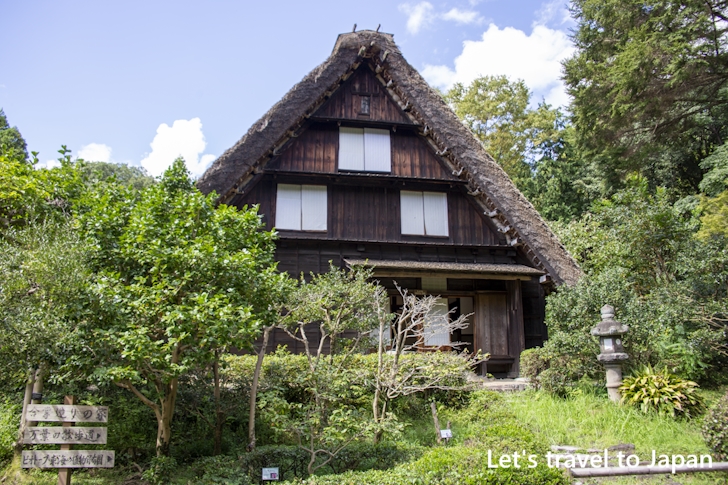
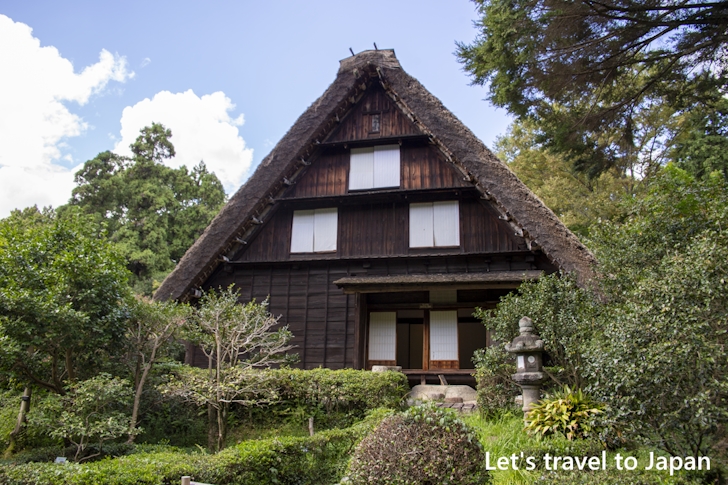
Koyo-seki
Within the Higashiyama Botanical Garden, remnants of the Higashiyama Ancient Kiln Sites (Koyo-seki) are preserved. A kiln is an oven used to bake ceramics. The Higashiyama area is home to many ancient kiln sites, and the ones preserved in the botanical garden are among them.
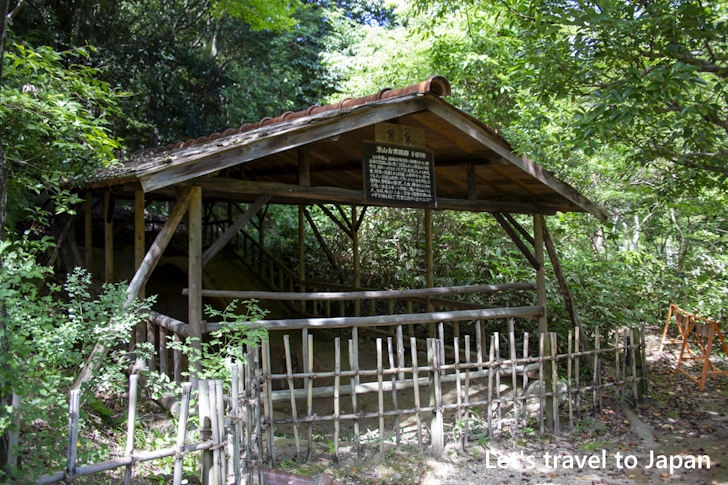
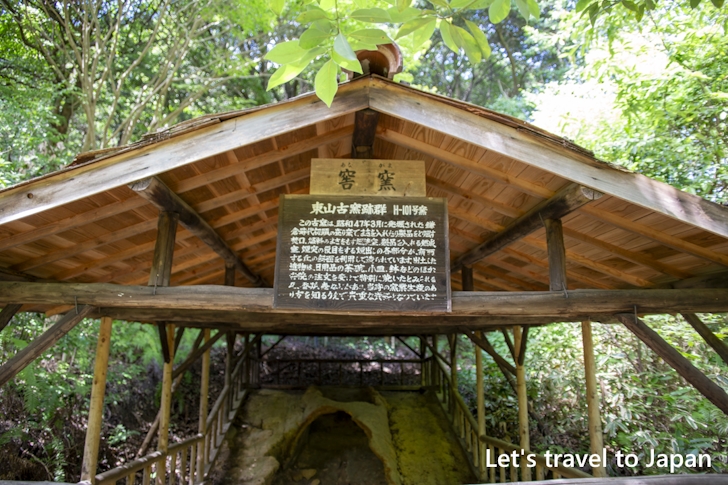
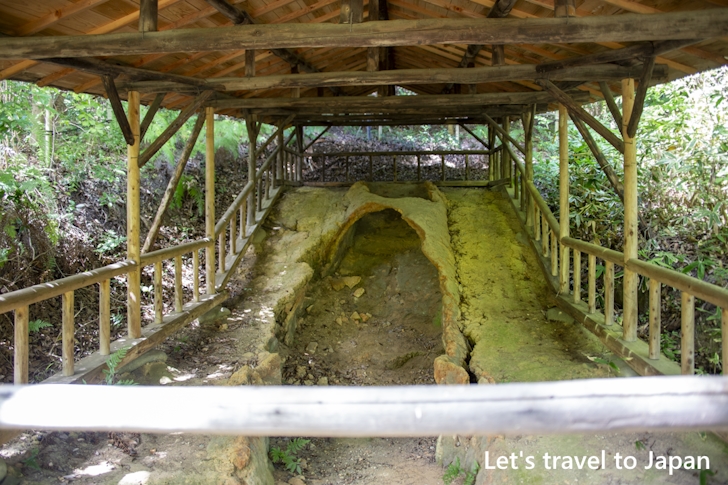
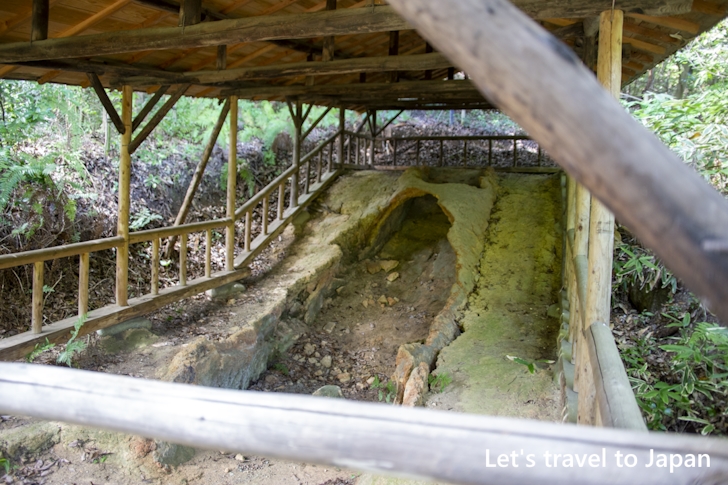
They are located on the northern slope near where the Japanese garden is situated.
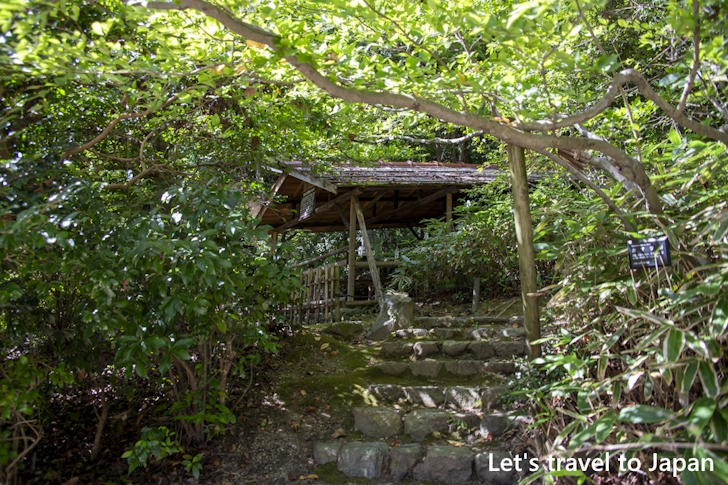
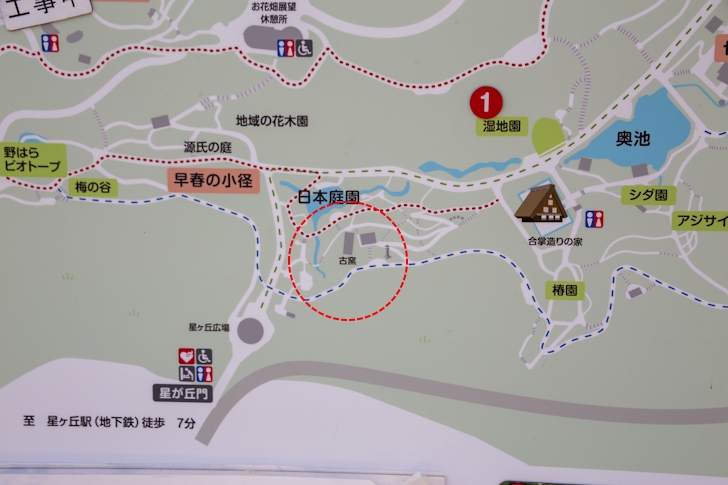
Manyo promenade
There is a Manyo promenade inside the Japanese garden.
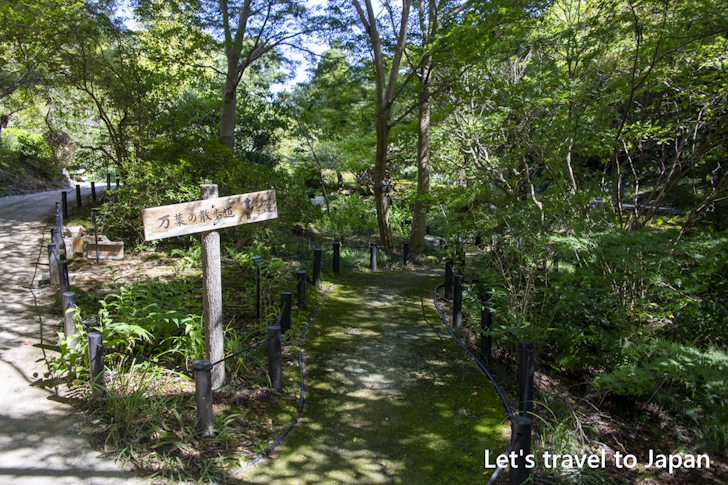
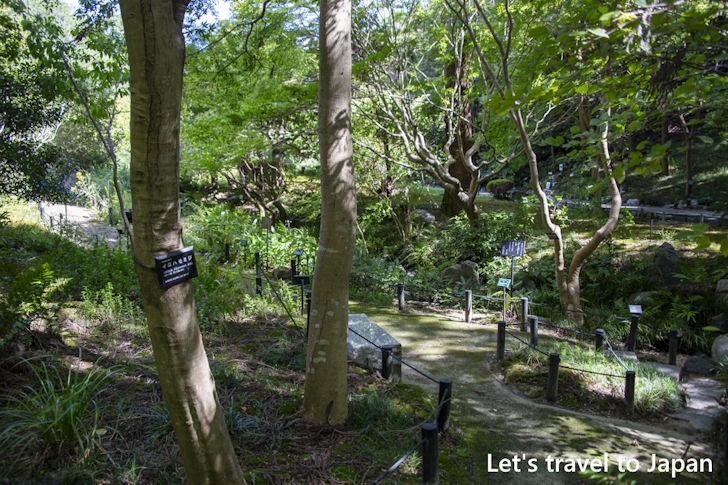
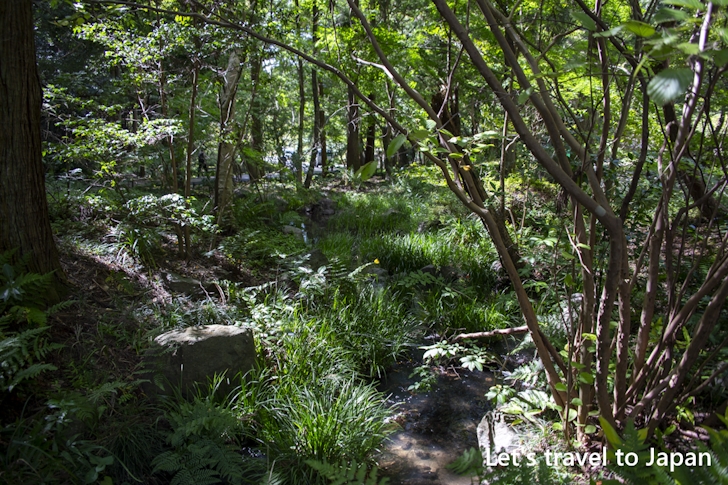
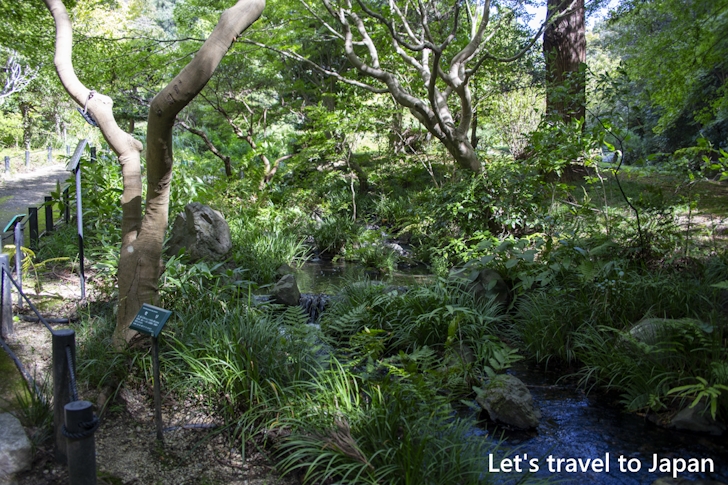
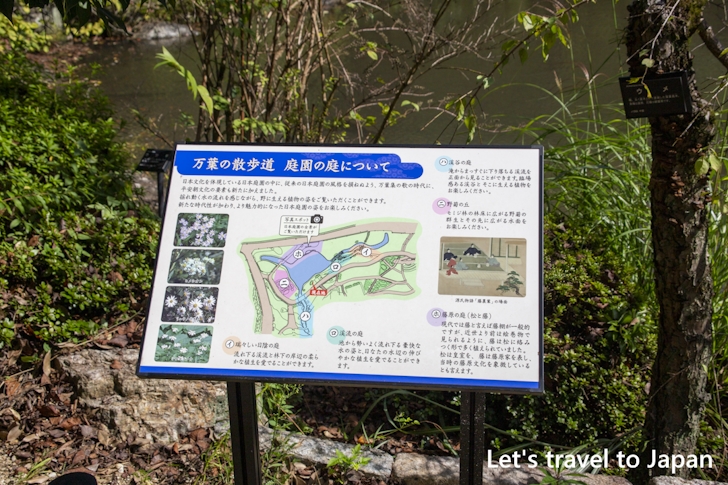

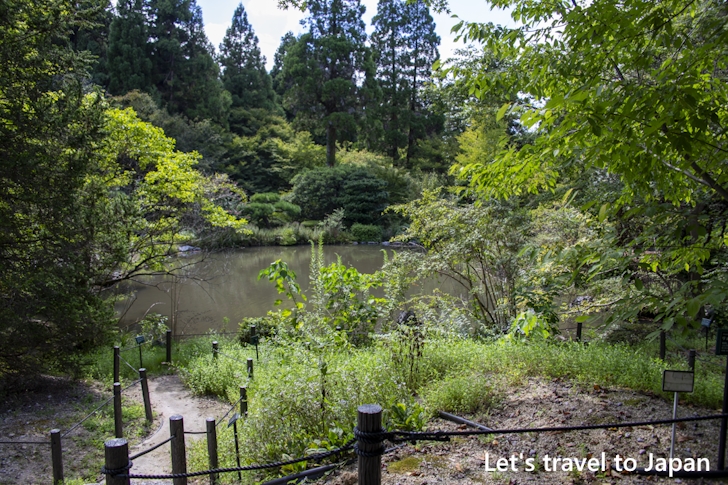
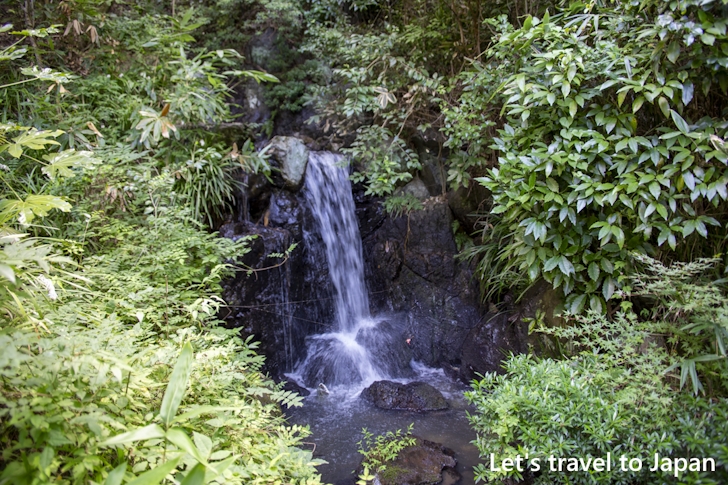
Flower Field
Climbing up to the top of the hill in the botanical garden, there is a flower field. As of September 2023, the flower field is undergoing renovation and is not available for viewing. It is scheduled to reopen at the end of 2023.
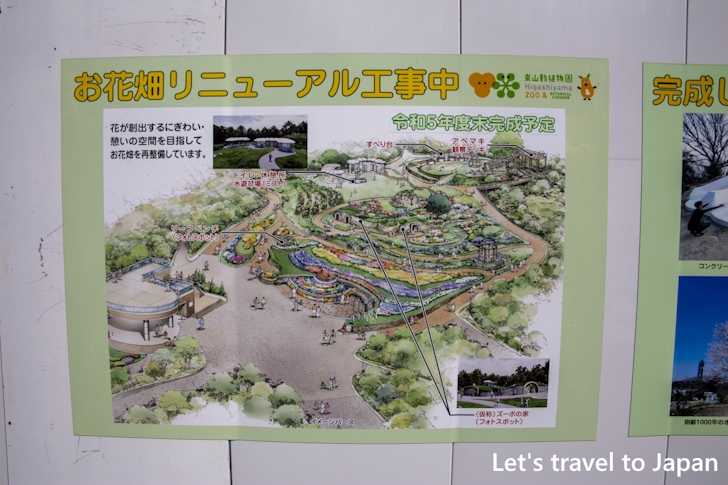
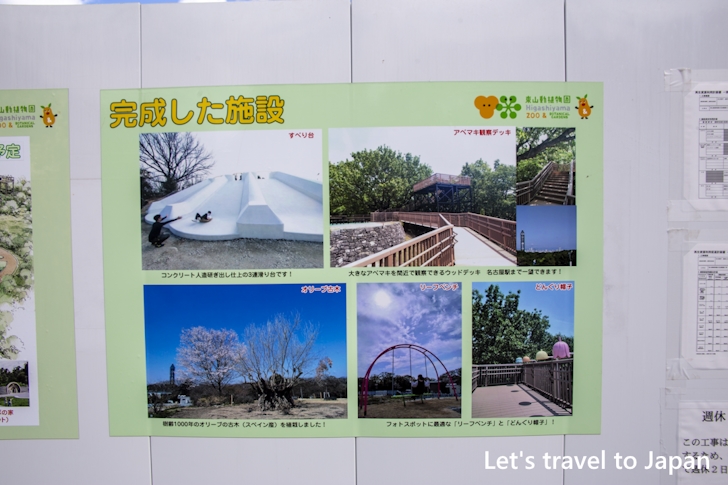
I will post a photo of the flower field taken in 2019.
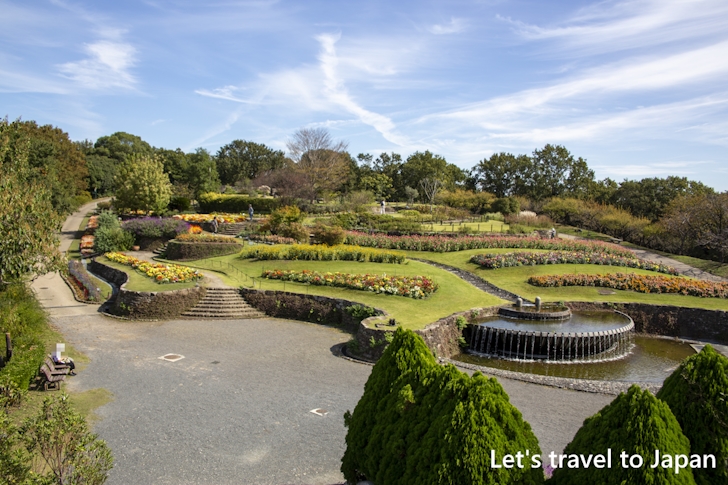
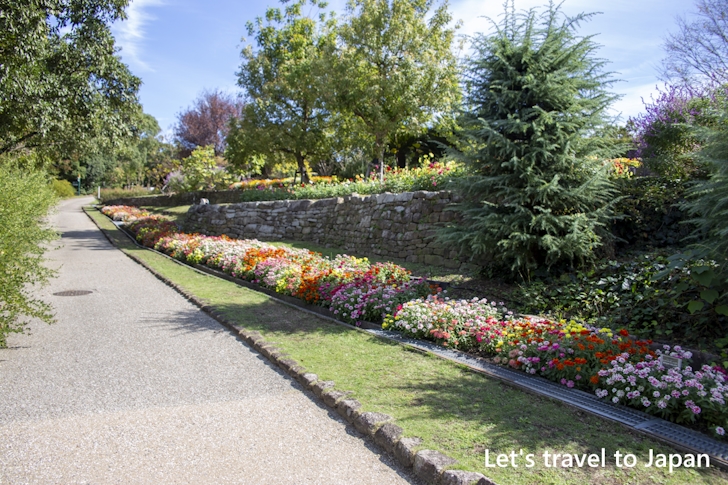
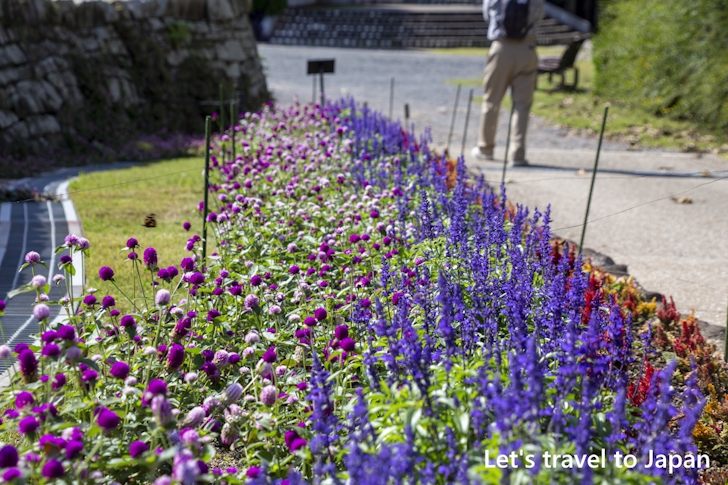

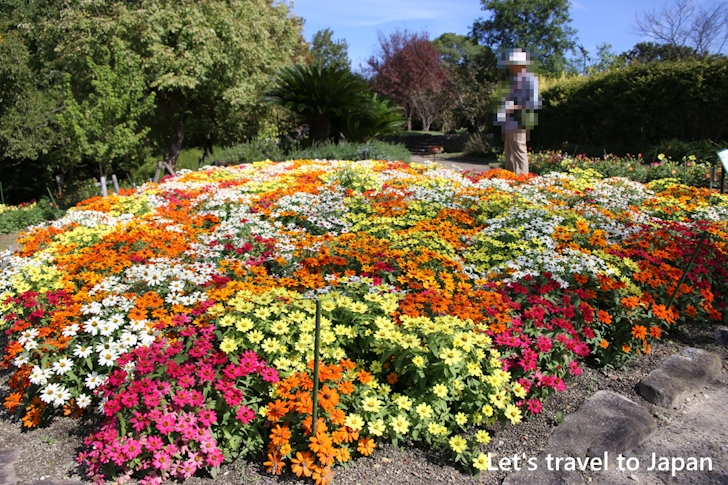
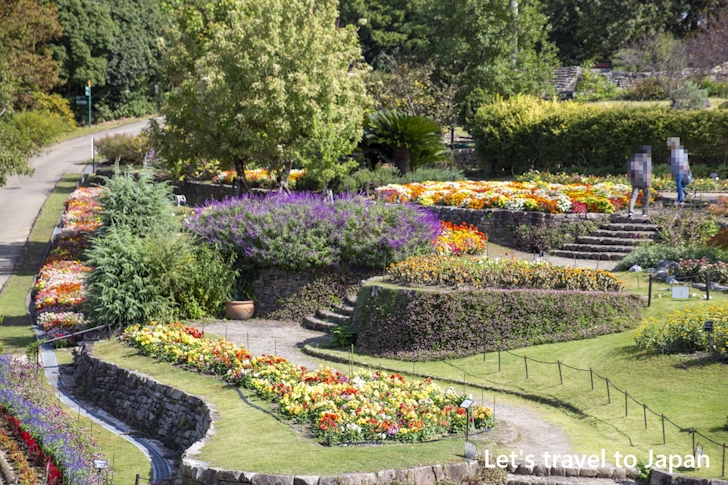
Cherry Blossom Corridor
Near the flower field, there is a cherry blossom corridor. With 1,000 cherry trees of 100 varieties planted, you can enjoy a breathtaking view of cherry blossoms in full bloom covering the entire area in spring.
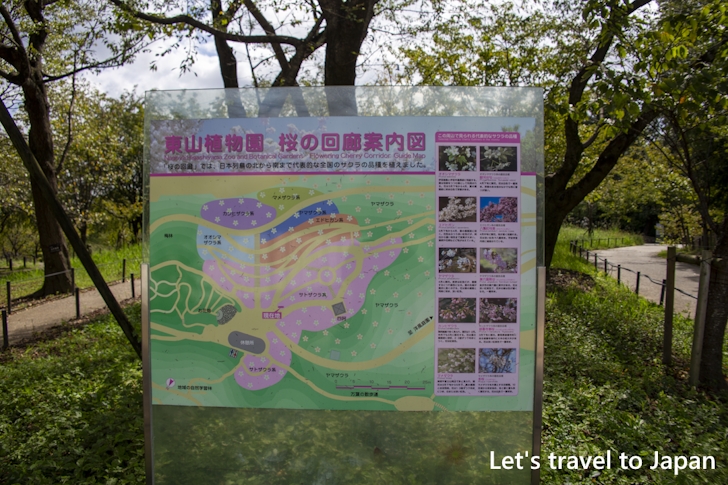
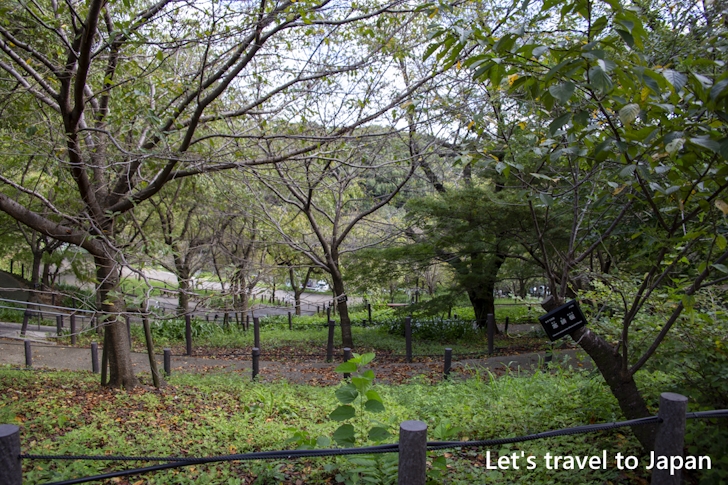
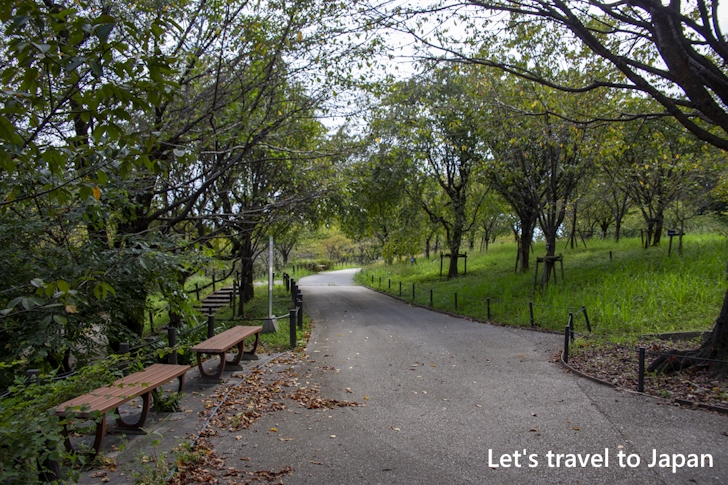
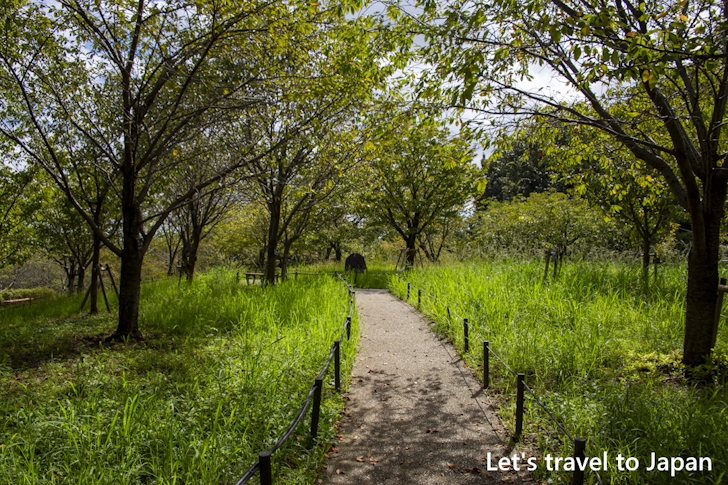
List of photos related to Higashiyama Botanical Gardens
Please see below for a list of photos related to Higashiyama Botanical Gardens.
-- --
Thank you for reading to the end.
( Written by Tatsuo Ikura )